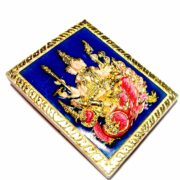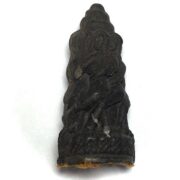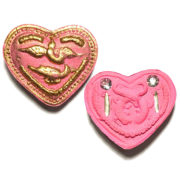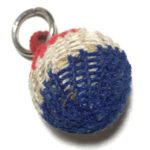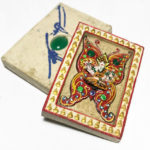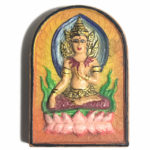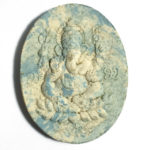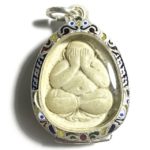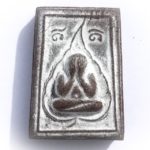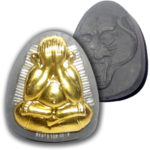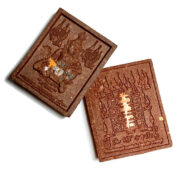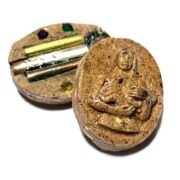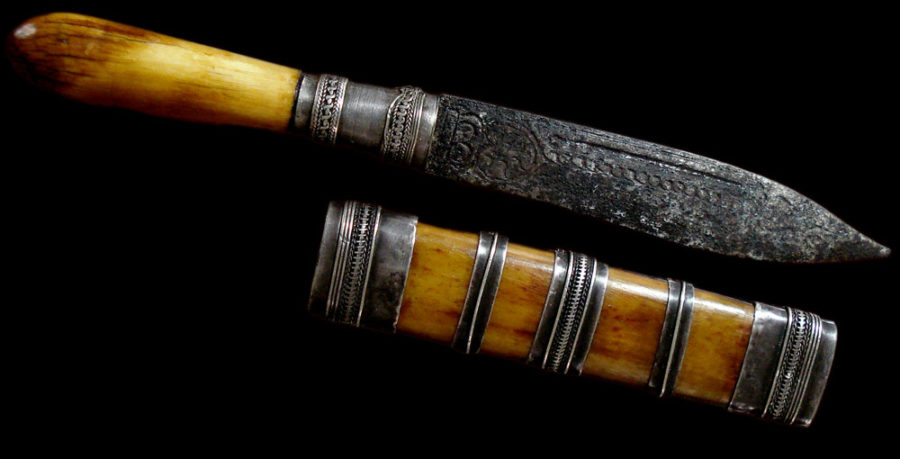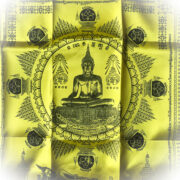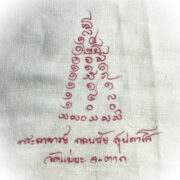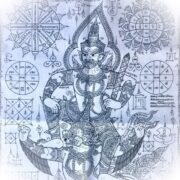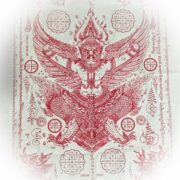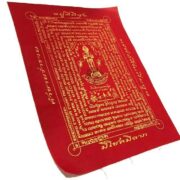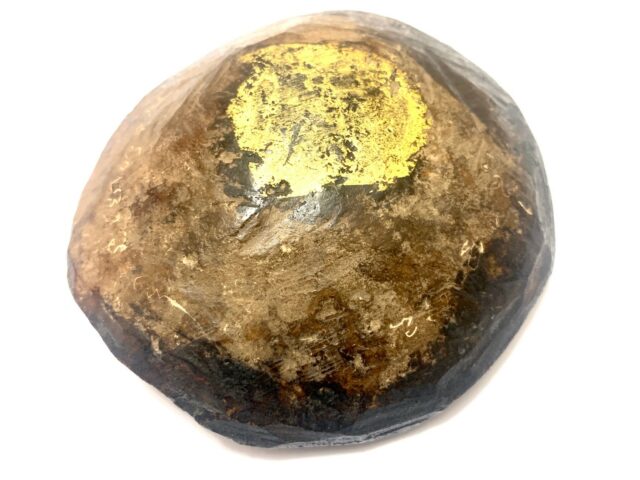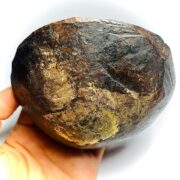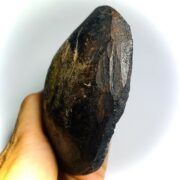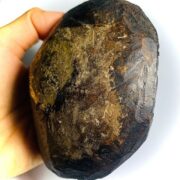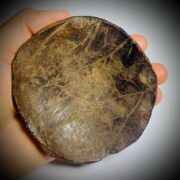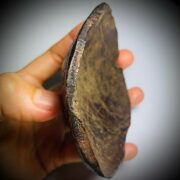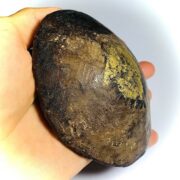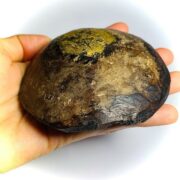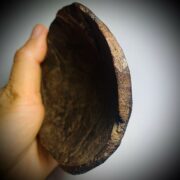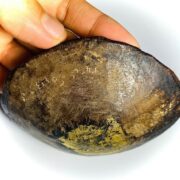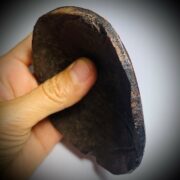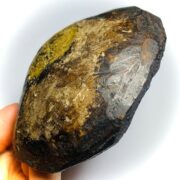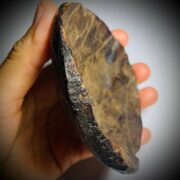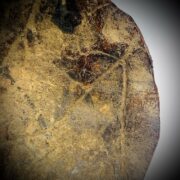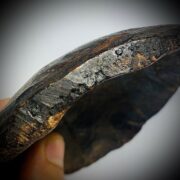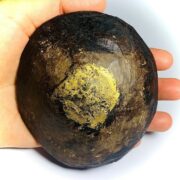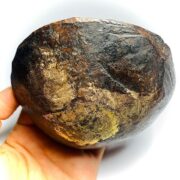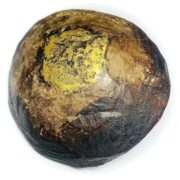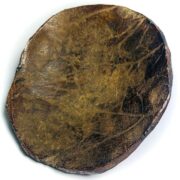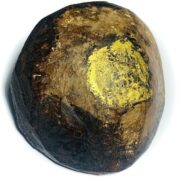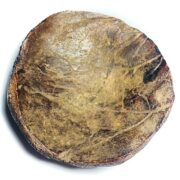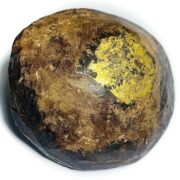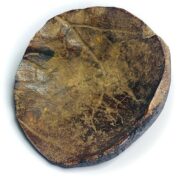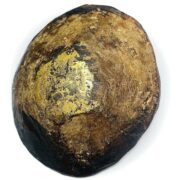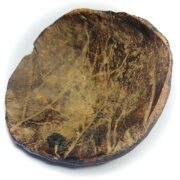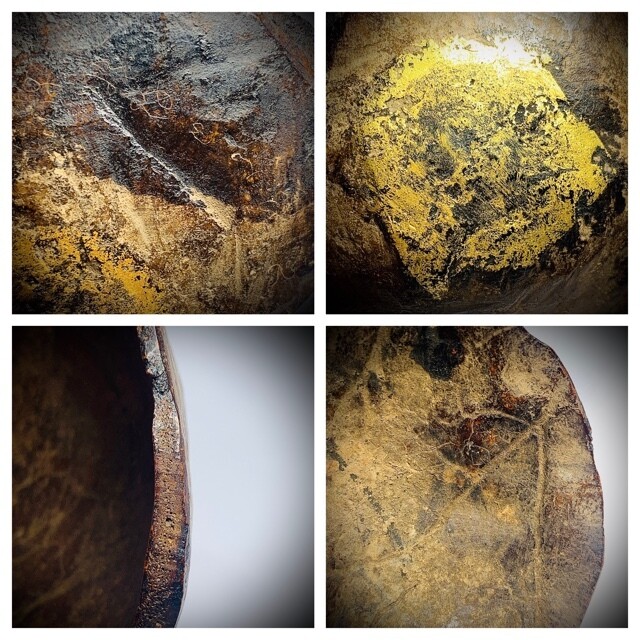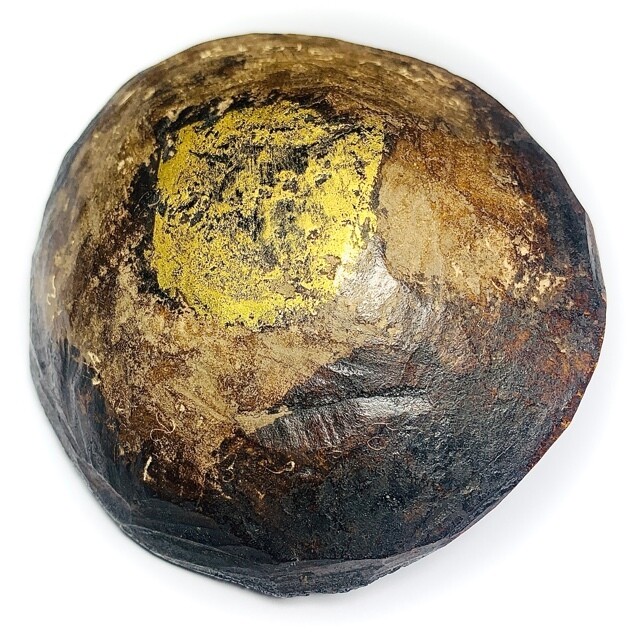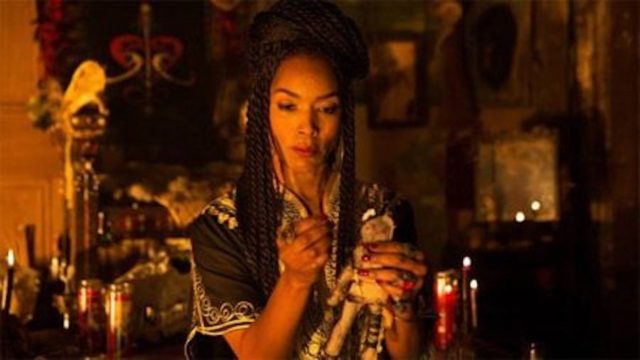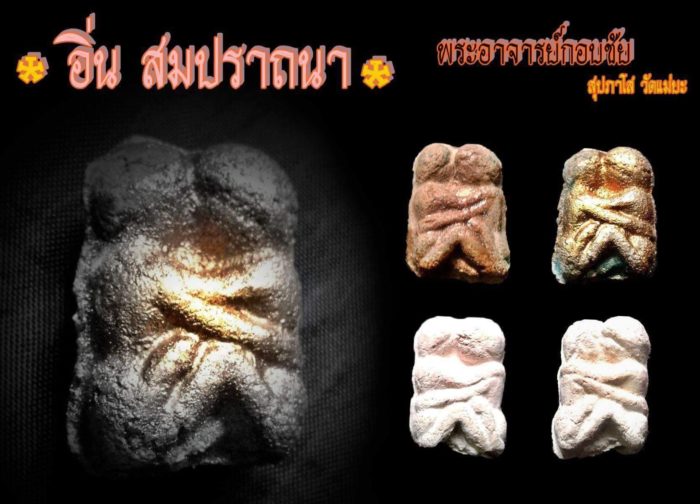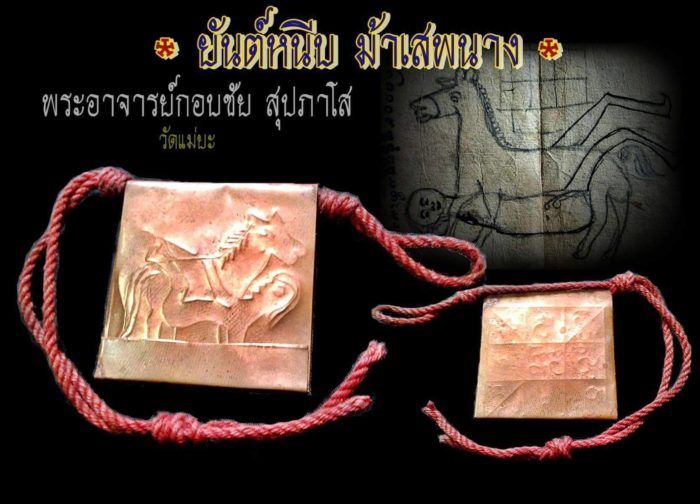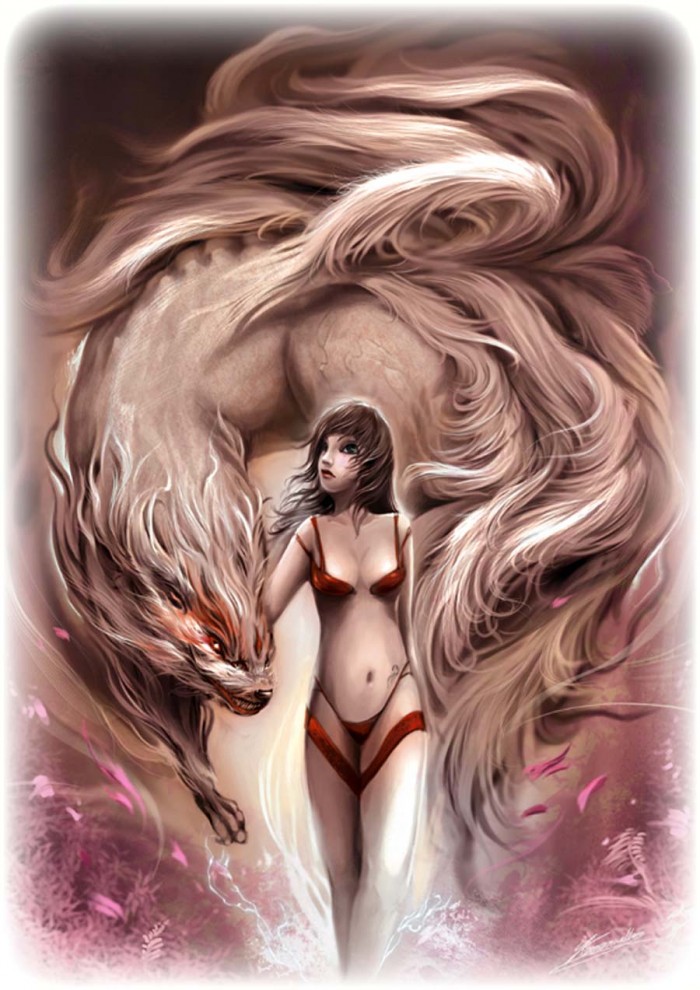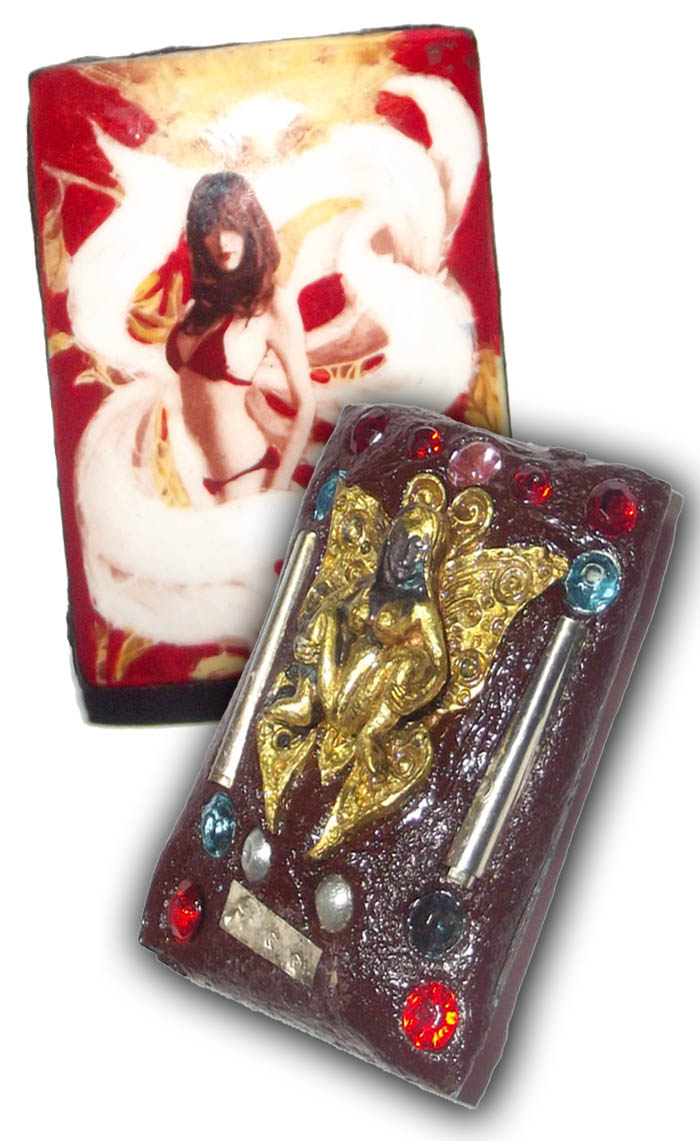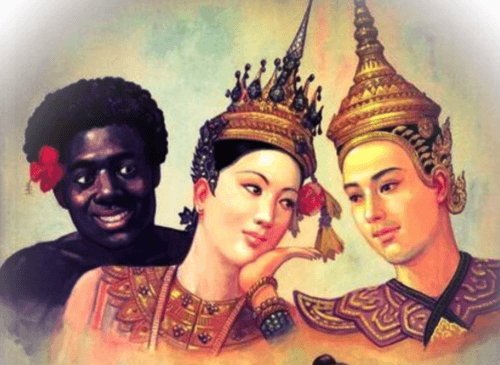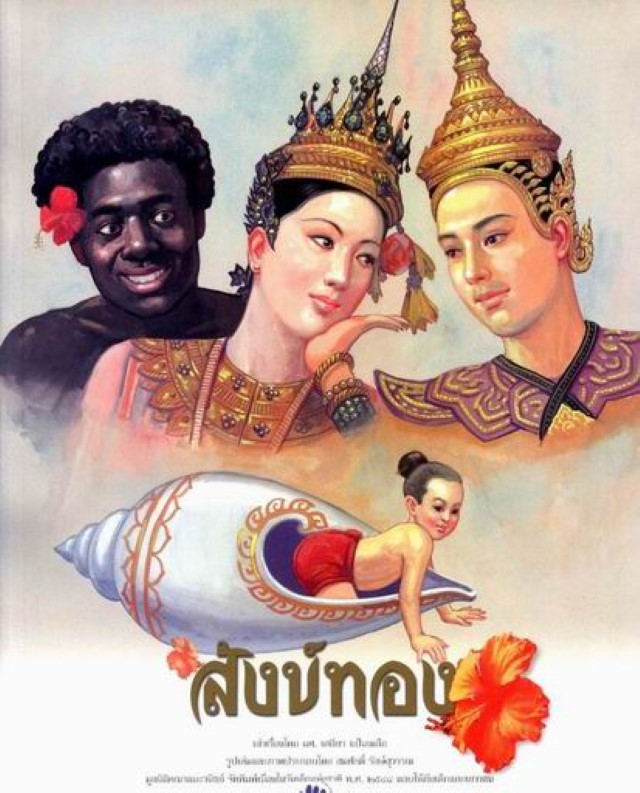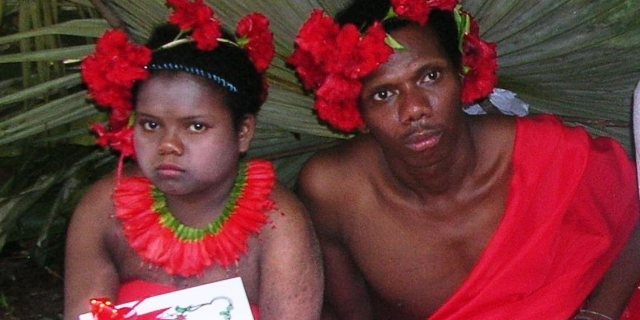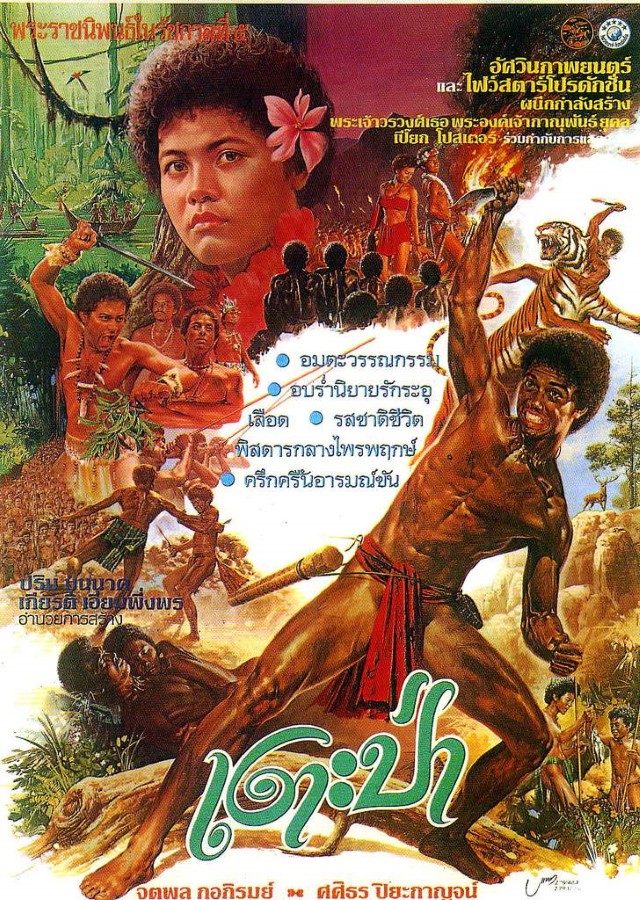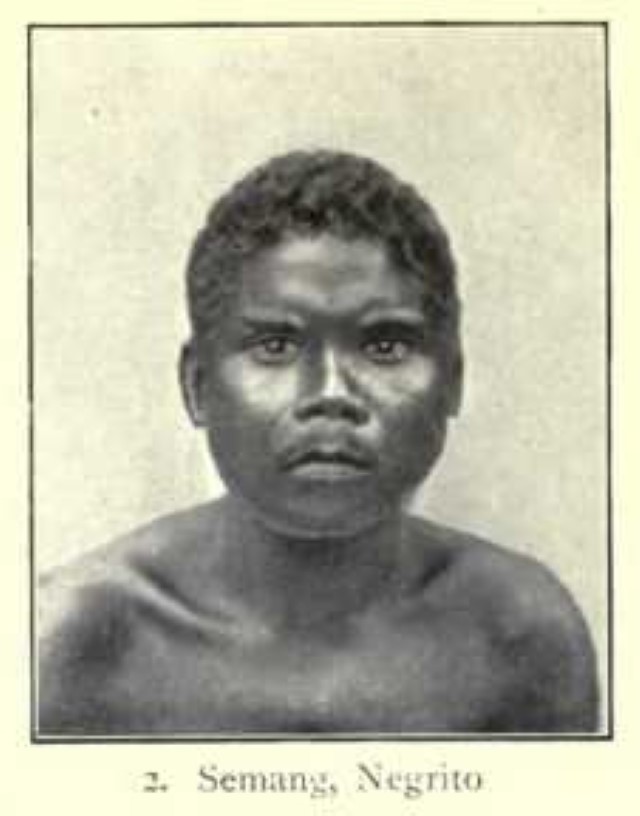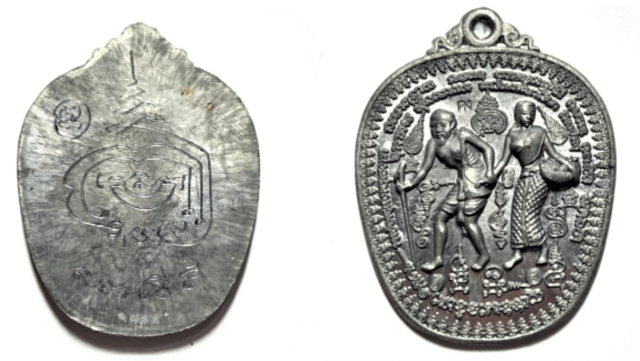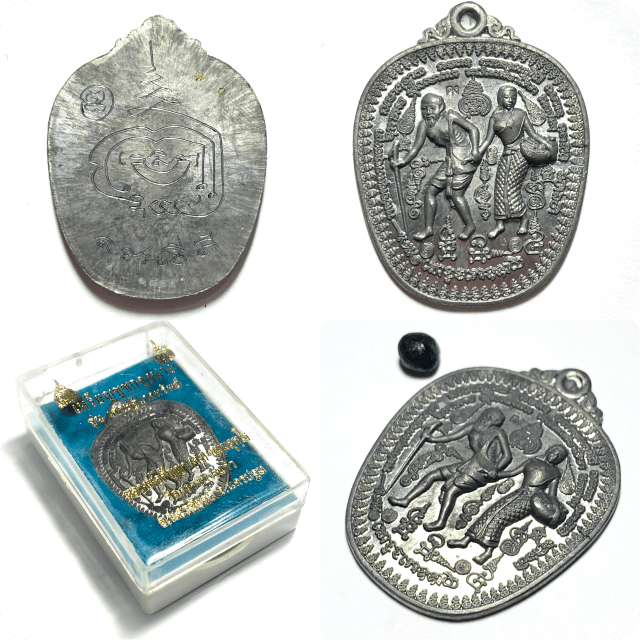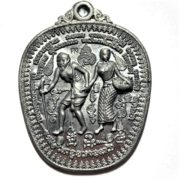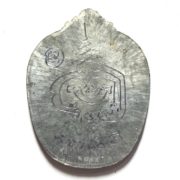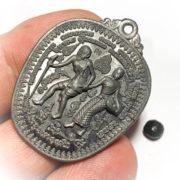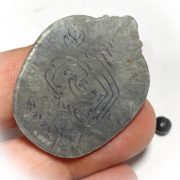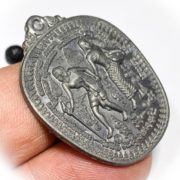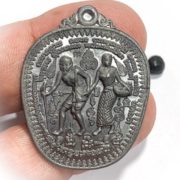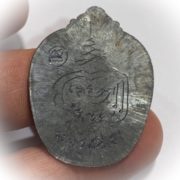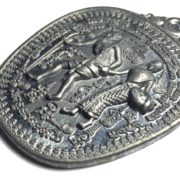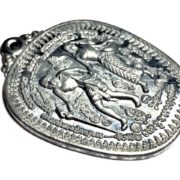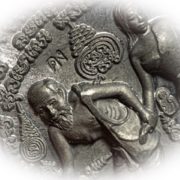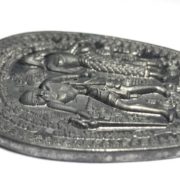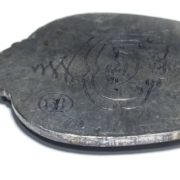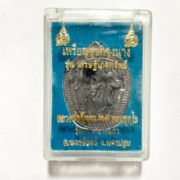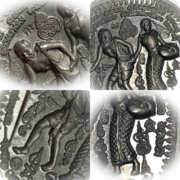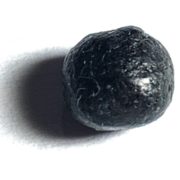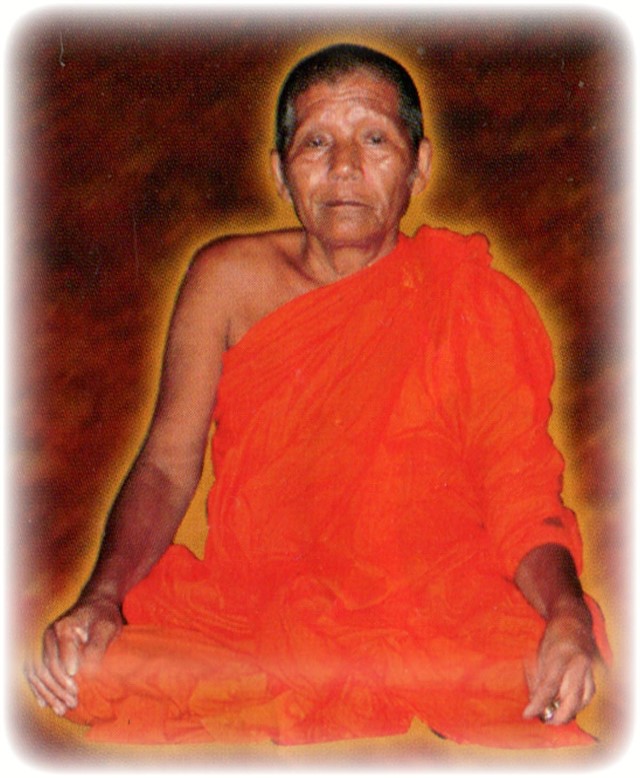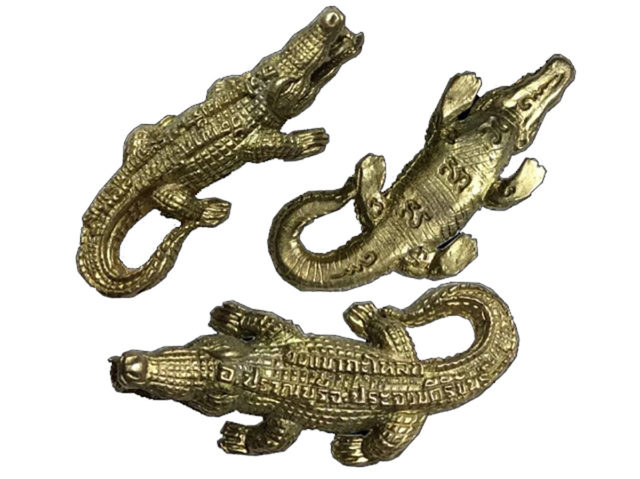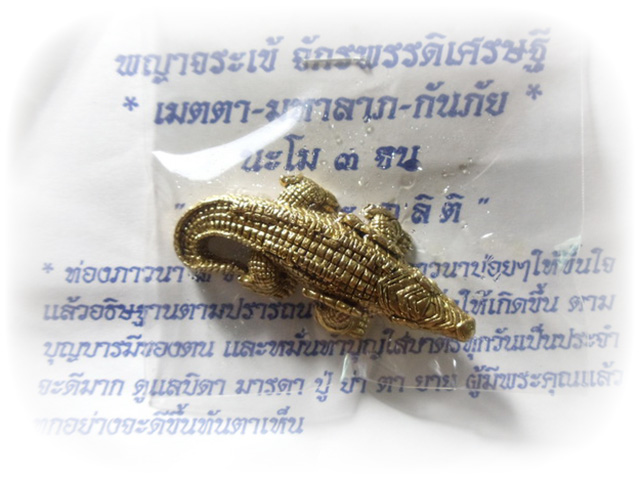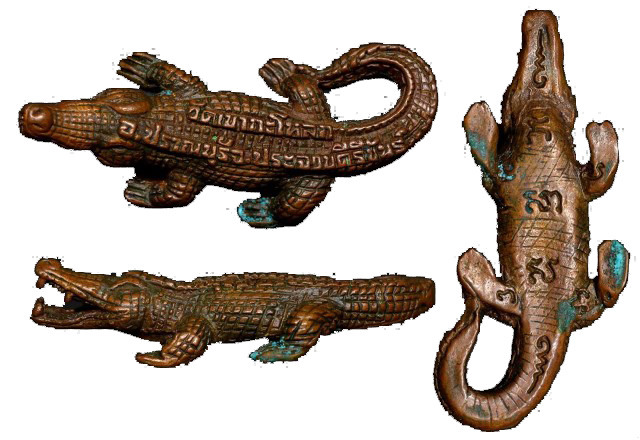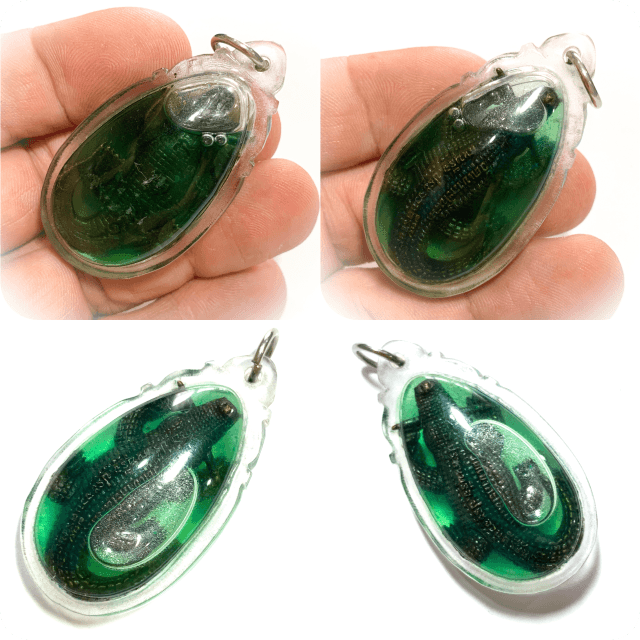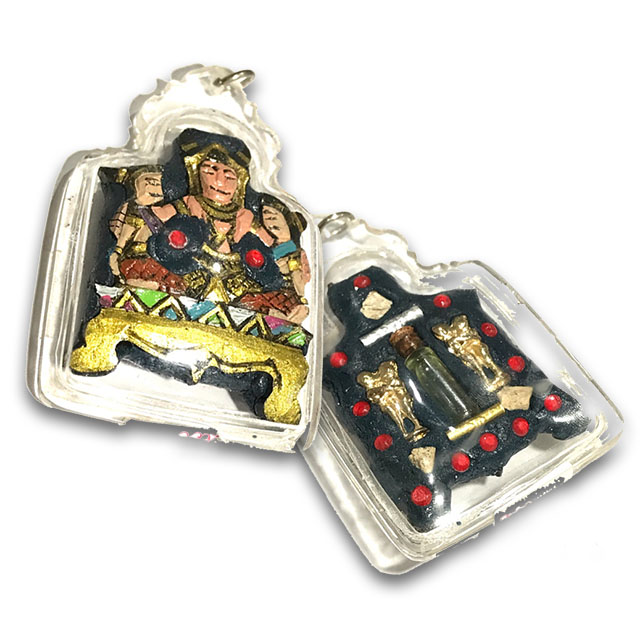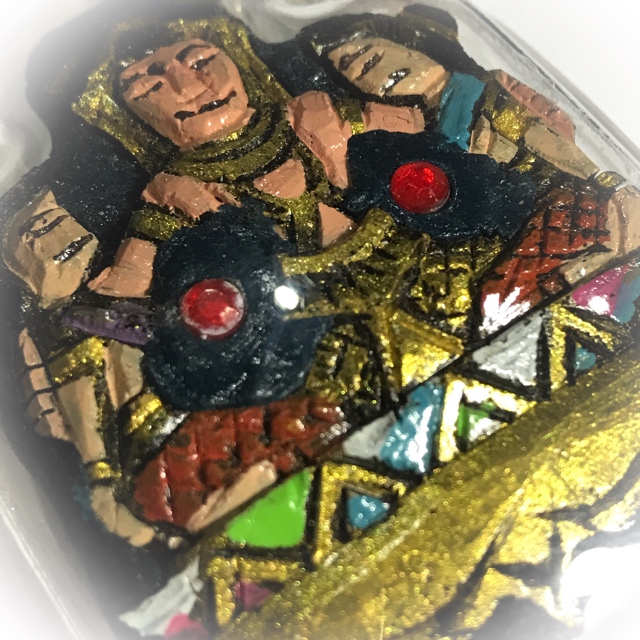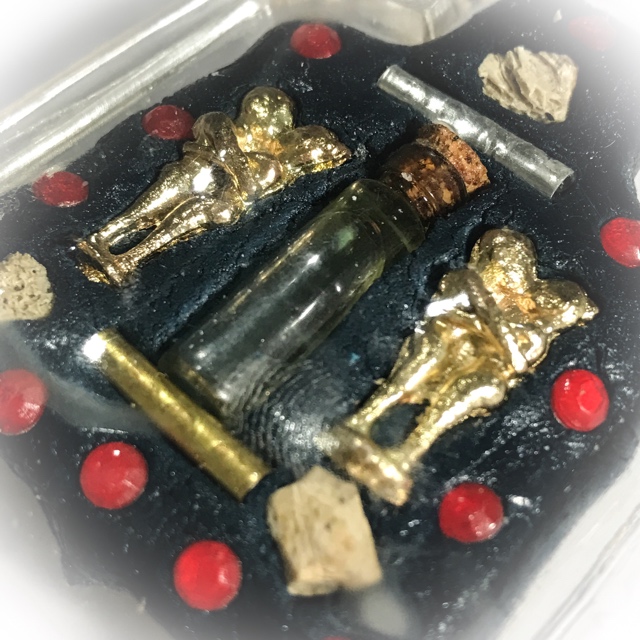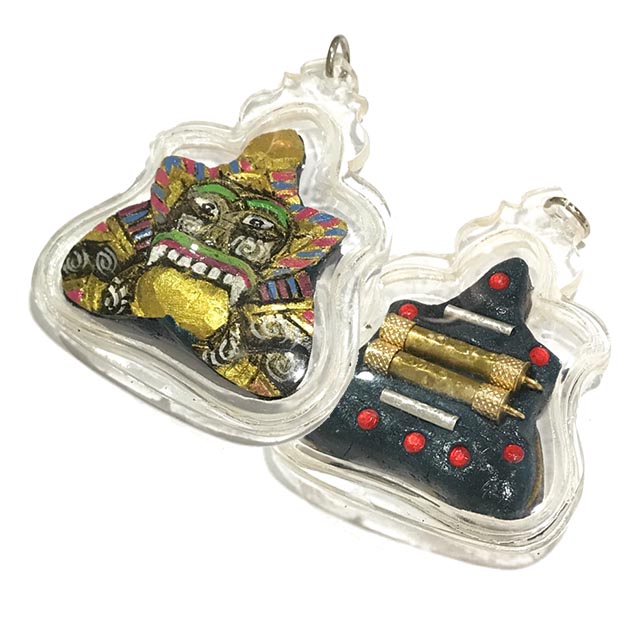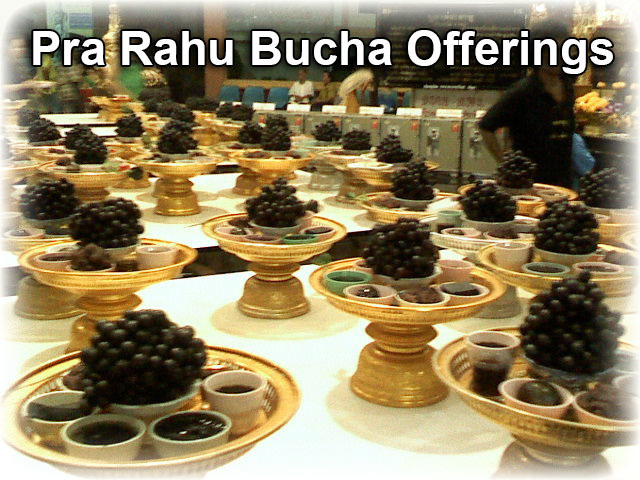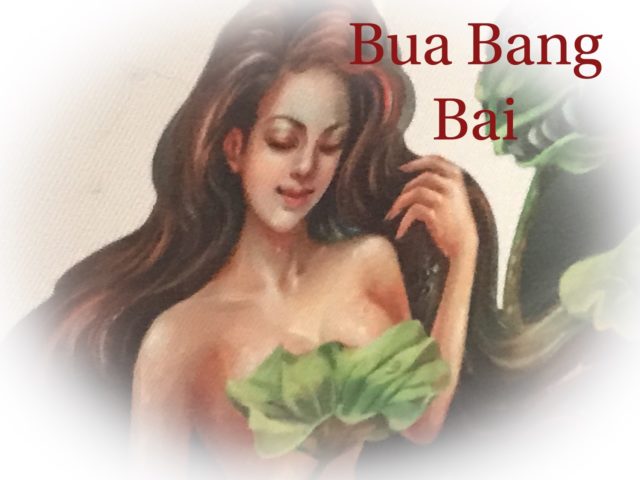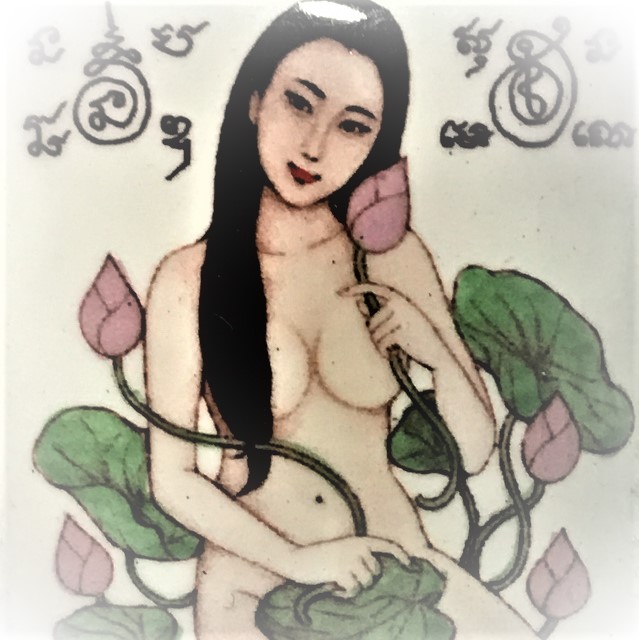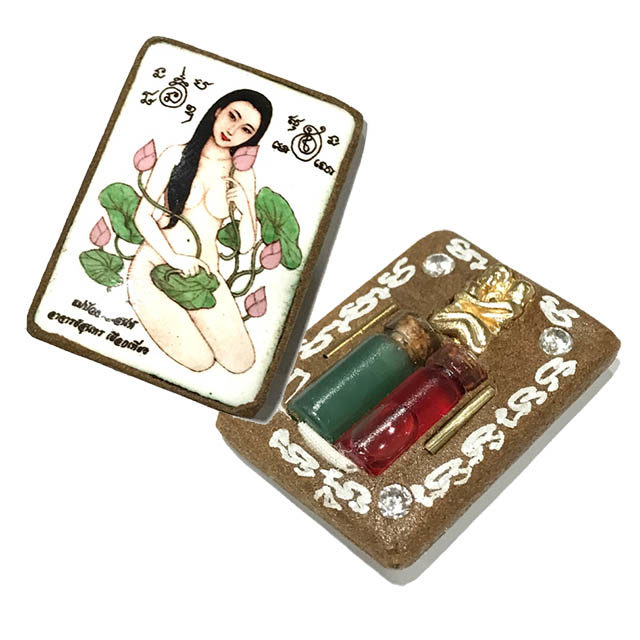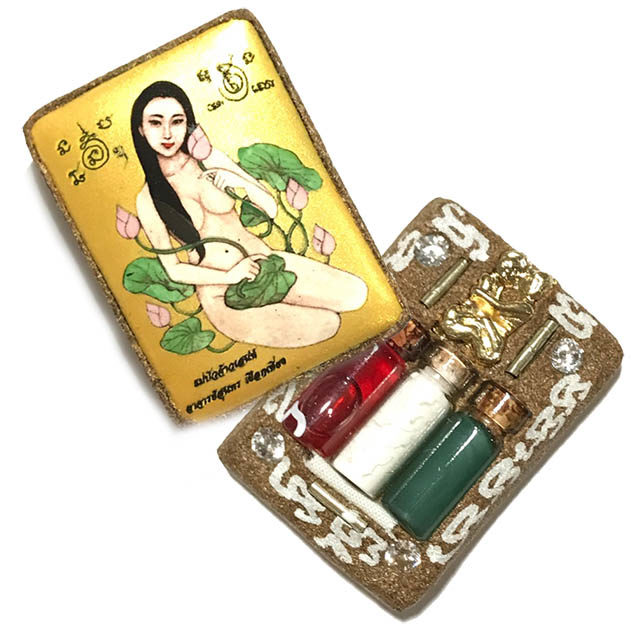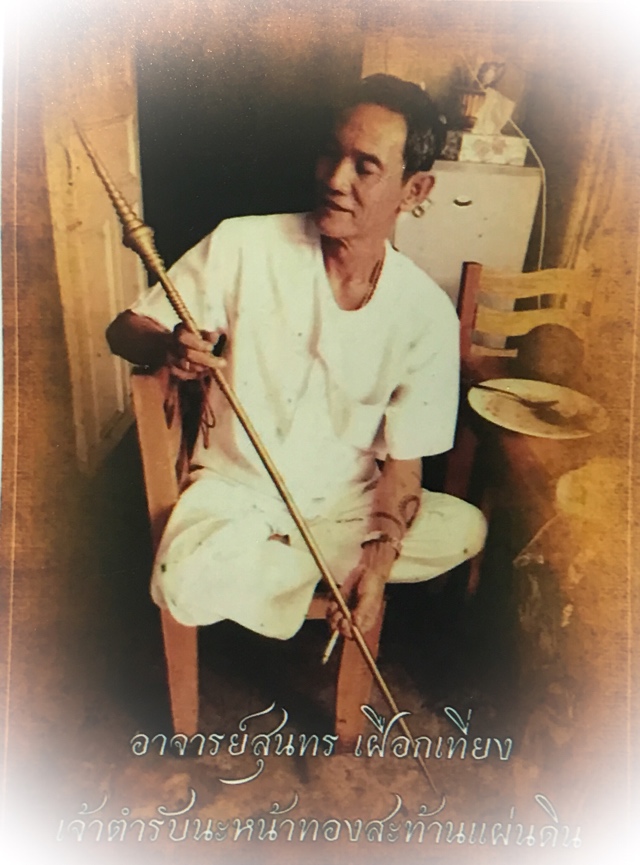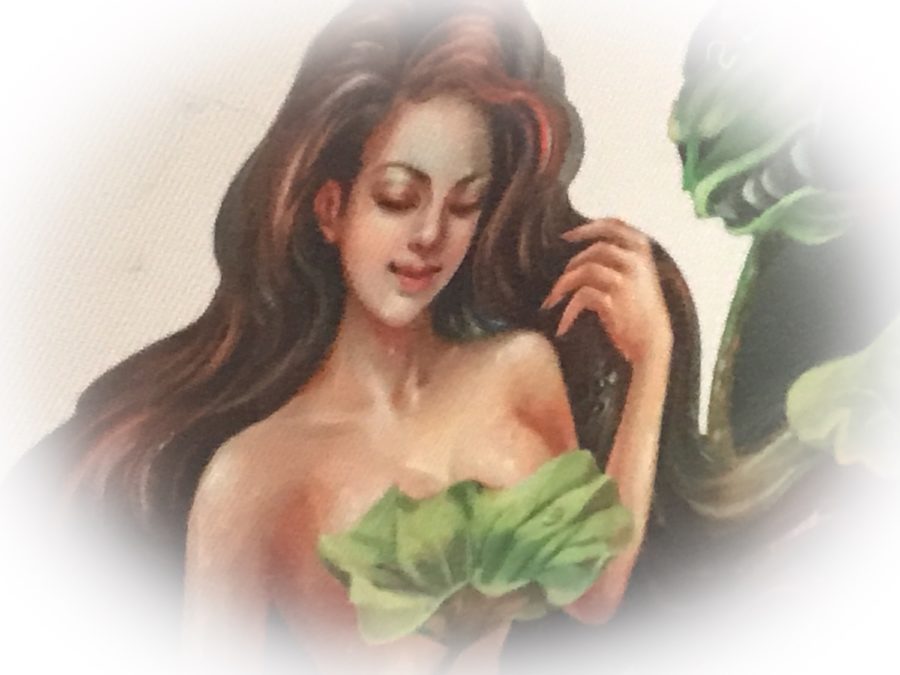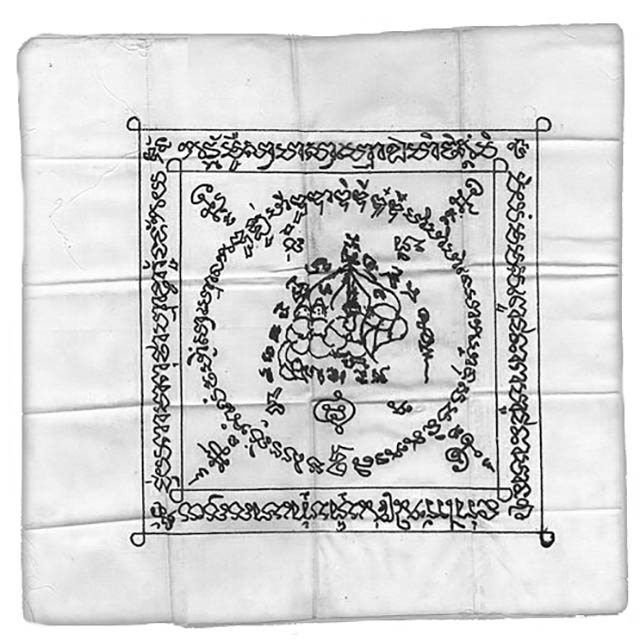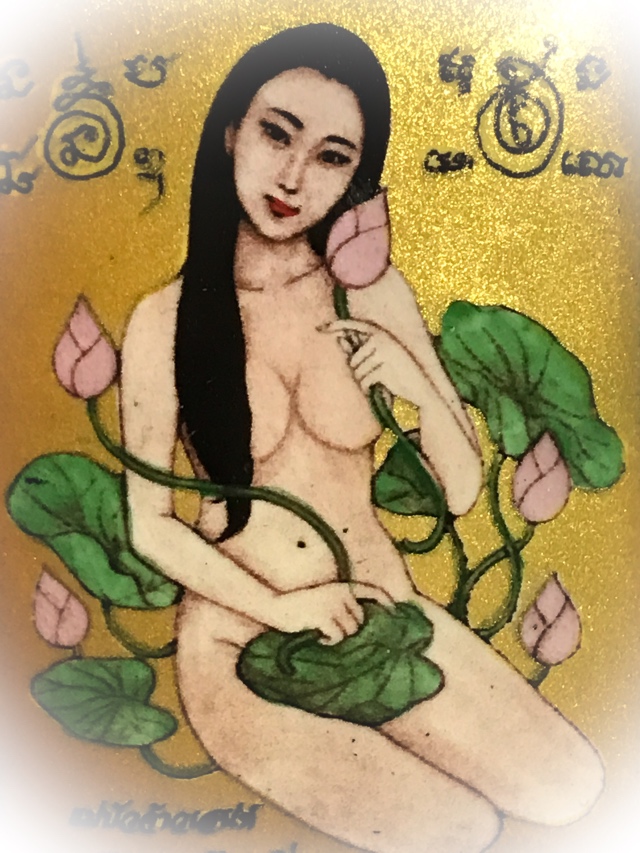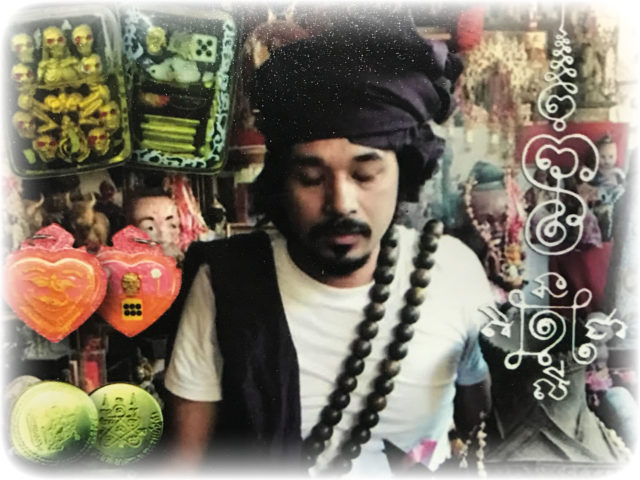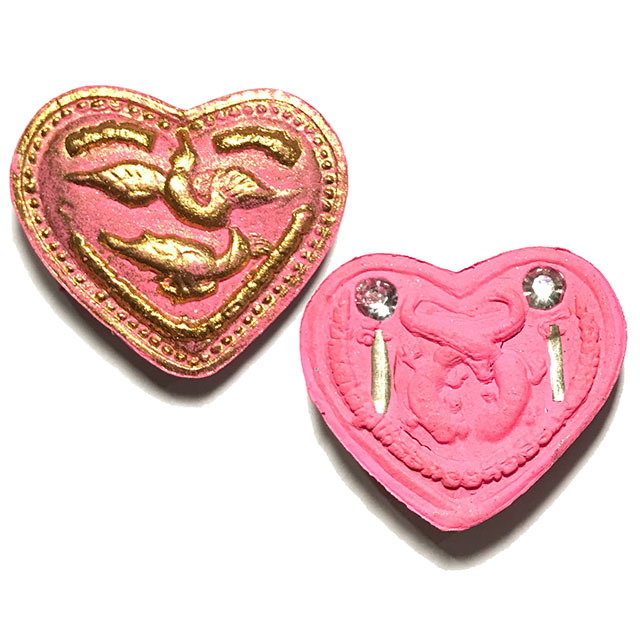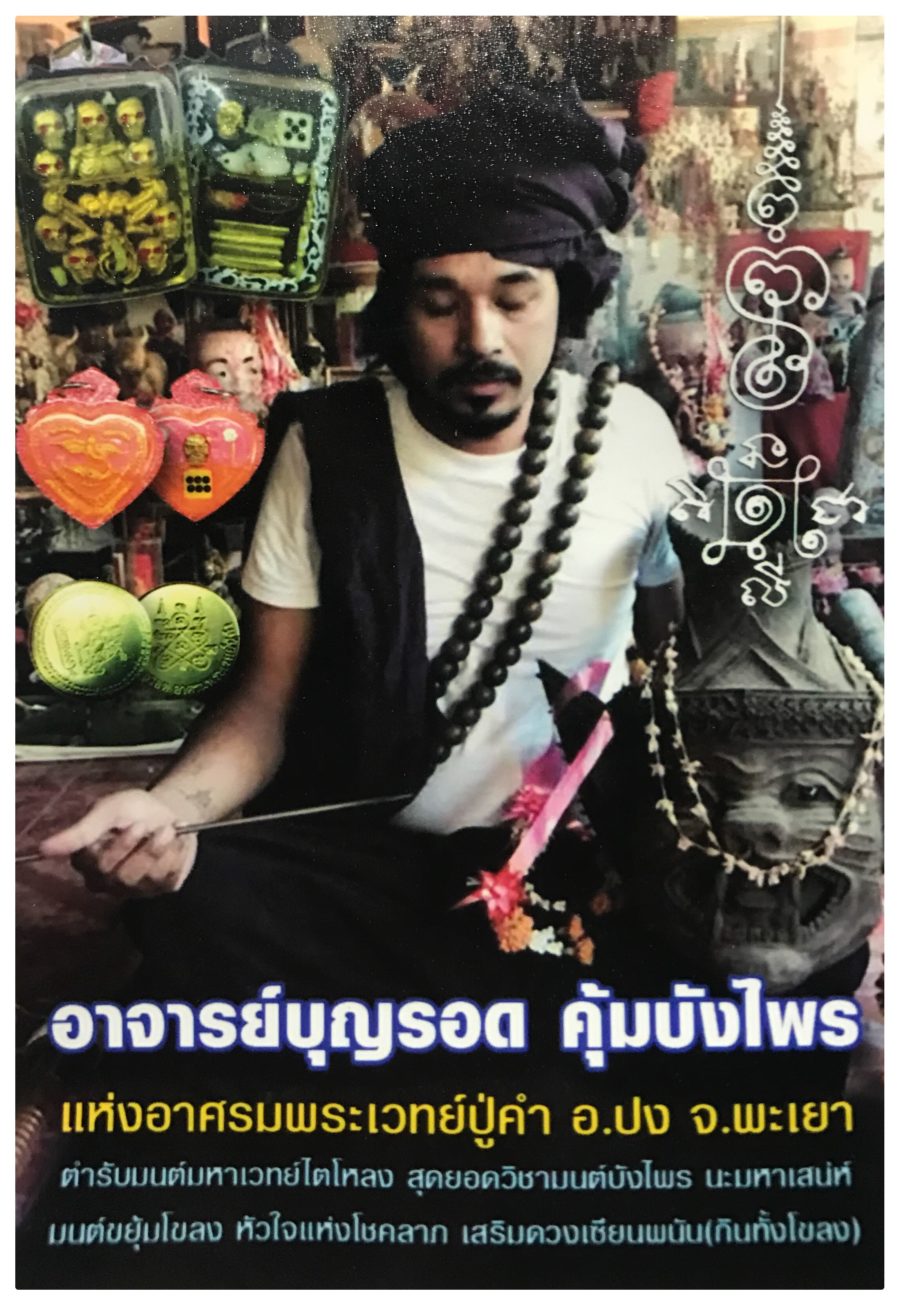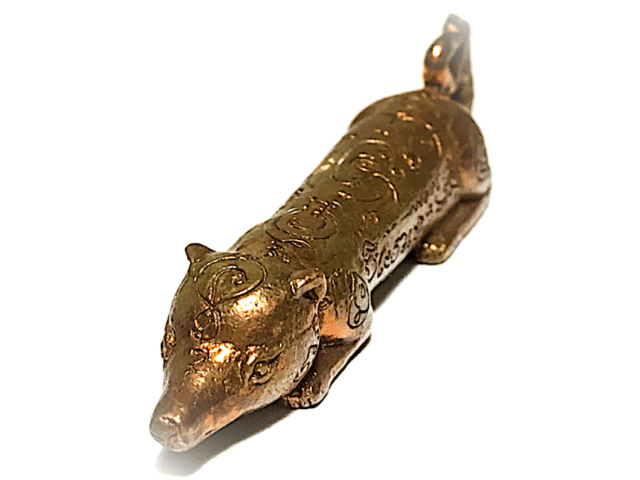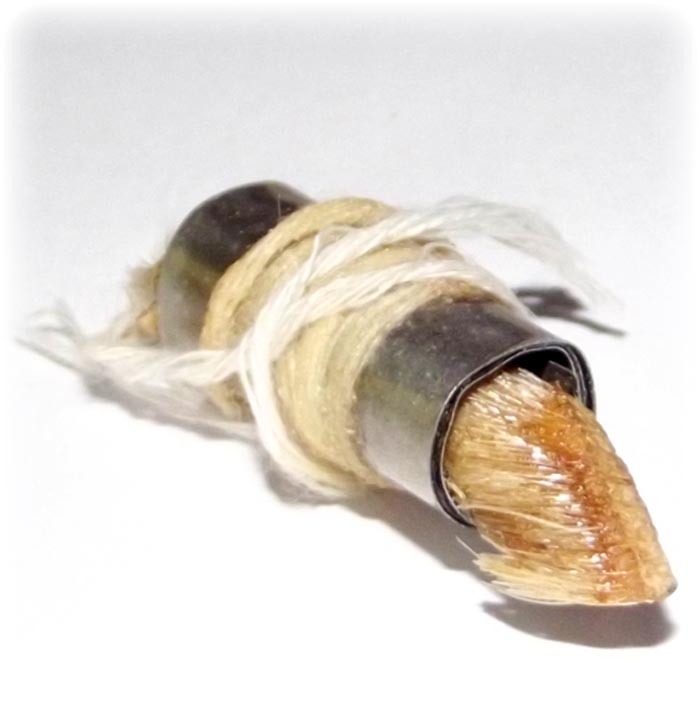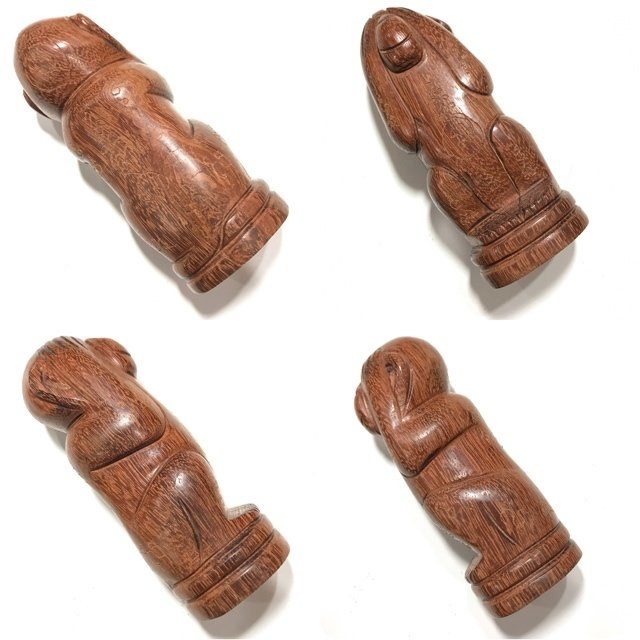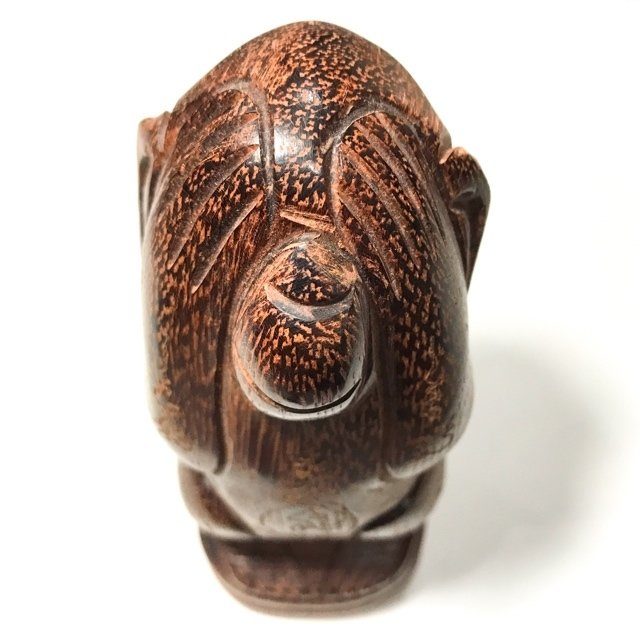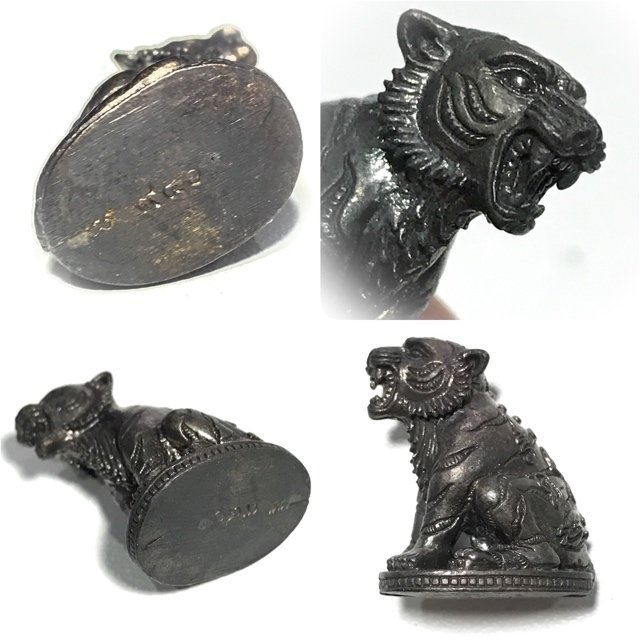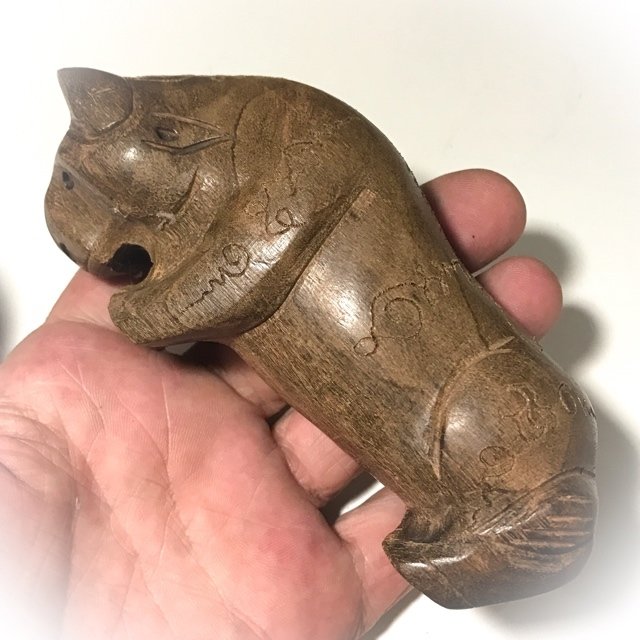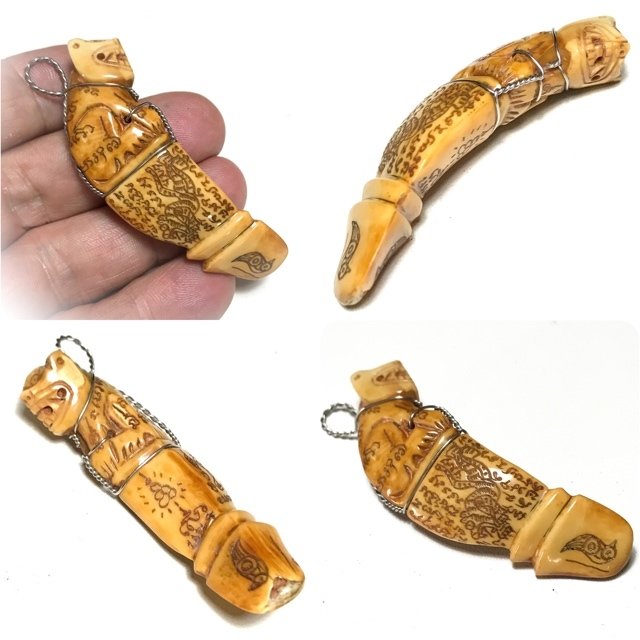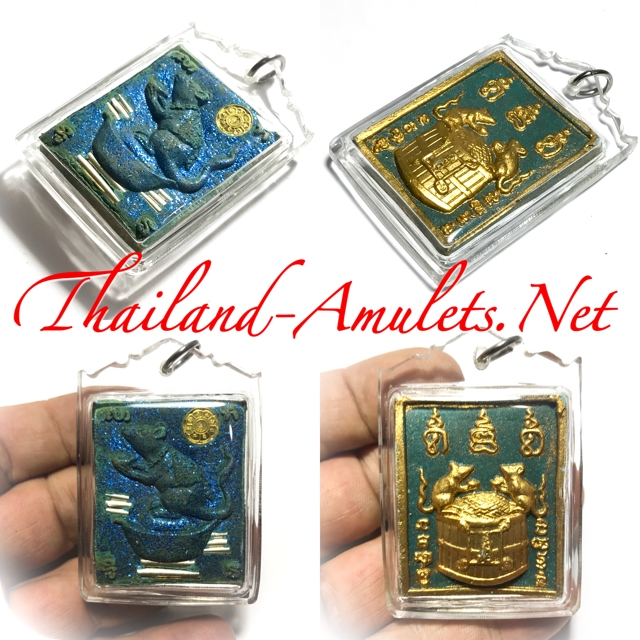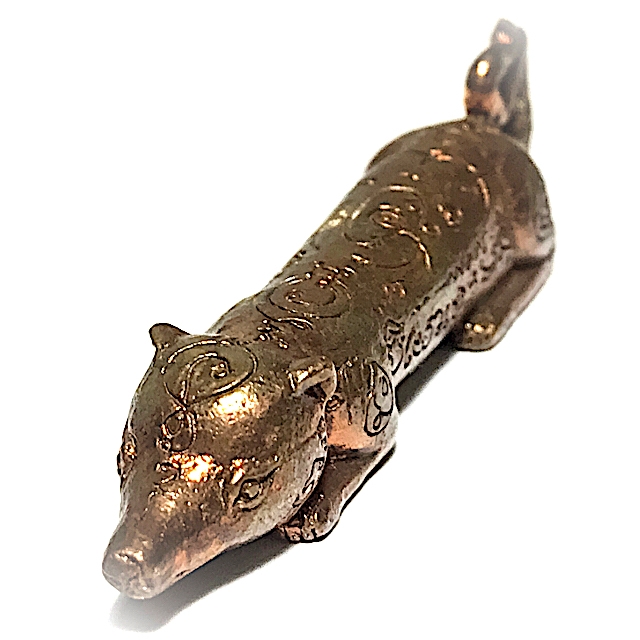Pra Yod Khun Pol Ban Khai B.E. 2552 (A.D. 2009) by Luang Por Sakorn Manunyo, Wat Nong Grub
The “Pra Yod Khun Pol Ban Khai” amulet series, created in B.E. 2552 (A.D. 2009), is highly popular and sought after among disciples and collectors of amulets by Luang Por Sakorn Manunyo of Wat Nong Grub, Ban Khai District, Rayong Province. Its distinctiveness in terms of Buddhist art, sacred materials, and powerful consecration ceremonies has led to widespread acclaim for its comprehensive Buddhist blessings (Phutthakhun), especially in aspects of Metta Mahaniyom (charm and popularity), Maha Amnat (great power/authority), and enhancing prestige.
History of the Creator and Consecrator: Luang Por Sakorn Manunyo, the Inheritor of Eastern Buddhist Magic
Luang Por Sakorn Manunyo, originally named Sakorn Pairam, was born into the Pairam family on Tuesday, February 3, B.E. 2481 (A.D. 1938), at Ban Tai Thung, Nong Bua Sub-district, Ban Khai District, Rayong Province. He was the sixth of eight children.
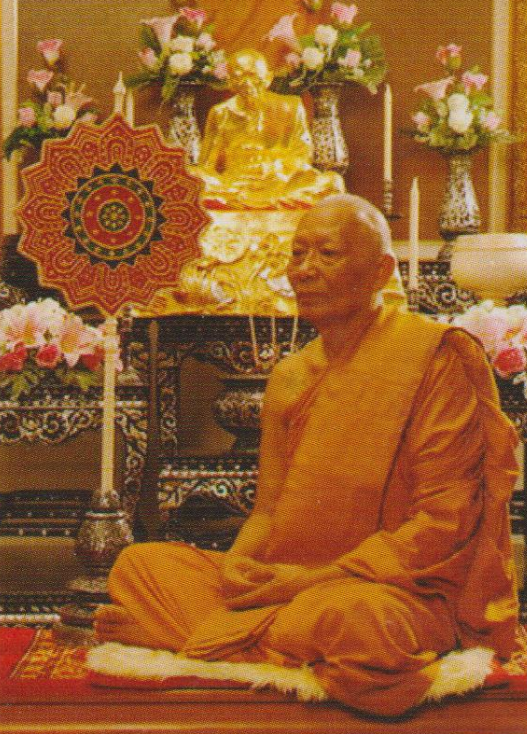
His early life was always connected with Wat Nong Grub. At the age of 20, he was ordained as a Buddhist monk on June 4, B.E. 2501 (A.D. 1958), at the Ubosot of Wat Nong Grub. Pra Kru Jantharothai (Luang Por Ding) of Wat Nong Grub served as his preceptor, Pra Athikan Hom of Wat Nong Sim as his Karma Vachacharn, and Pra Athikan Saeng of Wat Nong Grub as his Anusavanacharn. He was given the monastic name “Manunyo.”
The most significant turning point in Luang Por Sakorn’s path of Buddhist magic was becoming a disciple of Luang Pu Tim Isariko of Wat Lahan Rai, who was then nationally renowned as the supreme guru monk who created the famous “Pra Khun Paen Phong Prai Kuman.” Luang Por Sakorn diligently traveled to serve and study from Luang Pu Tim regularly. With his humility and sharp intellect, he received Luang Pu Tim’s kindness, who imparted all his magical knowledge to him, especially the art of creating and consecrating Prai Kuman powder according to Luang Pu Tim’s tradition. He was one of the few disciples who learned this thoroughly and completely.
Additionally, he further studied with Luang Pu Peng Sasano of Wat Lahan Yai, a dharma friend of Luang Pu Tim and an expert in inscribing the “Na” sickle character, which possessed excellent protective power (Maha Ut) and invincibility (Kongkraphan Chatri).
Luang Por Sakorn applied all the knowledge he had learned to develop Wat Nong Grub and assist the local people until his passing. He passed away peacefully on September 18, B.E. 2556 (A.D. 2013), at the age of 75, having been a monk for 55 years.
History of Wat Nong Grub, Rayong Province
Wat Nong Grub is located in Nong Bua Sub-district, Ban Khai District, Rayong Province. It is an ancient temple with significant importance to the local community. Originally a small local temple, it underwent rapid development during Luang Por Sakorn’s abbacy. He constructed numerous monastic buildings, such as a new Ubosot, a sermon hall, monks’ living quarters, and a crematorium, making Wat Nong Grub prosperous and a spiritual center for the people of Ban Khai and Buddhists in general.
Origin and Consecration Ceremony of the “Pra Yod Khun Pol Ban Khai” Series, B.E. 2552
The “Pra Yod Khun Pol Ban Khai” amulet series was officially created in B.E. 2552 (A.D. 2009) with the objective of raising funds for the renovation and development of monastic buildings within Wat Nong Grub.
The exceptional feature of this amulet series lies in its consecration ceremony, which was a “solo consecration” performed solely by Luang Por Sakorn Manunyo throughout the entire three-month Buddhist Lent (Phansa) period of that year. Solo consecration is considered a testament to the powerful mind and profound Buddhist magic of a guru monk. Luang Por Sakorn wholeheartedly imbued the amulets with Buddhist power according to the traditions passed down from his master, Luang Pu Tim Isariko, ensuring that every piece in this series is truly filled with divine power.
Ultimate Sacred Materials: The Heart of Potency
The materials used in the creation of this amulet series are considered the “ultimate” collection of auspicious and sacred items that Luang Por Sakorn had preserved for a long time. They consist of:
Key Sacred Materials:
- Phong Prai Kuman of Luang Pu Tim Isariko: The famous original Prai Kuman powder directly given to Luang Por Sakorn by Luang Pu Tim. This is considered the primary material with the highest Buddhist blessings for Metta Mahaniyom (charm and popularity) and good fortune.
- Various Phutthakhun Powders of Luang Por Sakorn: Powders created from writing and erasing sacred Yantra characters according to the scriptures he learned, which he performed throughout his monastic life.
- Old Powders of Luang Pu Tim Wat Lahan Rai: Various sacred powders that Luang Pu Tim used to create amulets and entrusted to Luang Por Sakorn for safekeeping.
Materials from Guru Monks and Important Ceremonies:
- Consecrated beeswax and 108 herb powders from Luang Por Joy of Wat Nong Nam Khiao.
- Old palm leaf scriptures powder from Wat Ban Laeng, B.E. 2496 (A.D. 1953): From a grand ceremony consecrated by top guru monks of that era, including Luang Pu Tim Wat Lahan Rai, Luang Pu Puek Wat King Kaew, Luang Por Ngern Wat Don Yai Hom, Luang Por Sod Wat Pak Nam, and Luang Por To Wat Khao Bor Thong.
- Powder from Luang Pu Rueang Wat Khao Sam Yod and consecrated powder from Luang Por Gas Wat Paeng Pluay.
- 108 herb powders from Luang Por Tone Wat Khao Noi Kiriwan.
- “Ya Dam Ork Suek” (black combat medicine) powder from Luang Pu Ding Wat Bang Wua.
- “Phet Leek” (diamond escape) powder and Bodhi leaf powder from Chao Khun Sri Wat Ang Sila.
Mystical Materials and Auspicious Herbs:
- Auspicious Herbs (Waan Mongkol): Dok Waan Dok Mai Thong, Waan Sabu Lueat, Khruea Thao Long, Waan Ka Long Rang, Waan Maha Saneh, Waan Pad Bok, Waan Sao Long, and various sacred pollen powders.
- Mystical Powders (Phong Arthan): Soil from 7 termite mounds, soil from 7 cemeteries, powder from lightning-struck Takhian trees (Mai Takhian Fa Pha Tai Prai).
- Auspicious Name Powders (Phong Mongkol Nam): Phong Wasana (fortune powder), Phong Maha Mek (great cloud powder), Phong Tor Ngern Tor Thong (money and gold connection powder), Phong Kling Klang Dong (rolling in the forest powder), Phong Chao Ngor (Prince Ngor powder).
- Others: Golden coral (Kanlapangha Thong), various broken amulet powders of Luang Por Sakorn that he had collected.
All these materials were meticulously blended according to ancient traditions to achieve the highest Buddhist blessings in all aspects.
- Forms of Creation: Available as plain balls, embedded with 1 Takrut, and various special versions. Creation numbers are not clear, but they are considered excellent substitutes for Pra Khun Paen.
List of Amulets in the “Pra Yod Khun Pol Ban Khai” Series, B.E. 2552
The amulets created on this occasion came in various forms:
1. Pra Yod Khun Pol Ban Khai This is the main amulet of the series, featuring beautiful Buddhist art. It depicts a Buddha meditating in the Maravijaya (subduing Mara) posture within a glass arch, symbolizing victory over all obstacles. It conveys meanings of great power and majesty.
- Phutthakhun: Outstanding in Maha Amnat (great power/authority) and enhancing prestige, making the wearer respected. Suitable for those in leadership positions, managers, or those seeking career advancement, alongside Metta Mahaniyom (charm and popularity) and protection from danger (Khlaew Khlat Plod Phai).
- Forms of Creation:
- Large mold (Pim Yai): For men.
- Small mold (Pim Lek): For women and children.
- Material and Quantity Created (Based on available information):
- Pure Phong Prai Kuman (white): Standard material.
- Waan Sabu Lueat (reddish-brown): Limited creation.
- Waan Dok Mai Thong (yellow): Limited creation.
- Special versions: Some were embedded with Salika Takrut (1 or 2 pieces), consecrated gems, and “Kommakarn” (committee) versions which had more sacred items embedded than usual. The exact creation numbers for each type are not precisely disclosed, but the special versions are fewer in number and rarer than the regular ones.
2. Pra Khun Paen Phong Prai Kuman Although the series name is “Yod Khun Pol,” Pra Khun Paen amulets were also created according to Luang Pu Tim’s tradition, which had always brought fame to Luang Por Sakorn.
- Phutthakhun: Emphasizes supreme Metta Mahaniyom (charm and popularity), Maha Saneh (attraction), good fortune in business, and excellent negotiation skills.
- Forms of Creation: Available in both large and small molds, and divided into versions with and without Takrut, similar to Pra Yod Khun Pol.
3. Look Om Phong Prai Kuman These amulets used the most concentrated sacred materials, shaped into round balls without a fixed form, making them easy to carry.
- Phutthakhun: All-encompassing, depending on the wearer’s wishes. Prominent in Metta (compassion), business, good fortune, and protection from danger.
- Forms of Creation: Available as plain balls, embedded with 1 Takrut, and various special versions. Creation numbers are not clear, but they are considered excellent substitutes for Pra Khun Paen.
4. Maha Saneh Beeswax (See Pheung Maha Saneh) Contained in varying sizes of small containers. This beeswax was cooked and consecrated by Luang Por Sakorn according to ancient traditions, mixed with various auspicious materials.
- Phutthakhun: Used for negotiation in business, work contacts, and to foster love and kindness from those encountered and spoken with.
- Quantity Created: Not specified.
5. Chuchok Maha Lap Created in the form of Chuchok, a symbol of excellent “begging” for good fortune.
- Phutthakhun: Outstanding in good fortune, finance, business, and easily achieving desired outcomes (Metta begging).
- Forms of Creation: Made from Phong Prai Kuman and the same materials, available in both worship-size and portable-size.
6. Yant Cloth (Phay Yant) Various types of Yant cloths were created, such as Phay Yant Pad Bok, Phay Yant Mae Nang Kwak, Phay Yant Narai Song Krut, etc.
- Phutthakhun: Depends on the specific Yant pattern, e.g., Metta for business, great power, protection from evil spirits and misfortunes.
- Forms of Creation: Mostly screen-printed on raw cotton fabric, primarily in red and white colors.
7. Monk Coin (Rian Khanachan) Regarding “Monk Coins” in this B.E. 2552 series, in-depth information indicates that the primary creations of the “Pra Yod Khun Pol Ban Khai” series focused mainly on “powder-based” amulets, namely Pra Yod Khun Pol, Pra Khun Paen, and Look Om. Any coins released in B.E. 2552 might have been for other occasions not directly part of the “Yod Khun Pol Ban Khai” set, or if created, they were in very small numbers and not as widely publicized as the powder amulets.
Summary and Overall Phuttakun
The “Pra Yod Khun Pol Ban Khai” amulet series of B.E. 2552 by Luang Por Sakorn of Wat Nong Grub is a supreme collection of Eastern knowledge and artistry, encompassing everything from master-level sacred materials like Luang Pu Tim’s Prai Kuman powder to the powerful solo consecration ceremony throughout the Buddhist Lent. This makes the amulet series possess comprehensive Buddhist blessings in all aspects, including:
- Metta Mahaniyom (Charm and Popularity) & Maha Saneh (Attraction): Attracting people to love and be kind, successful in business negotiations.
- Maha Amnat (Great Power/Authority) & Enhancing Prestige: Making one respected, dignified, and successful in career.
- Good Fortune & Business: Attracting wealth and blessings, smooth business transactions.
- Khlaew Khlat Plod Phai (Protection from Danger): Protecting from all forms of harm and danger.
For these reasons, the “Pra Yod Khun Pol Ban Khai” amulet series remains highly sought after by disciples and devotees to this day, and is truly considered one of the “good things” that Luang Por Sakorn compassionately created and left behind on this land.




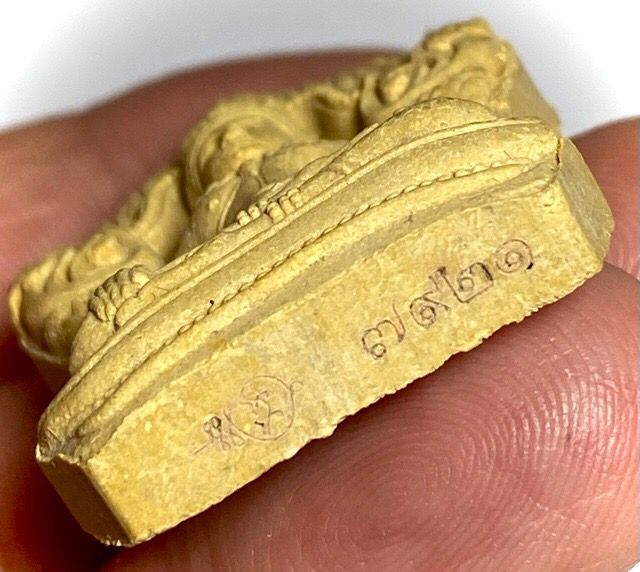




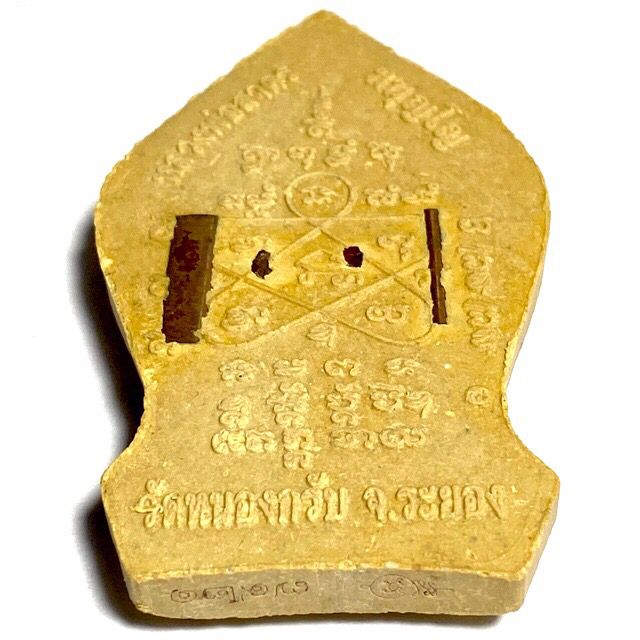







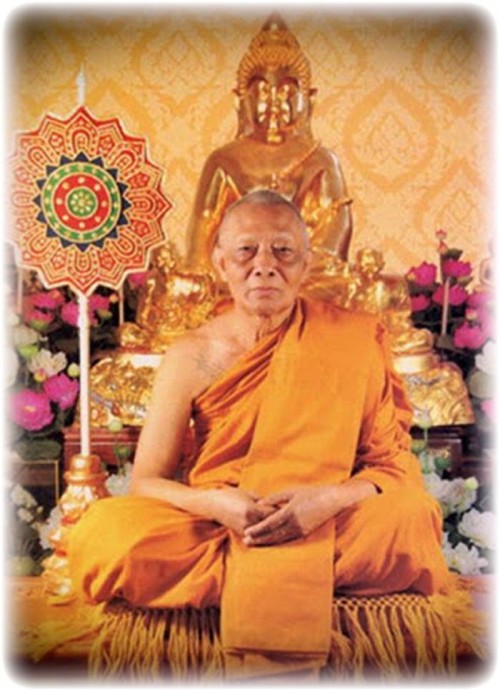
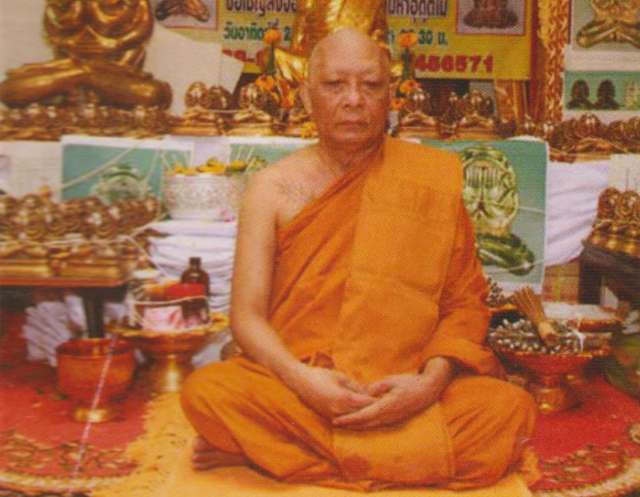
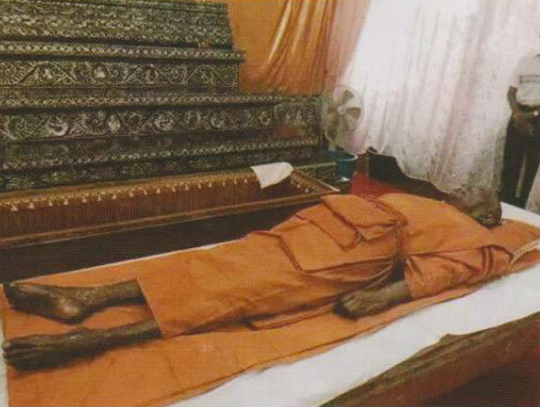

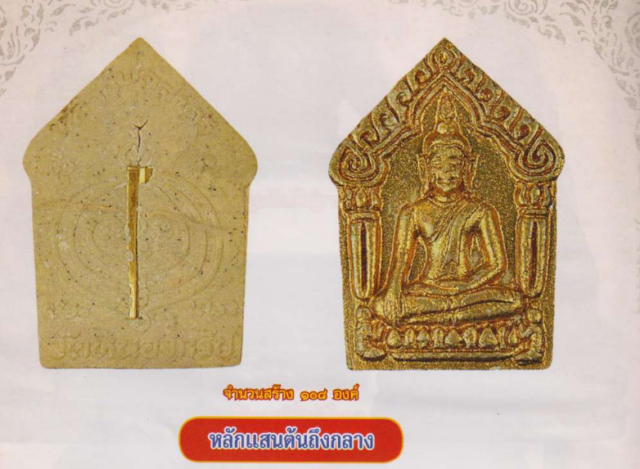
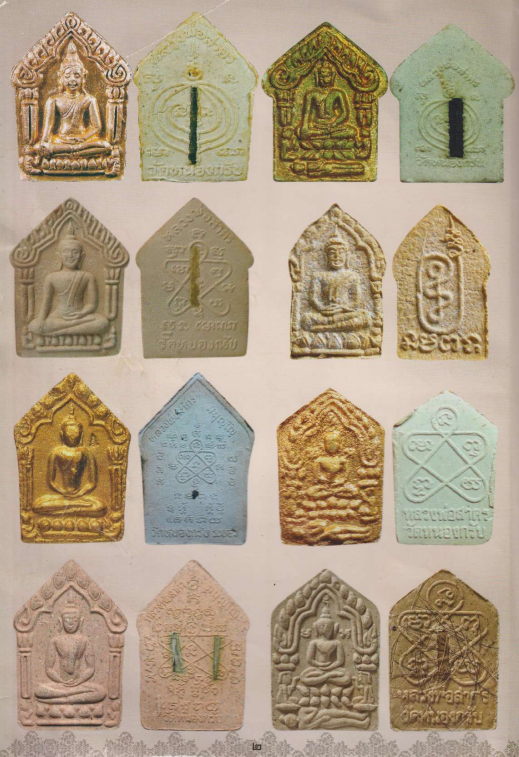

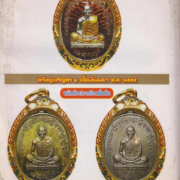
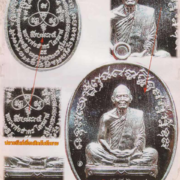
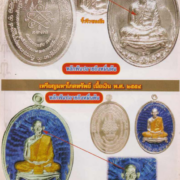
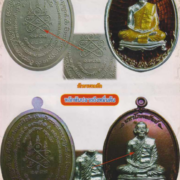
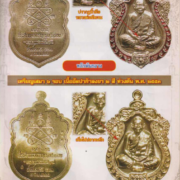
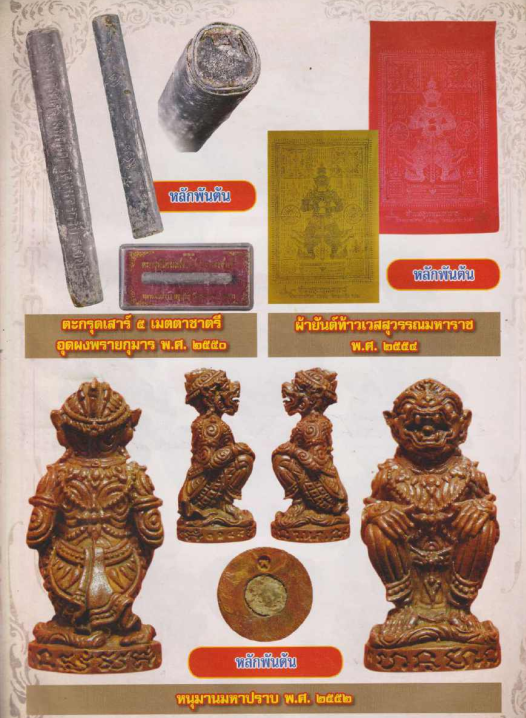
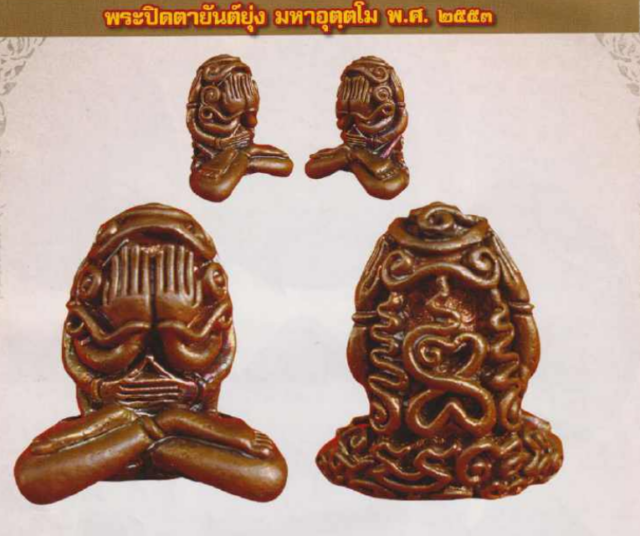
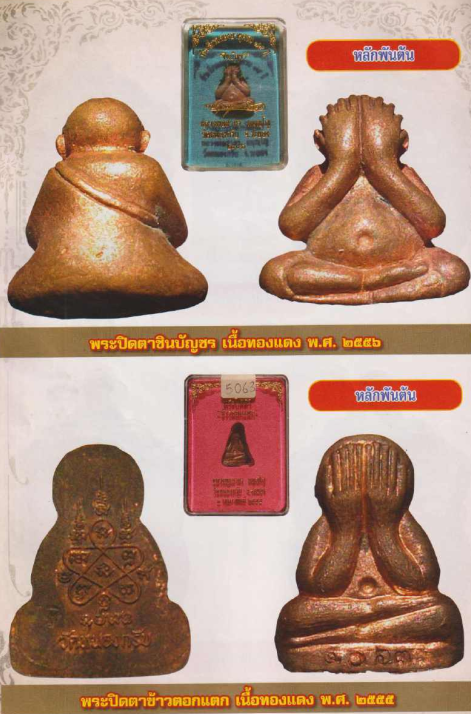
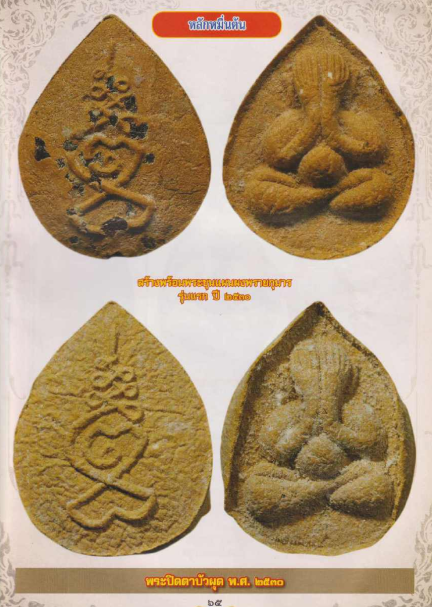
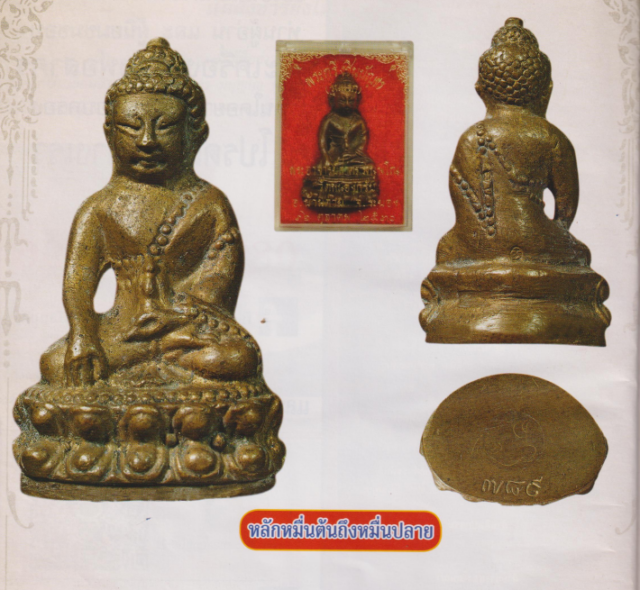

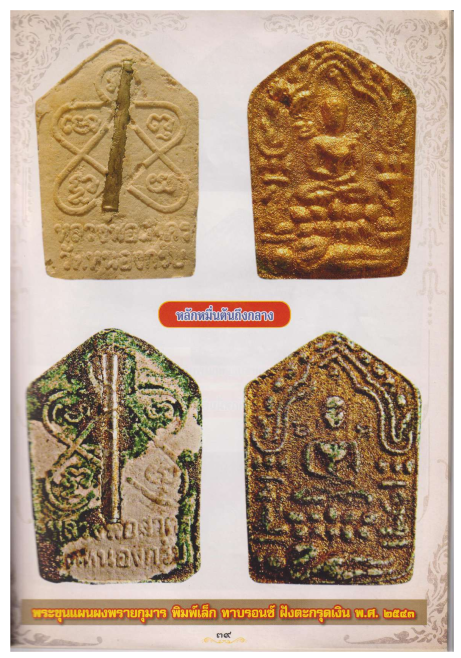
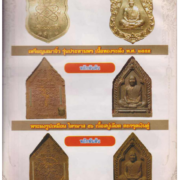
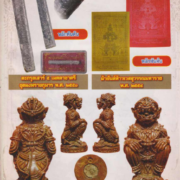
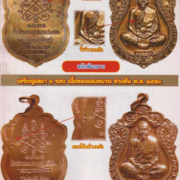
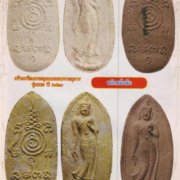

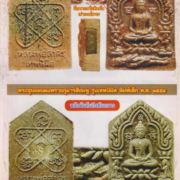
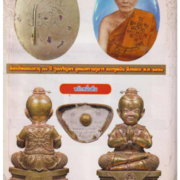
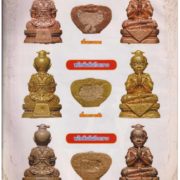
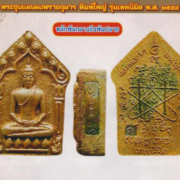
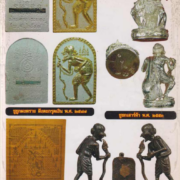

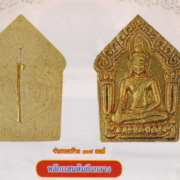
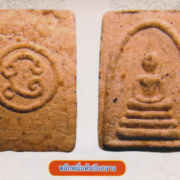
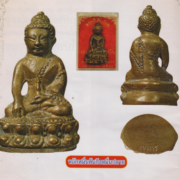
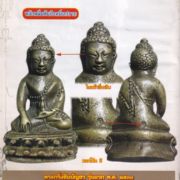
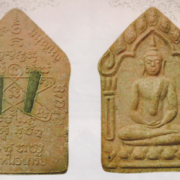
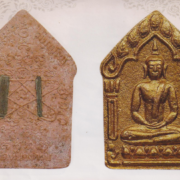
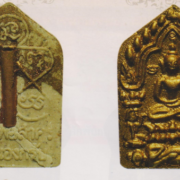
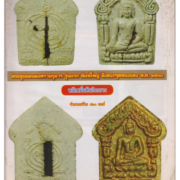
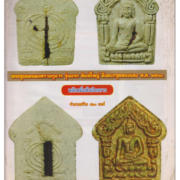
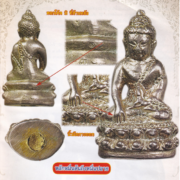

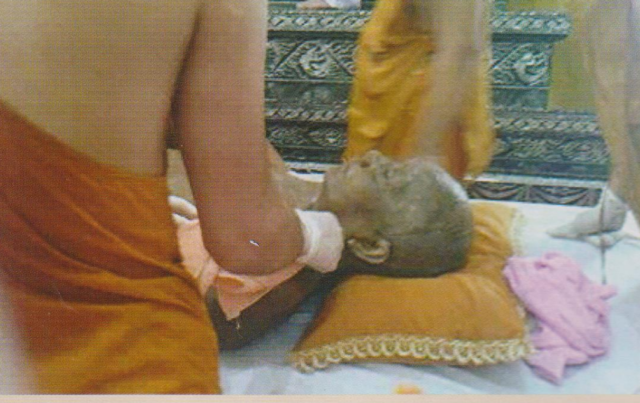

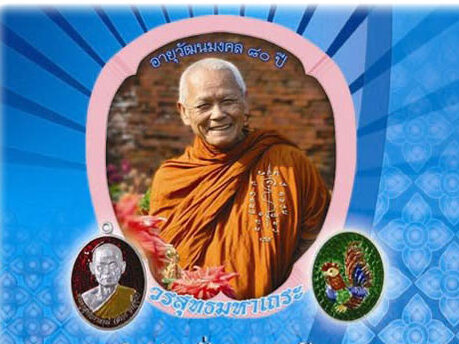
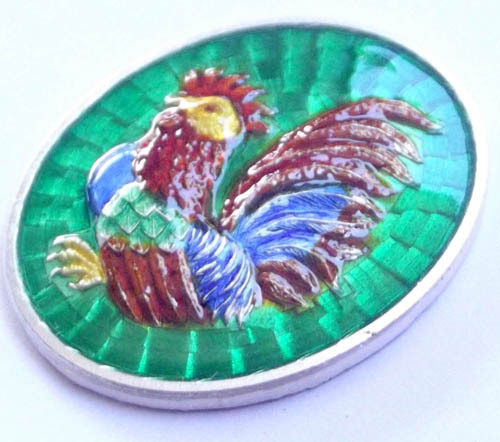
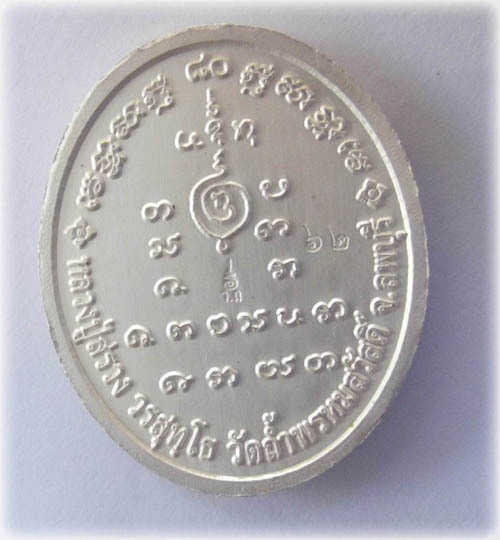
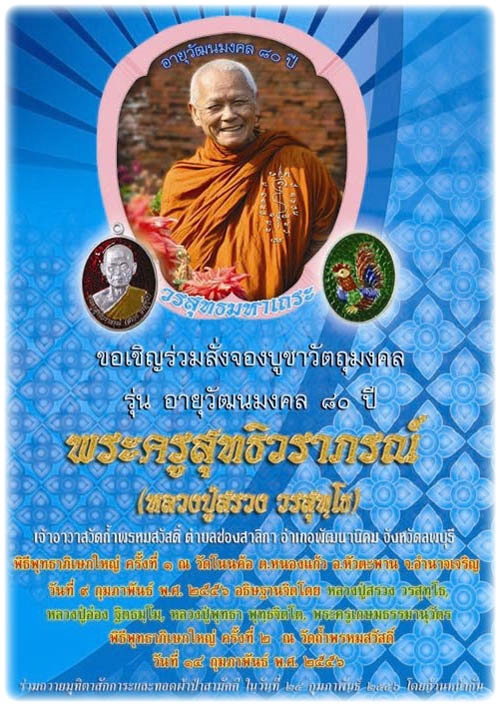

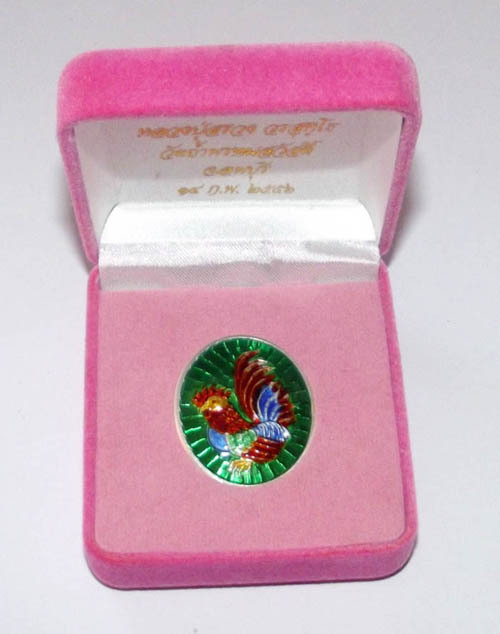
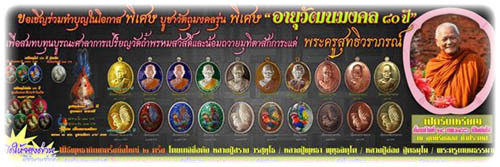
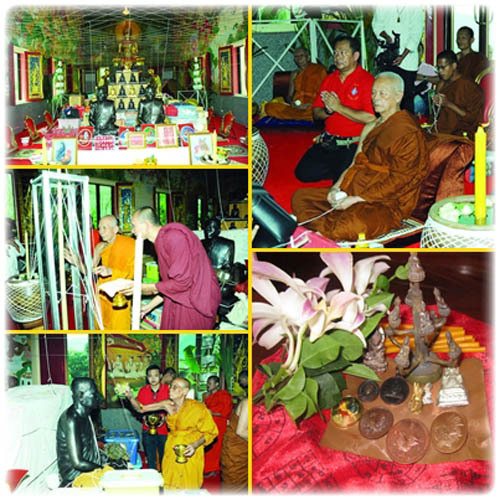
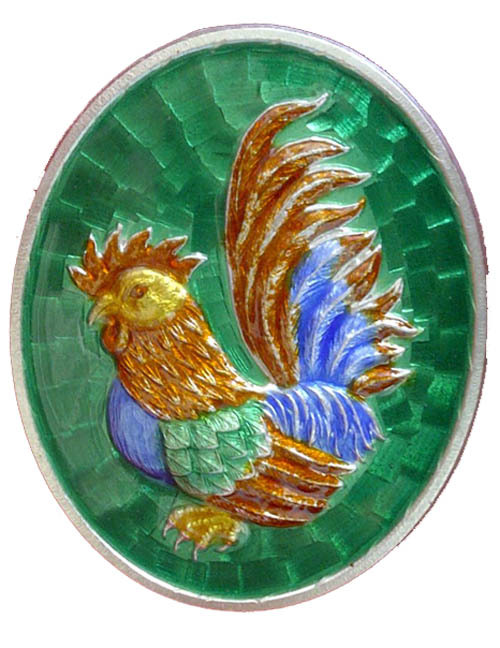
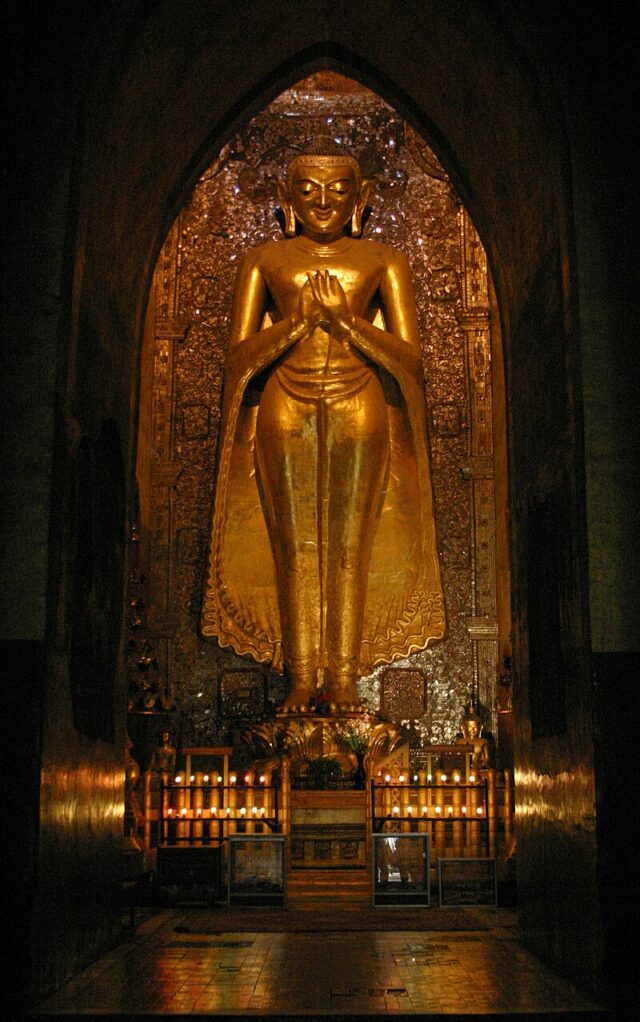

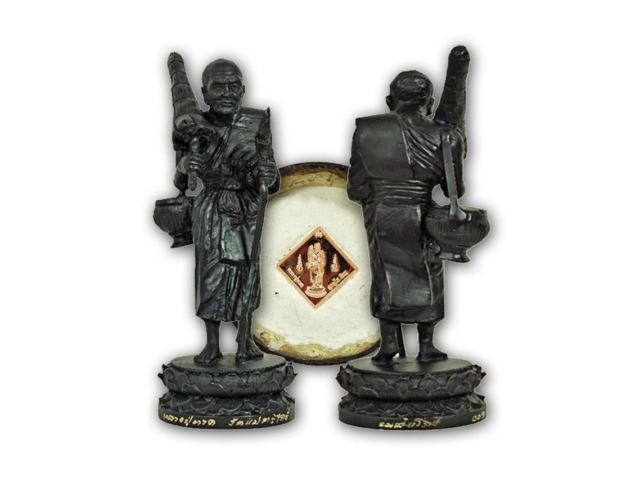
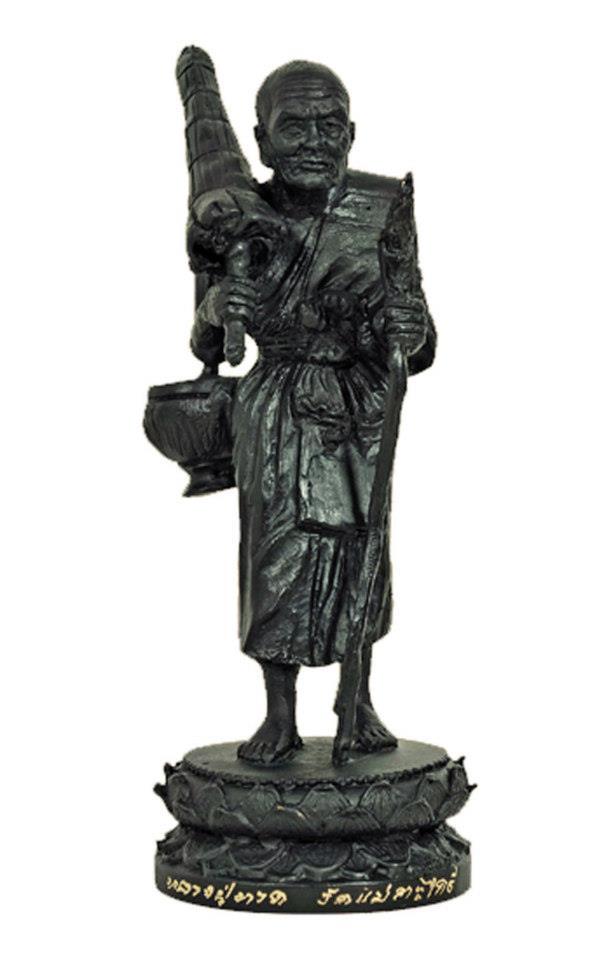
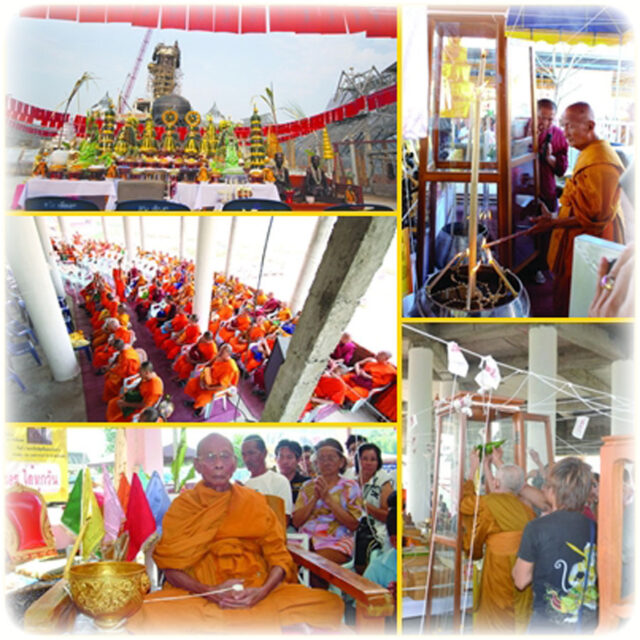
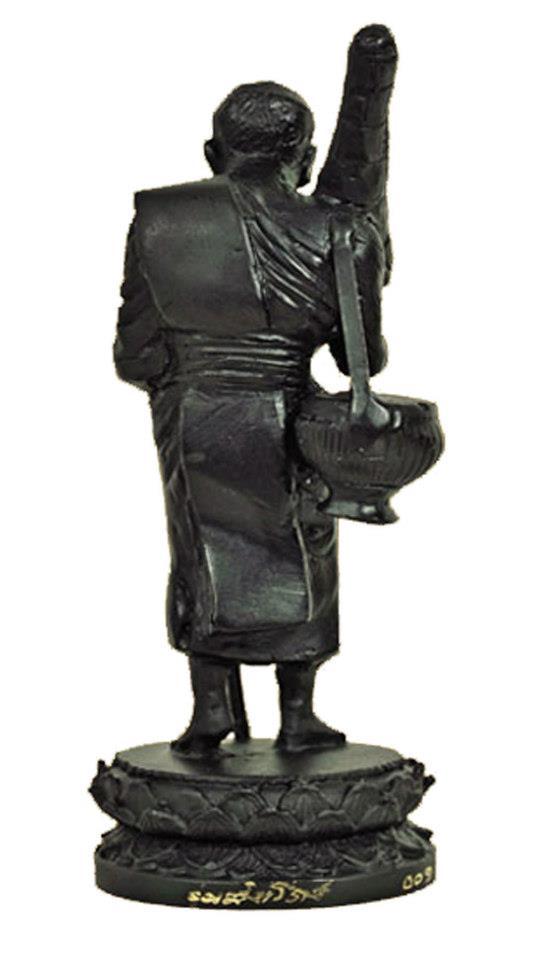
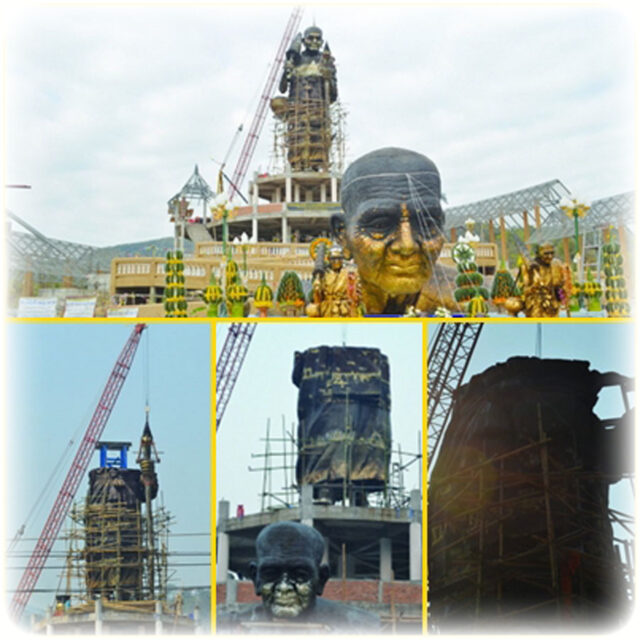
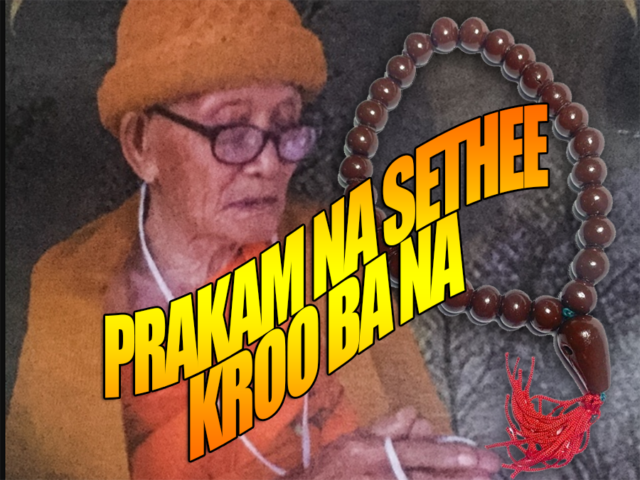
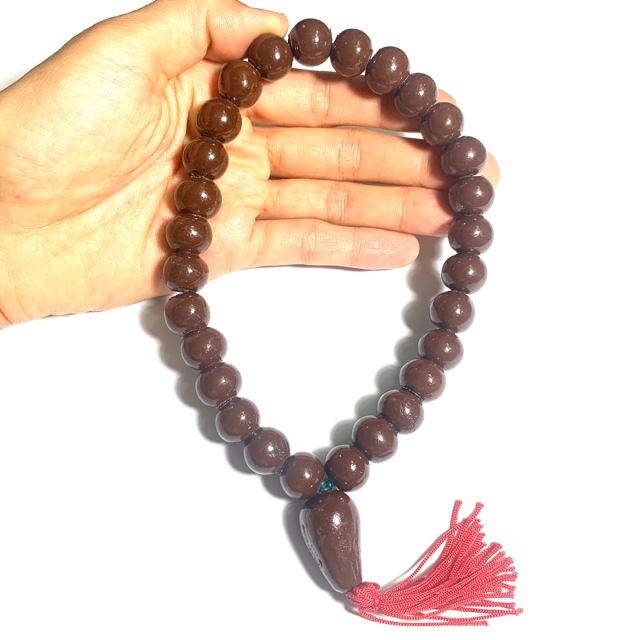
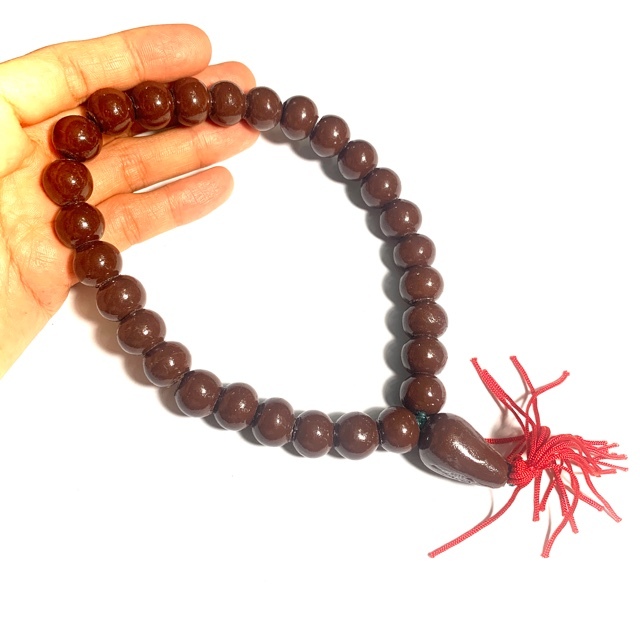
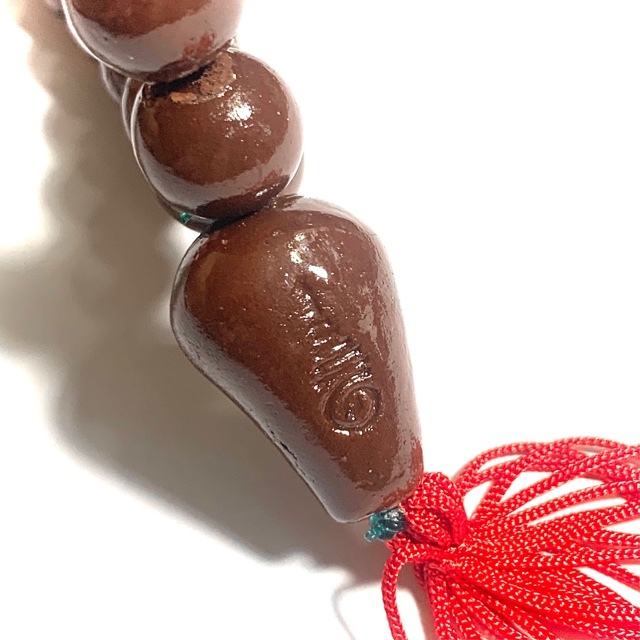
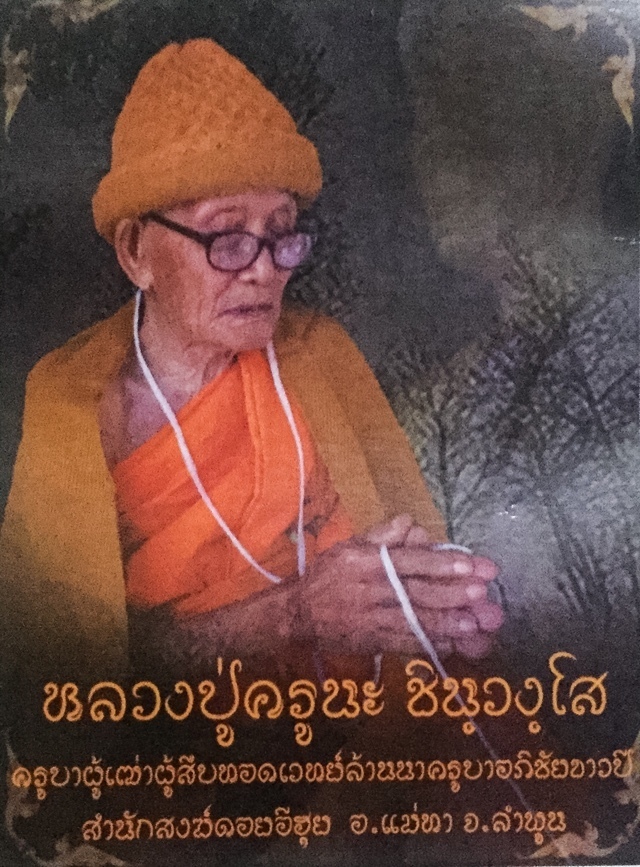
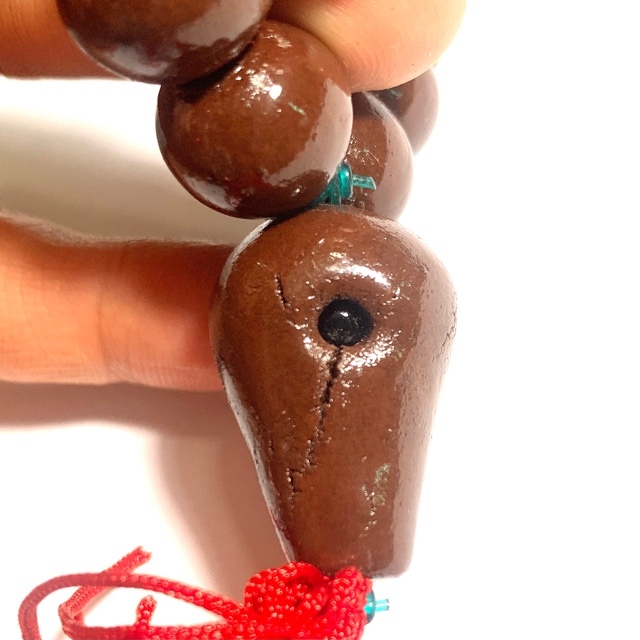
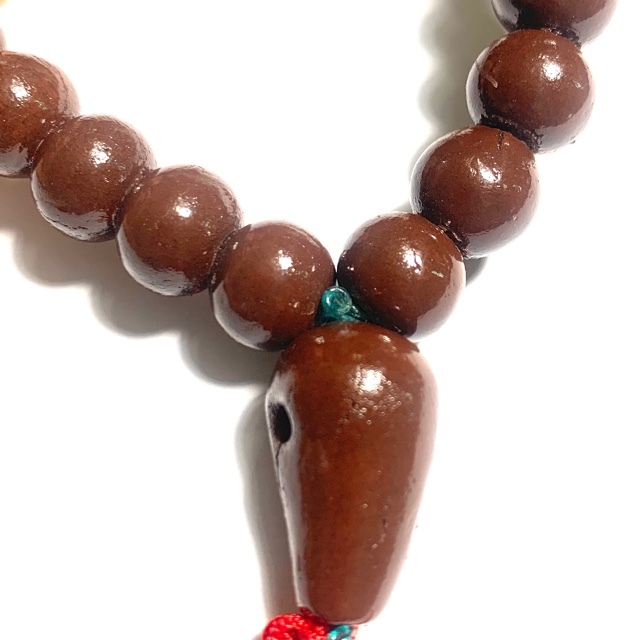


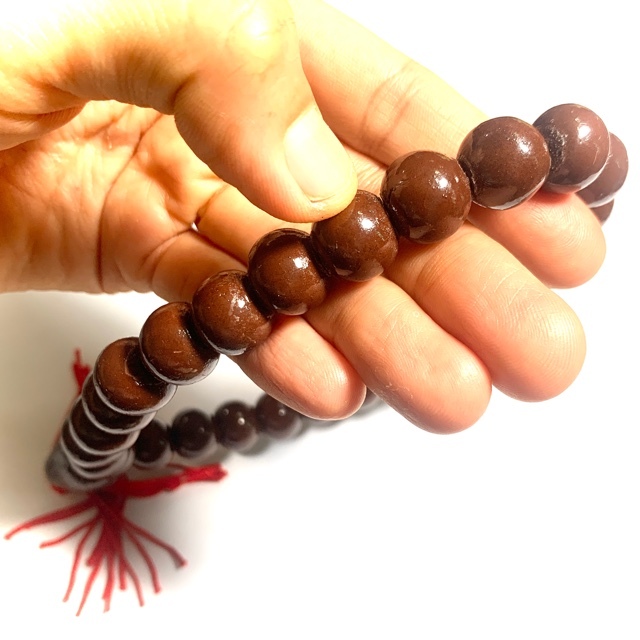
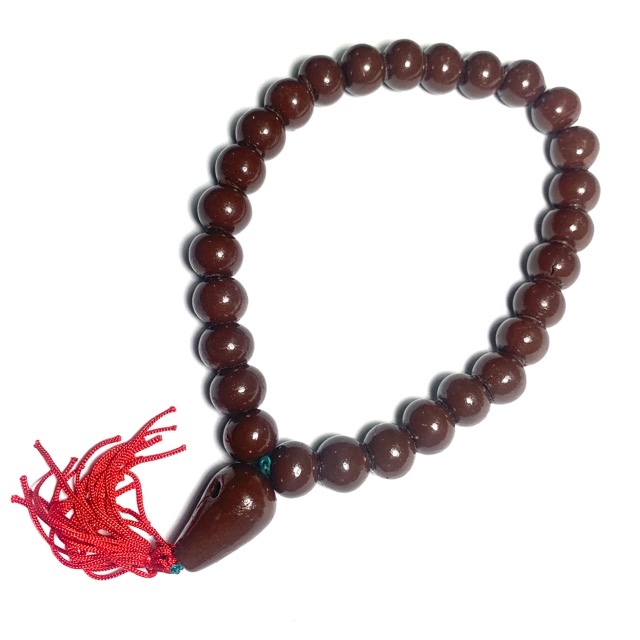
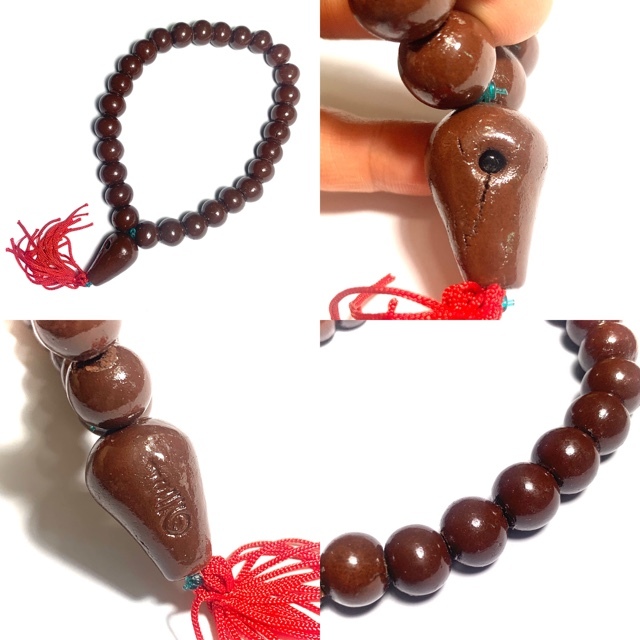
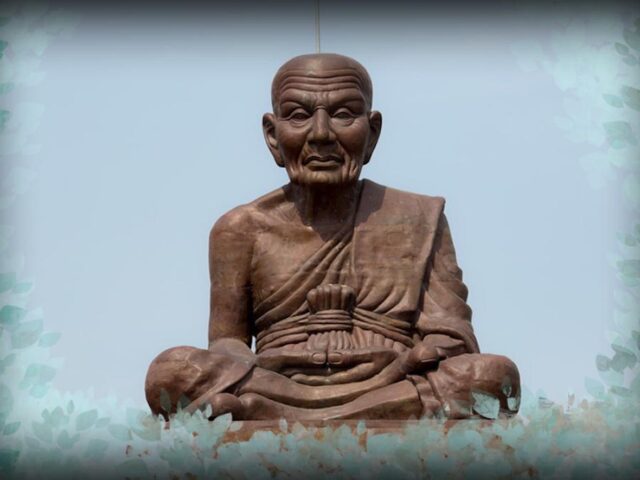
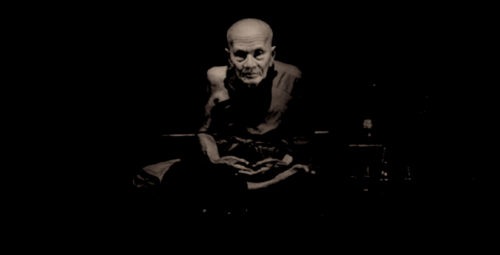
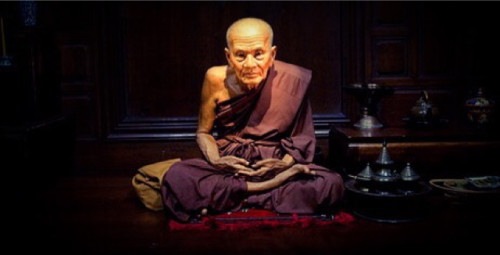
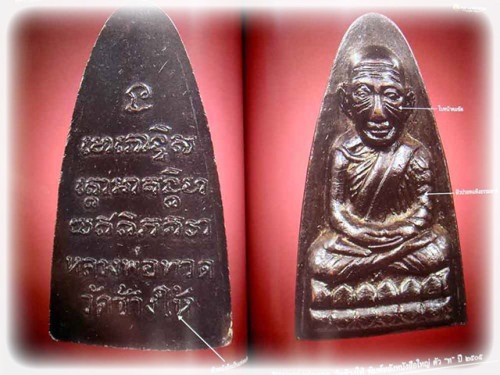
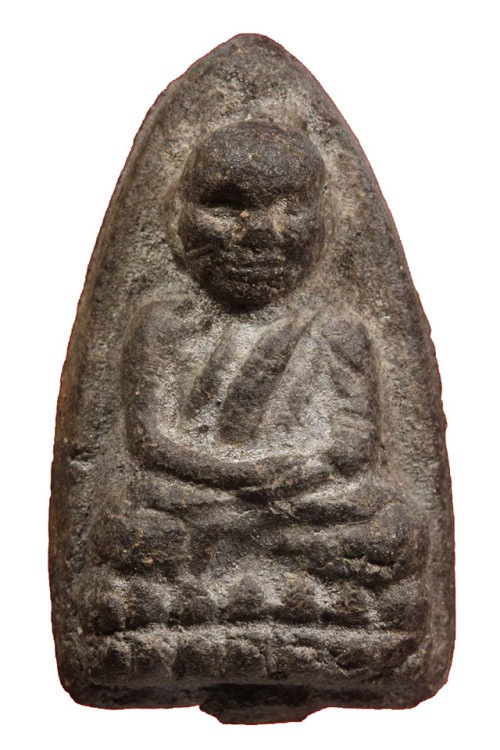
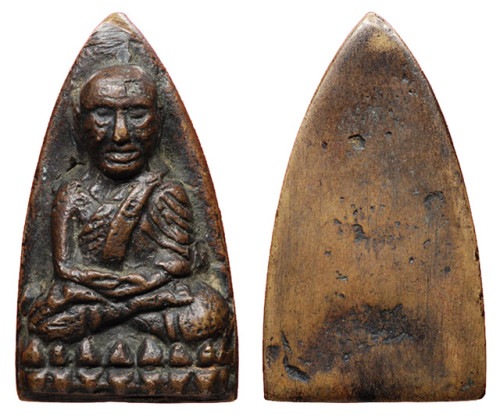
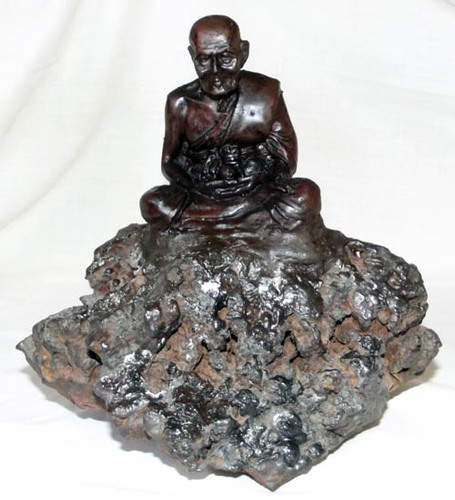
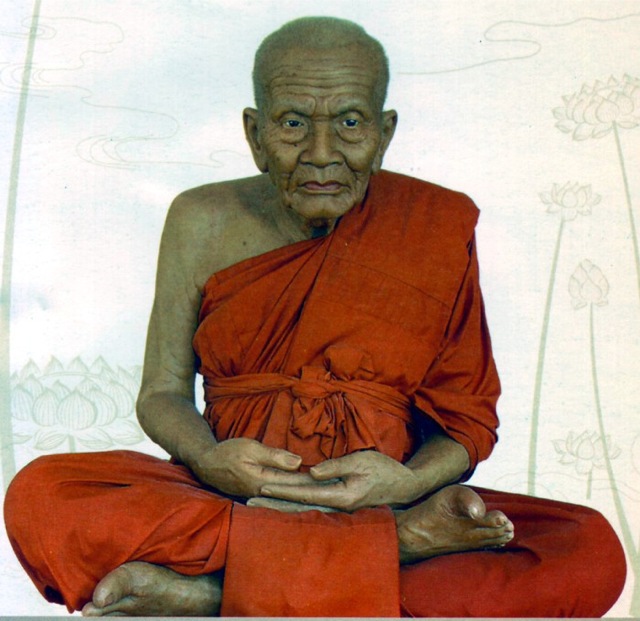

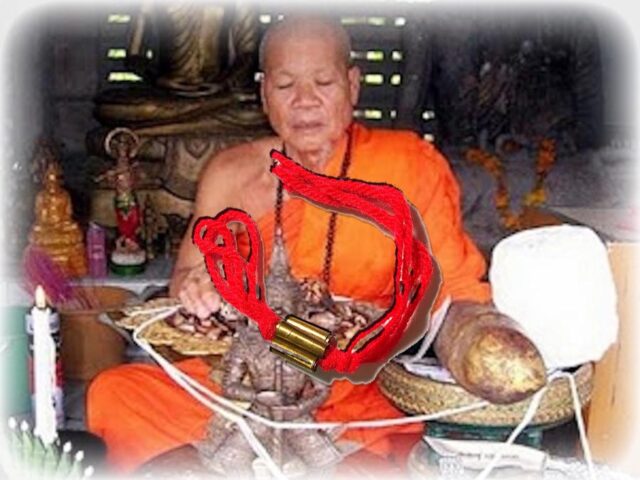
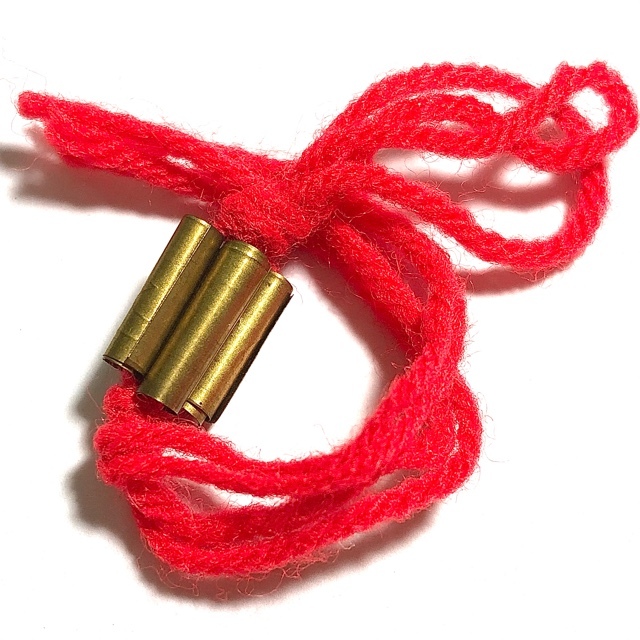
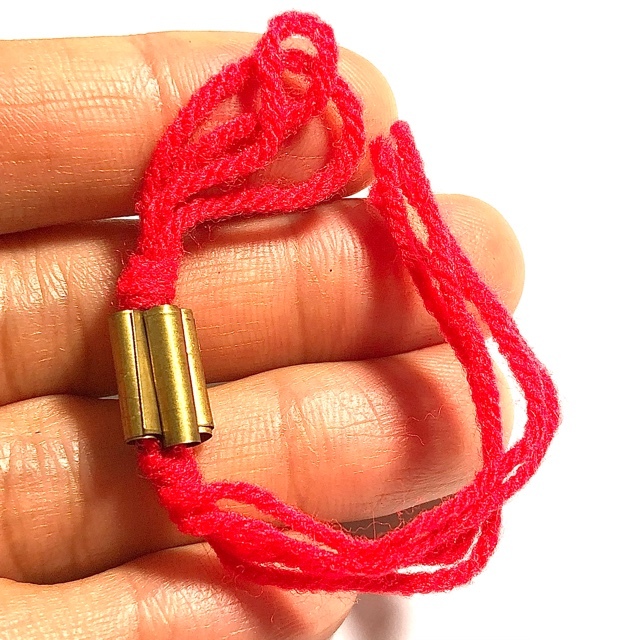
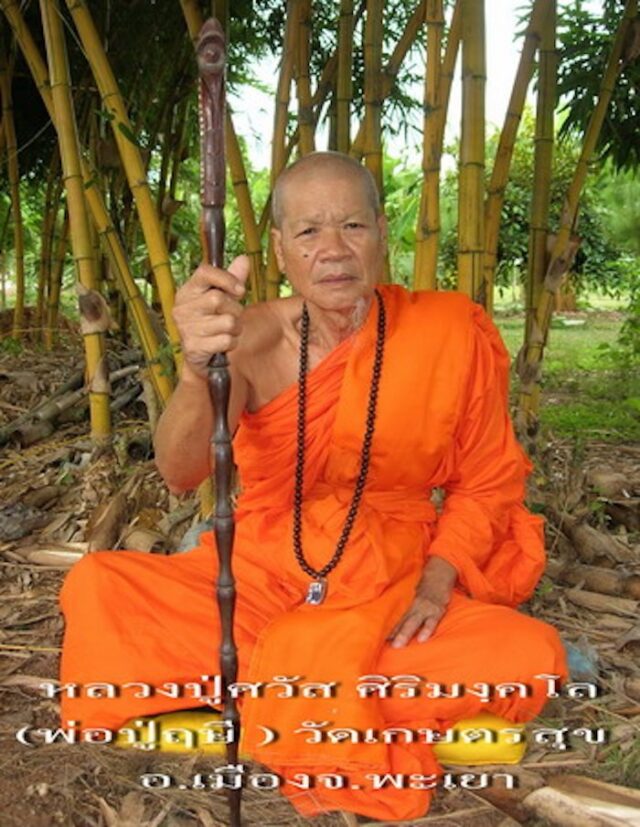
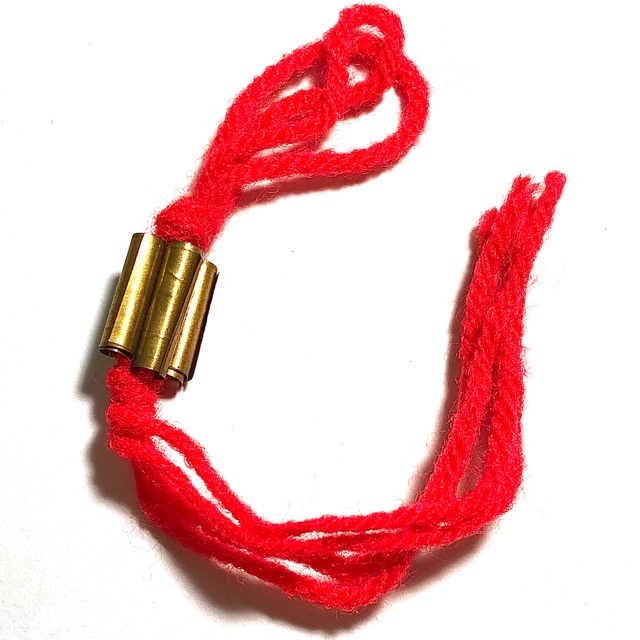
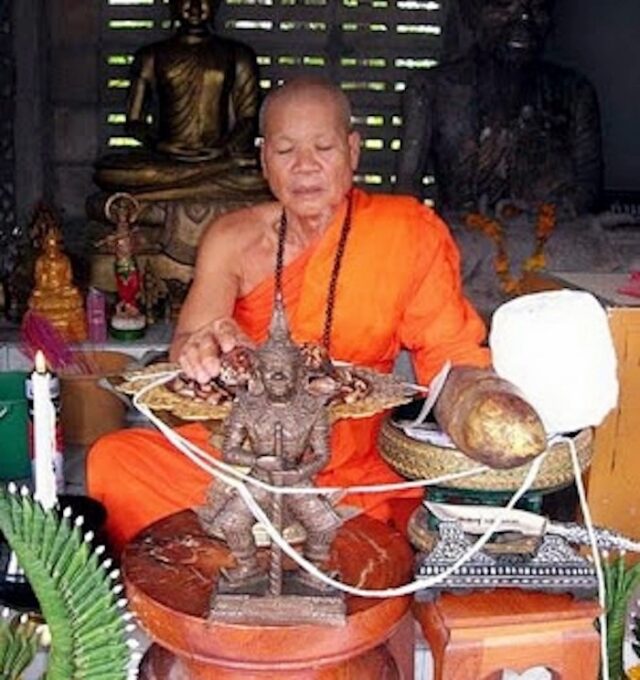
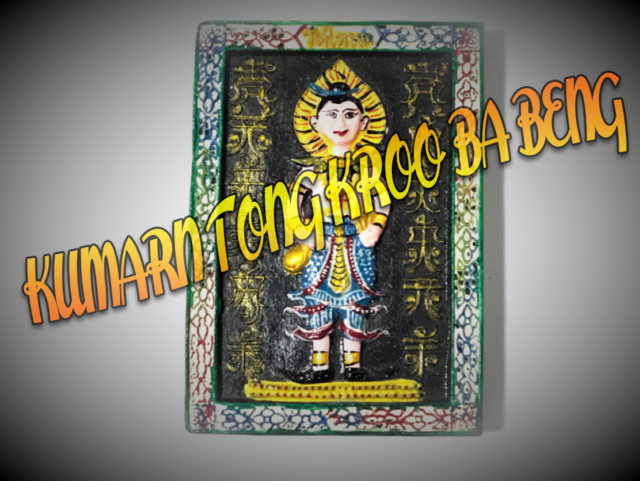
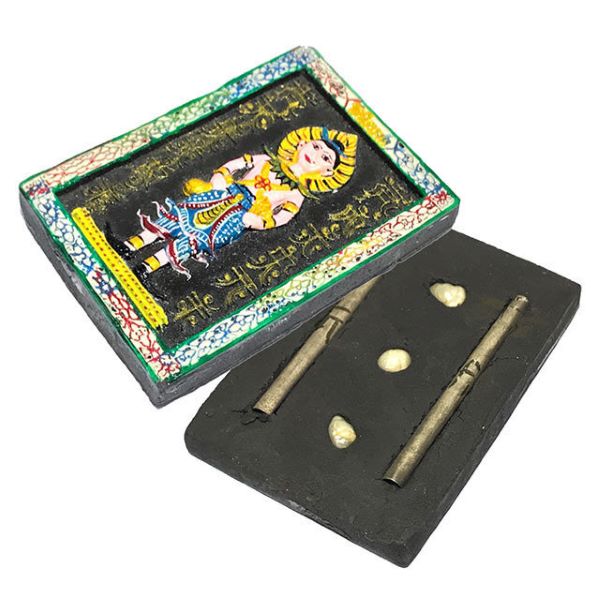
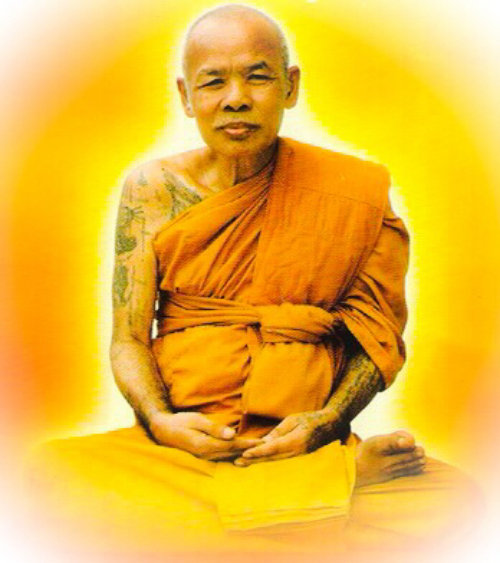
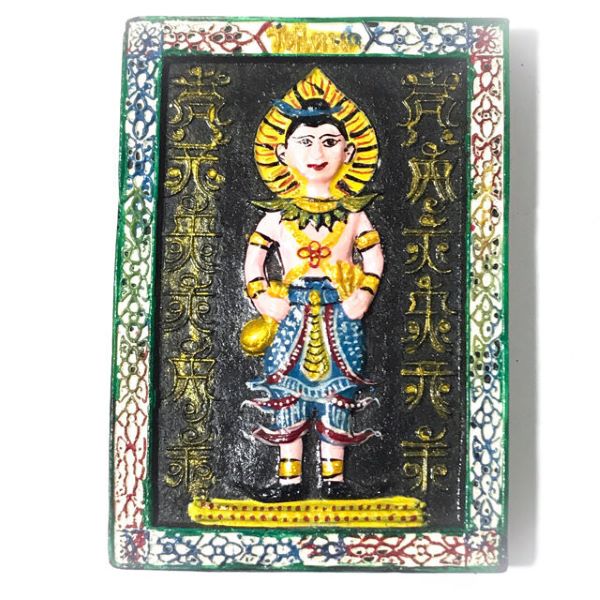
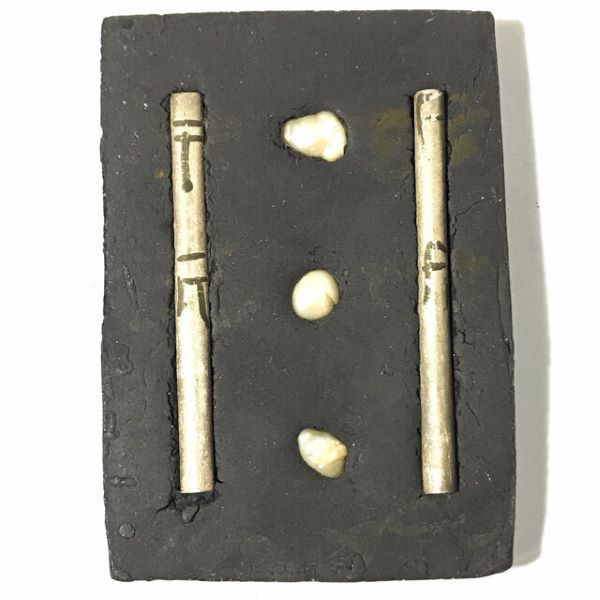
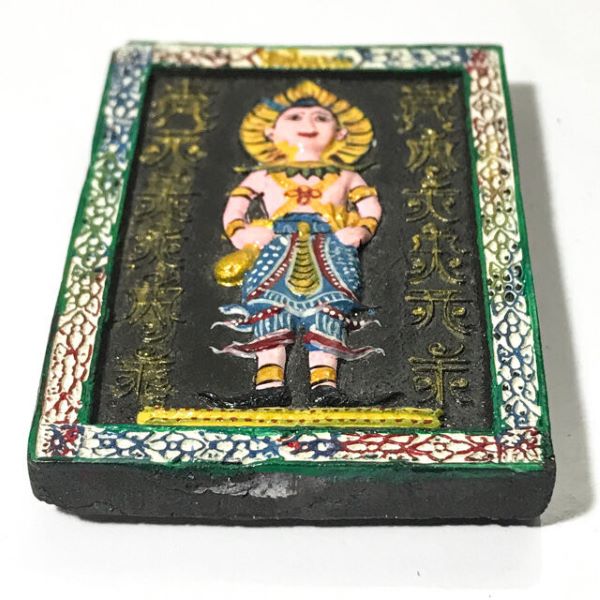
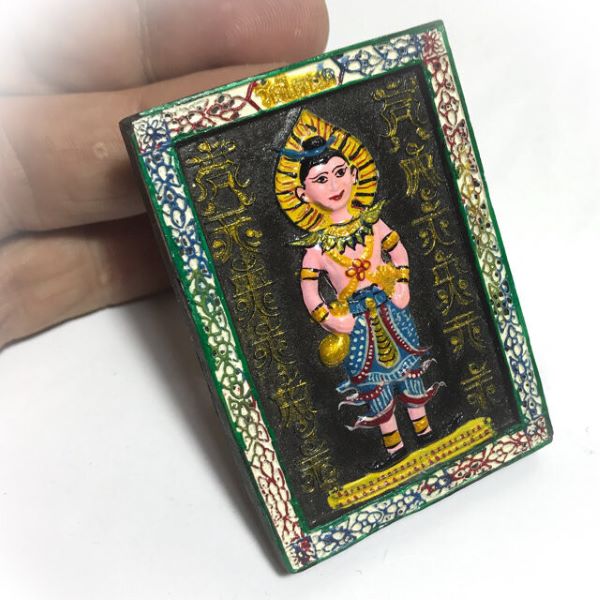
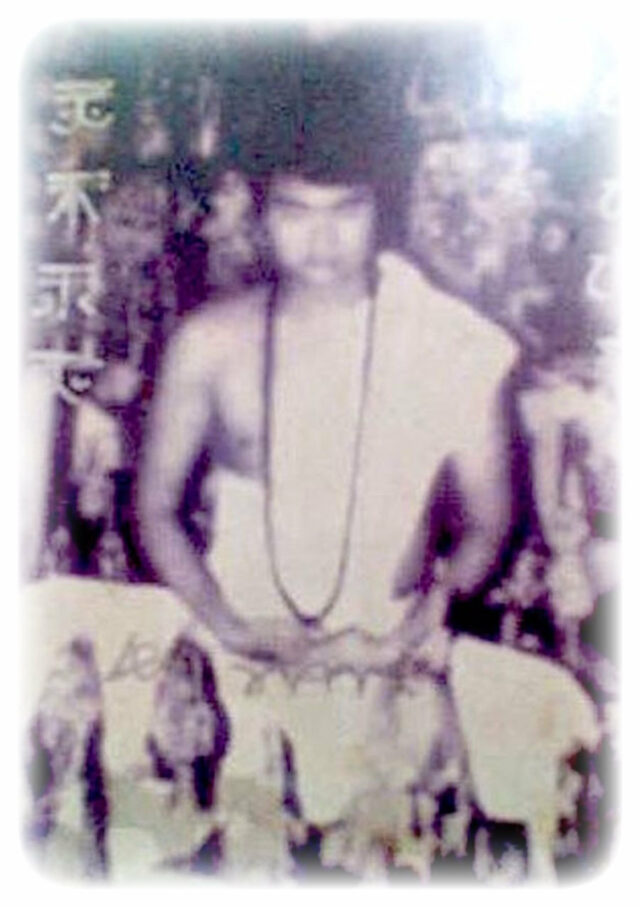
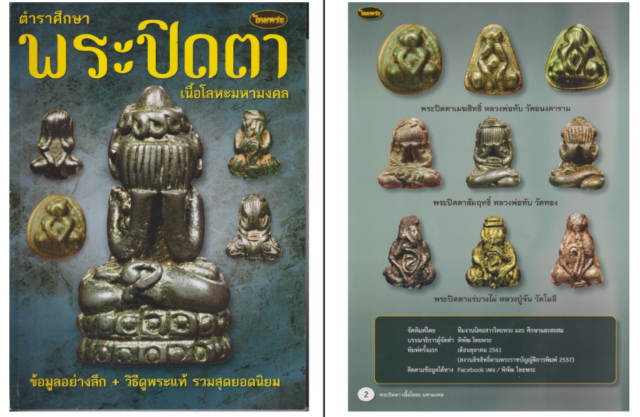
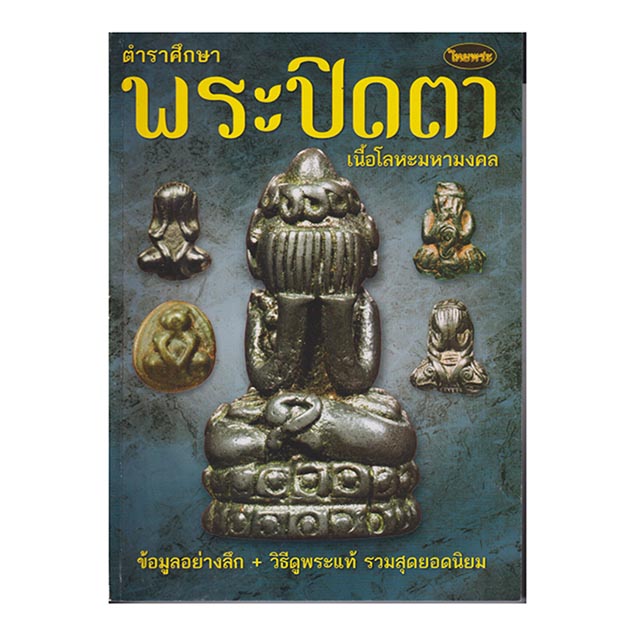
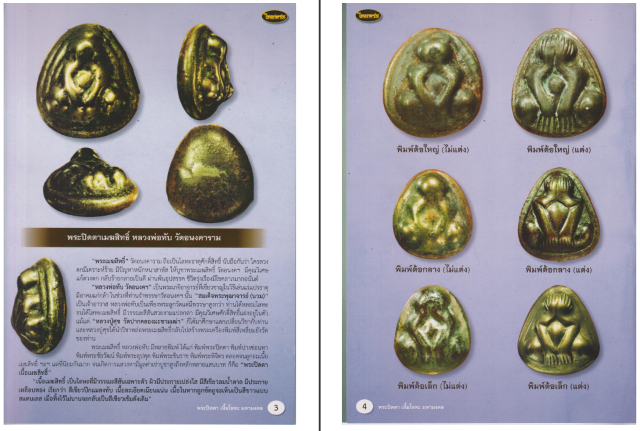
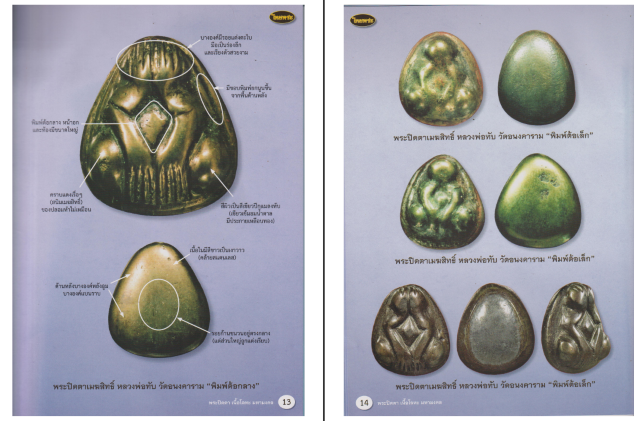
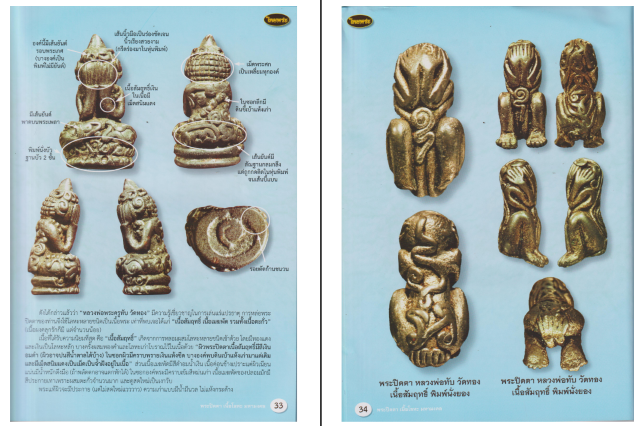
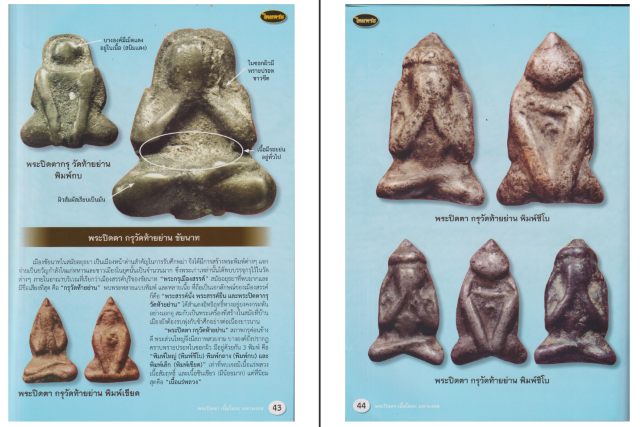
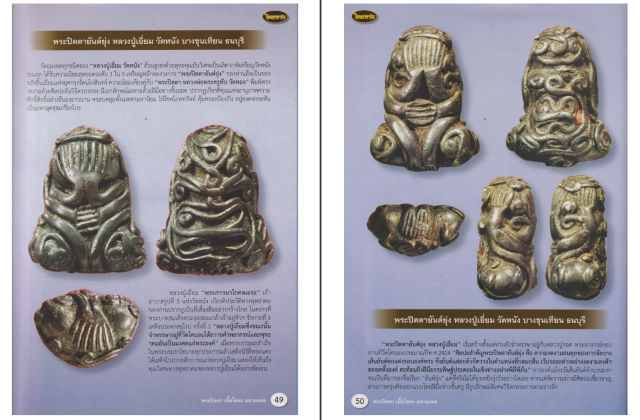
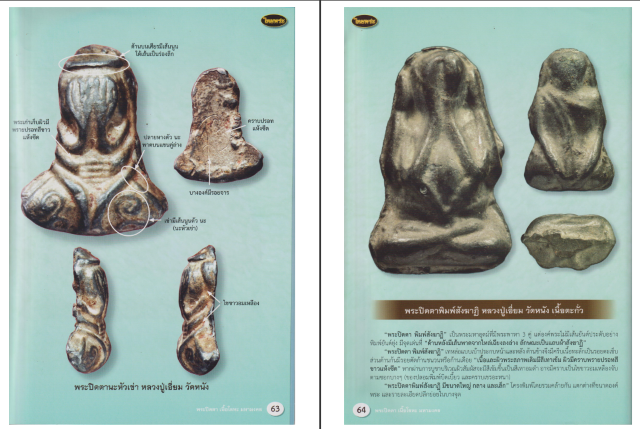
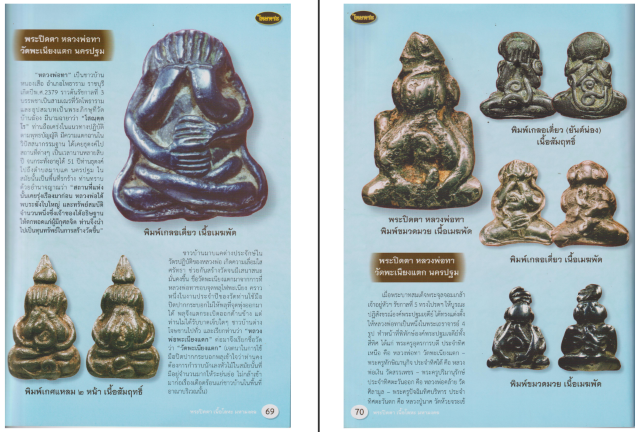
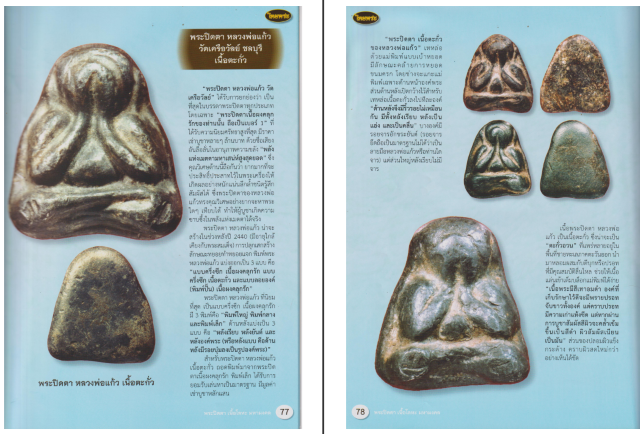
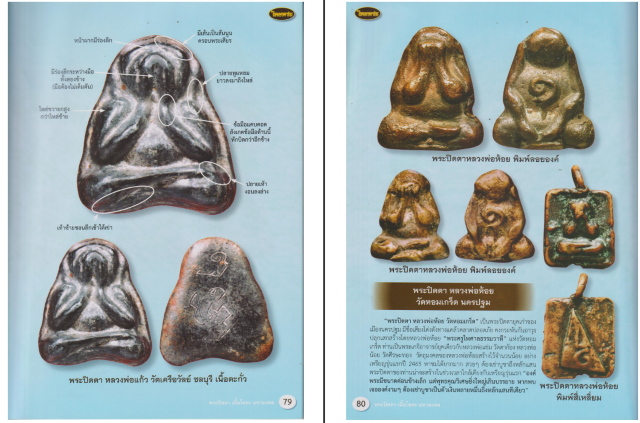
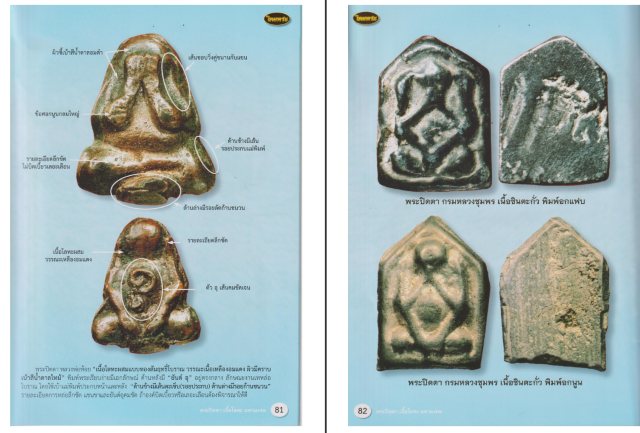
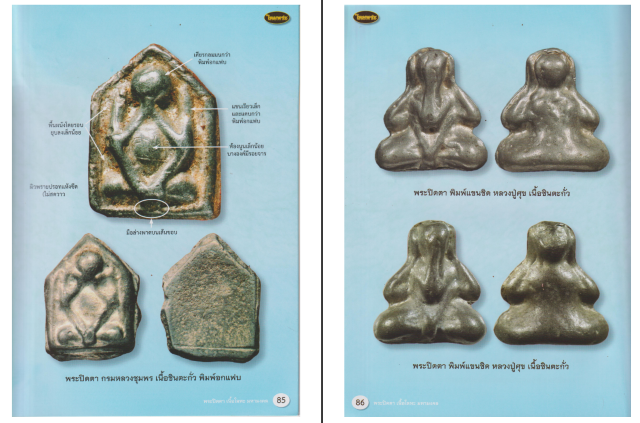
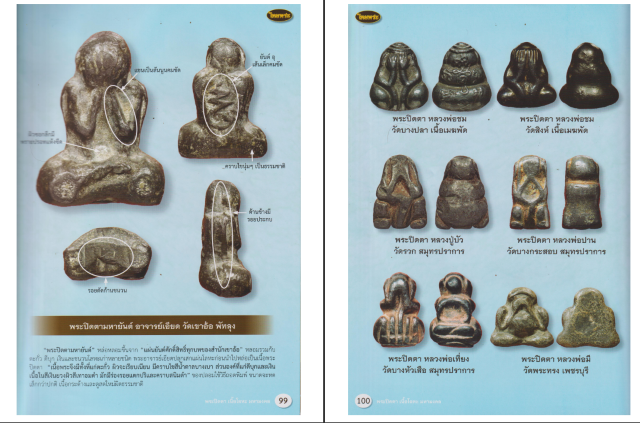
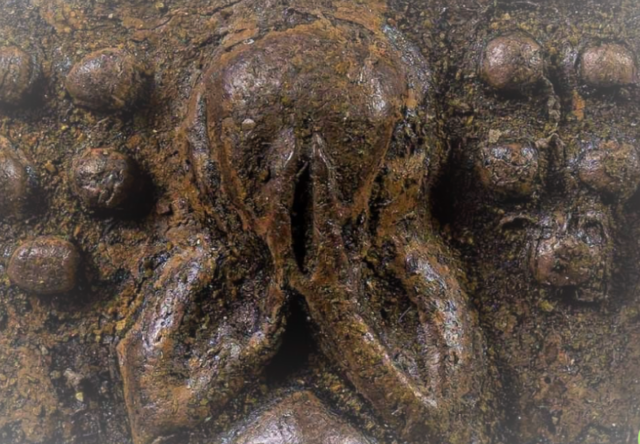
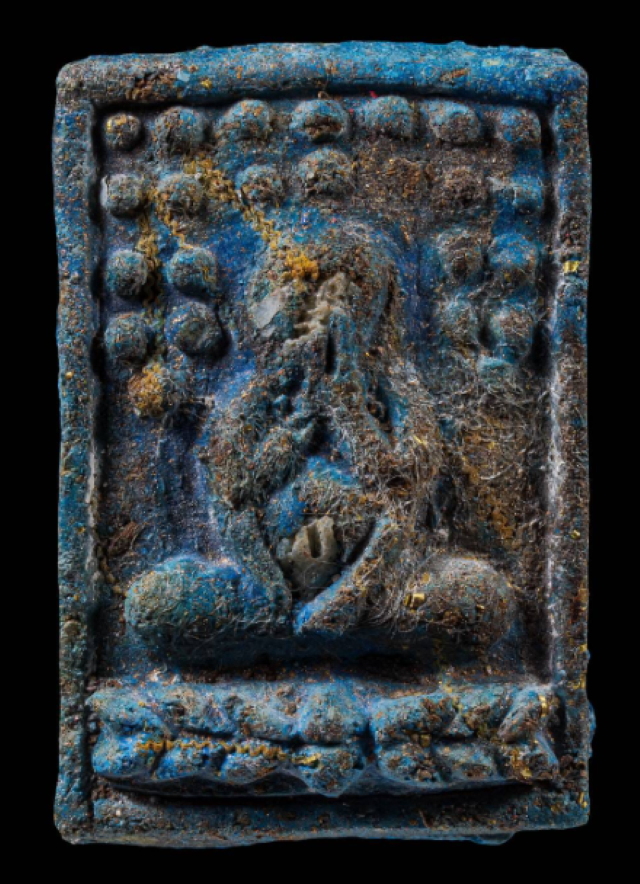
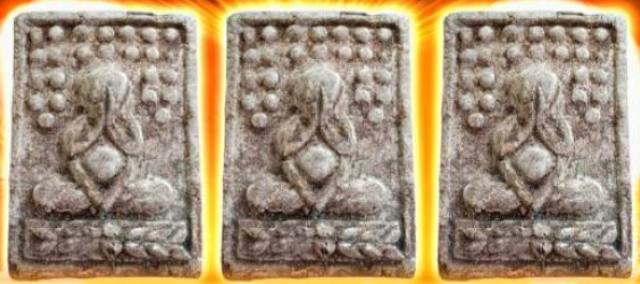
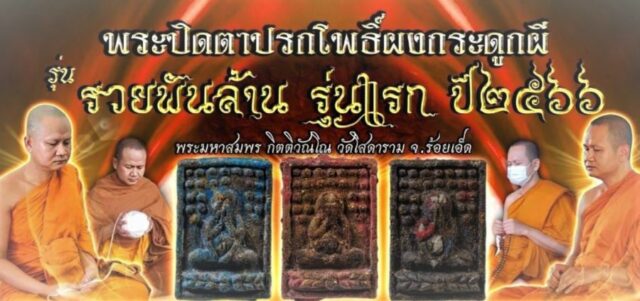
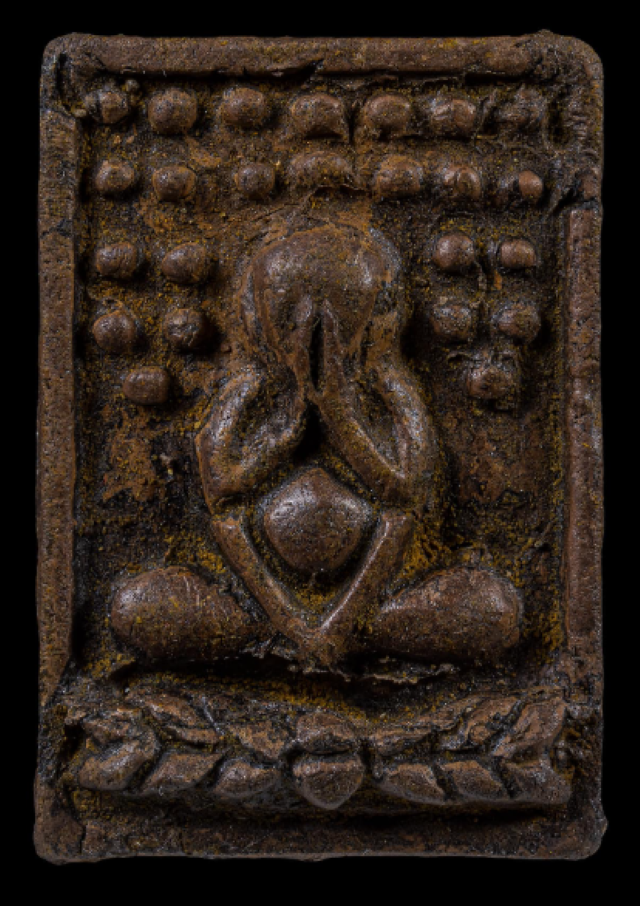
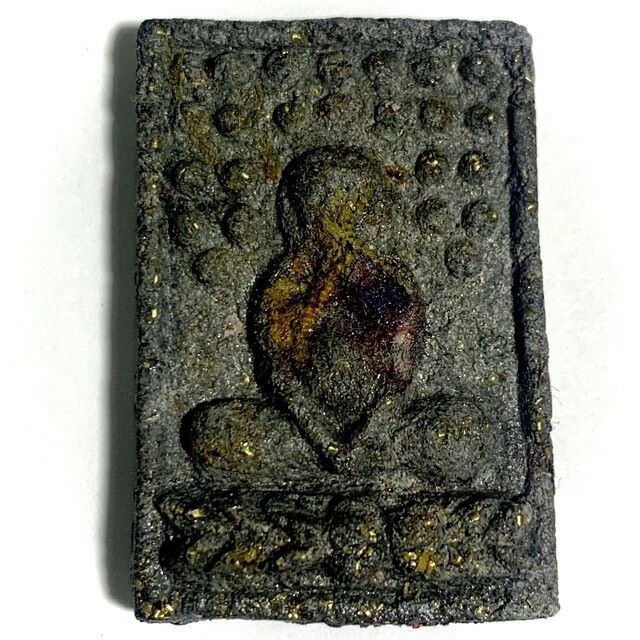
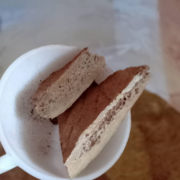
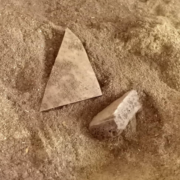

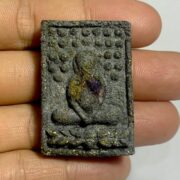
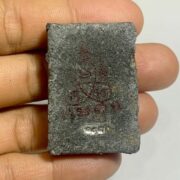
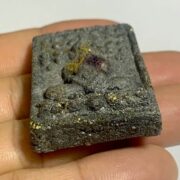
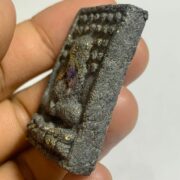
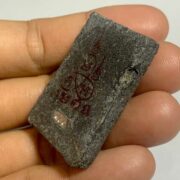
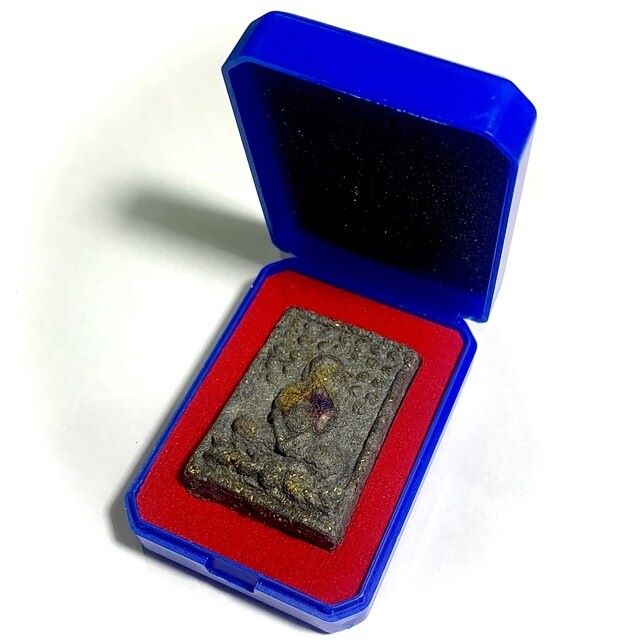
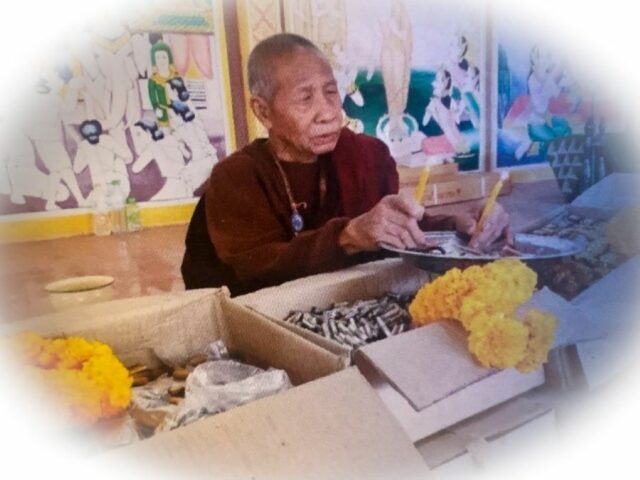
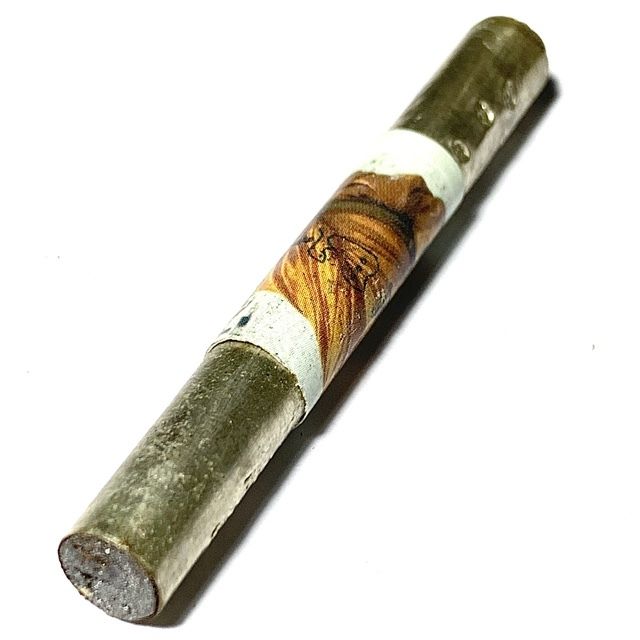
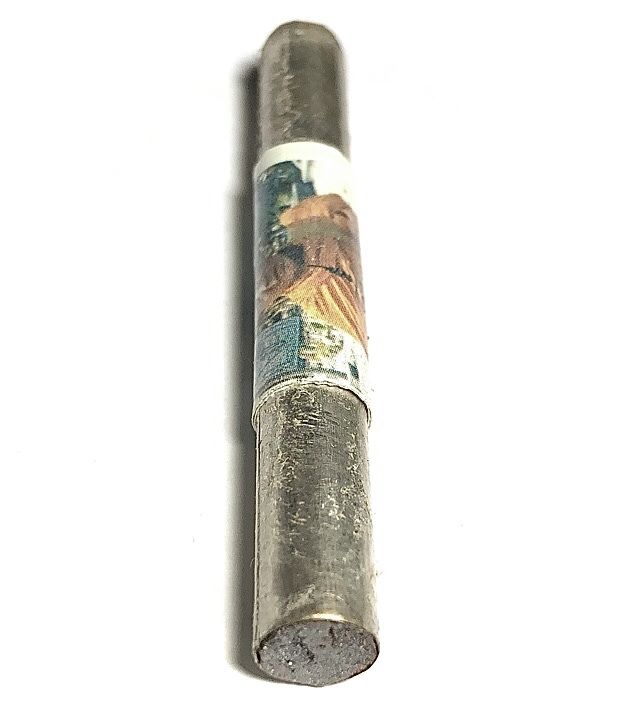
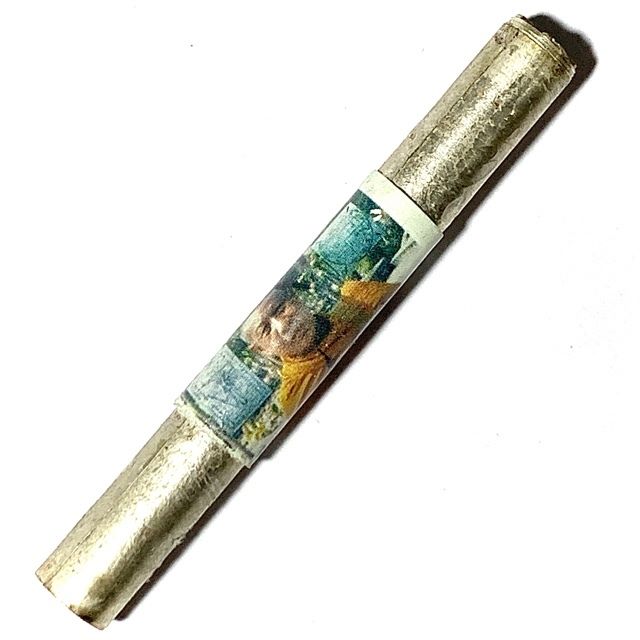

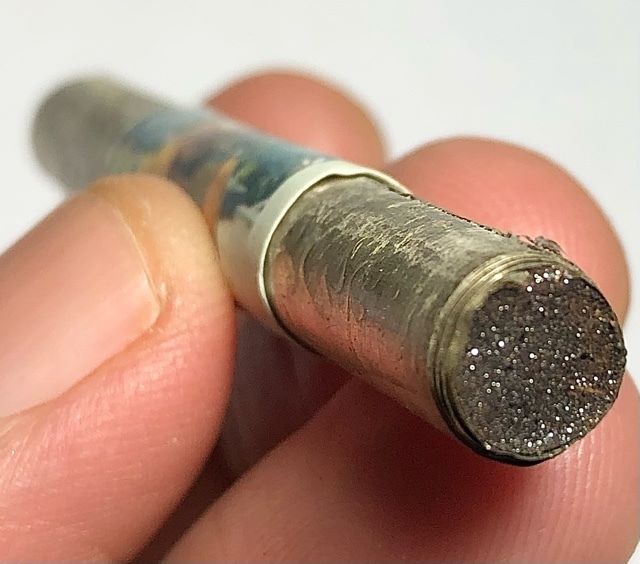
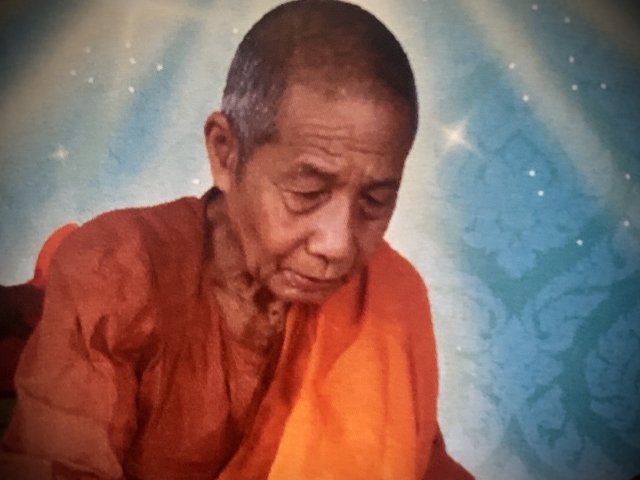
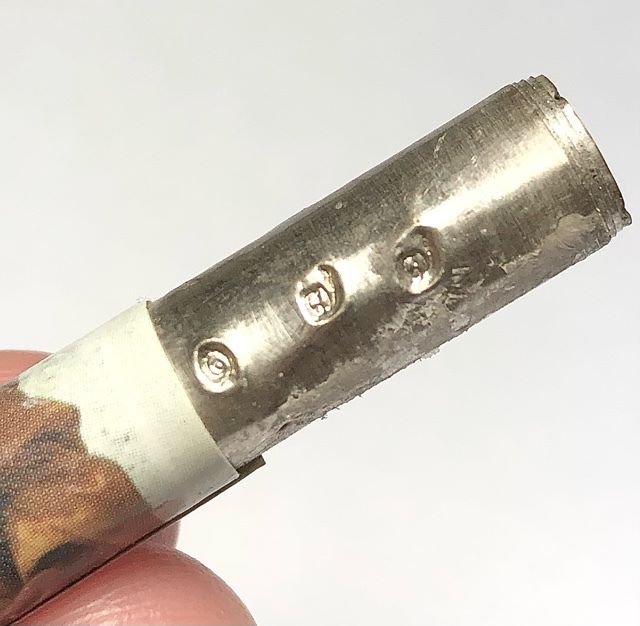
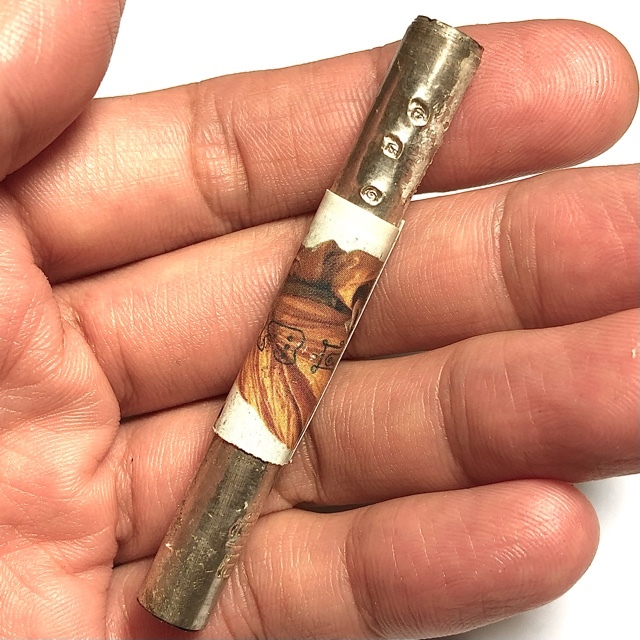


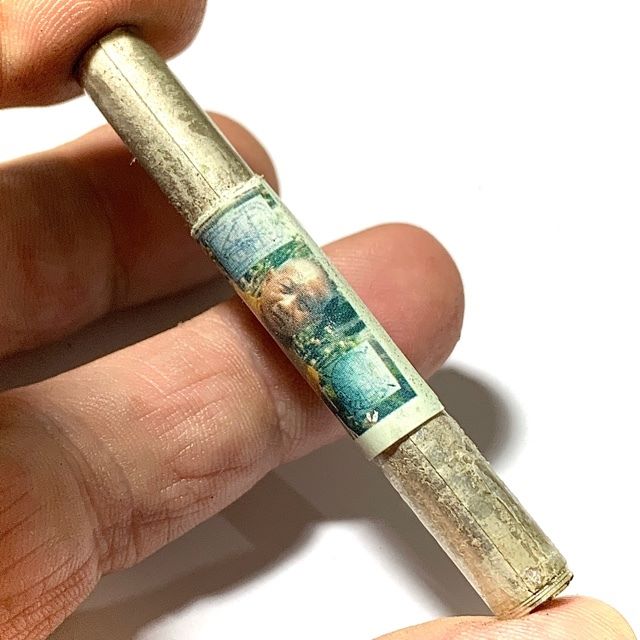
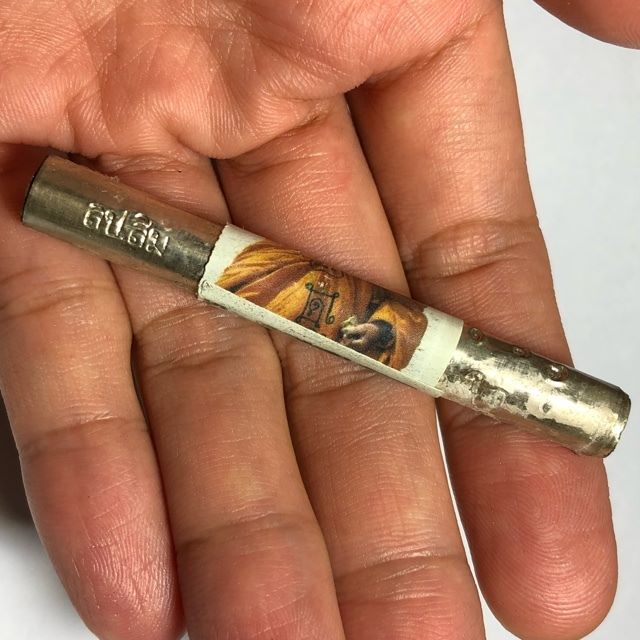
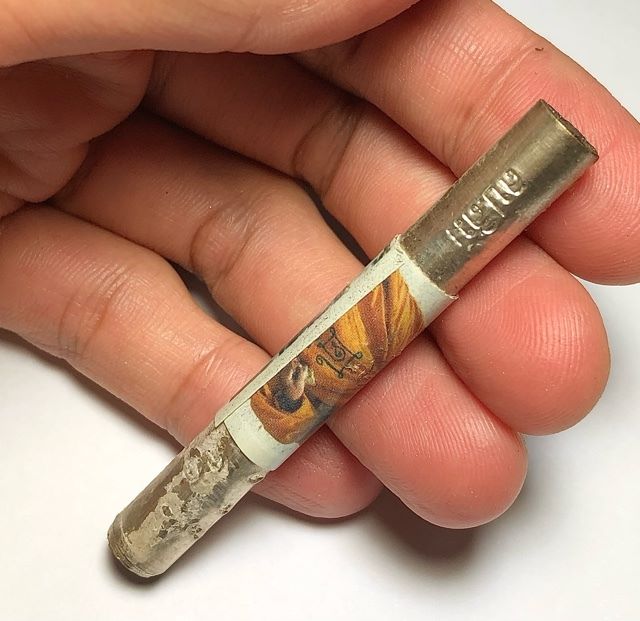
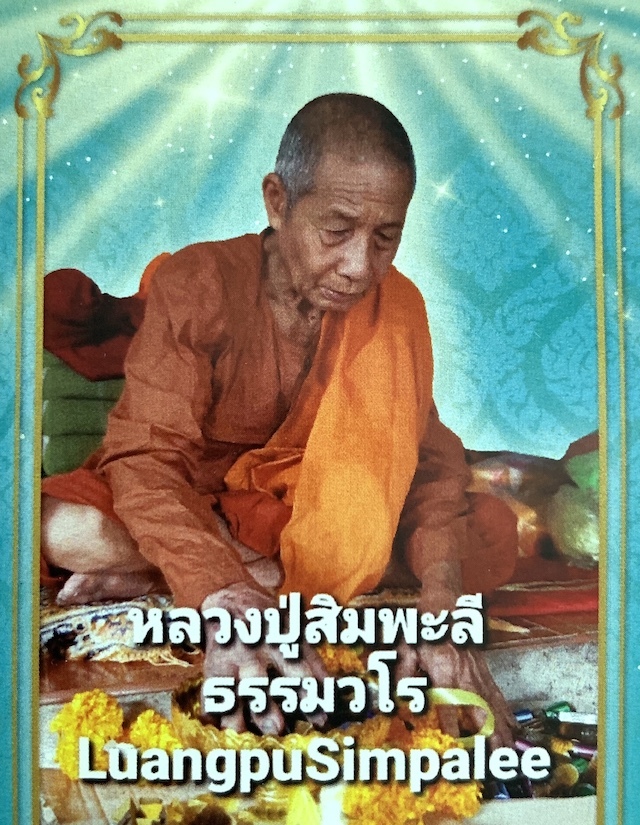
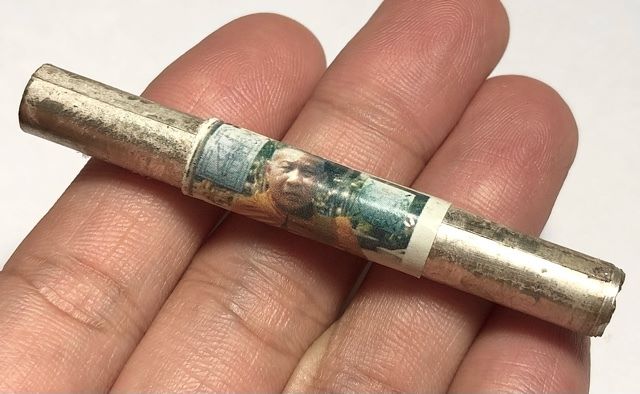
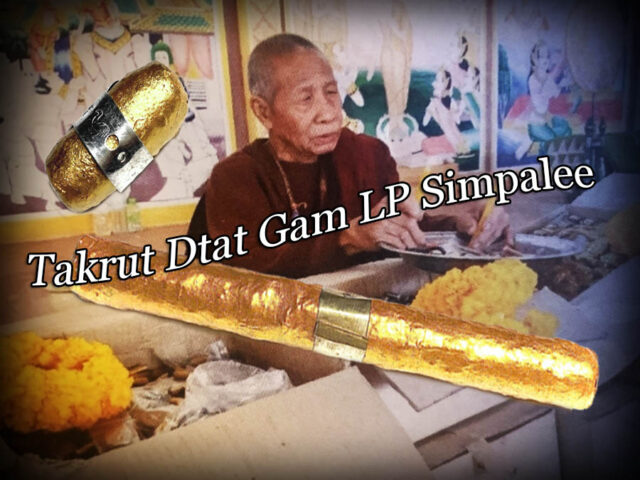
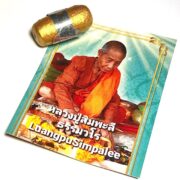
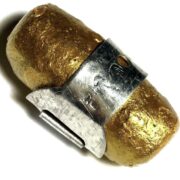
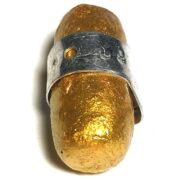
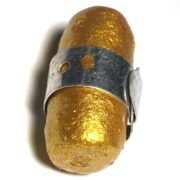
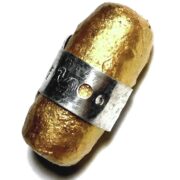
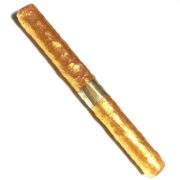
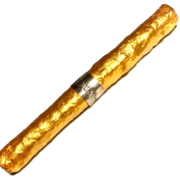
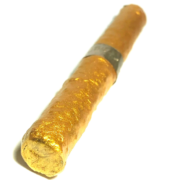
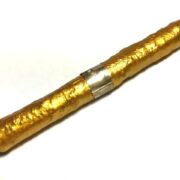
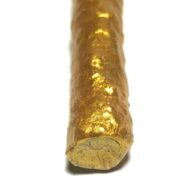

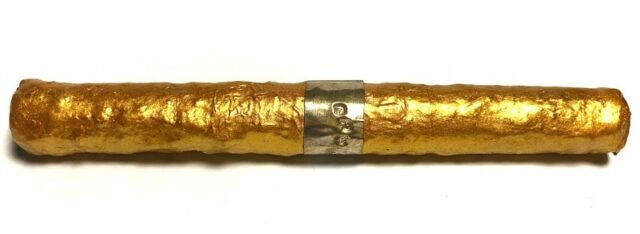
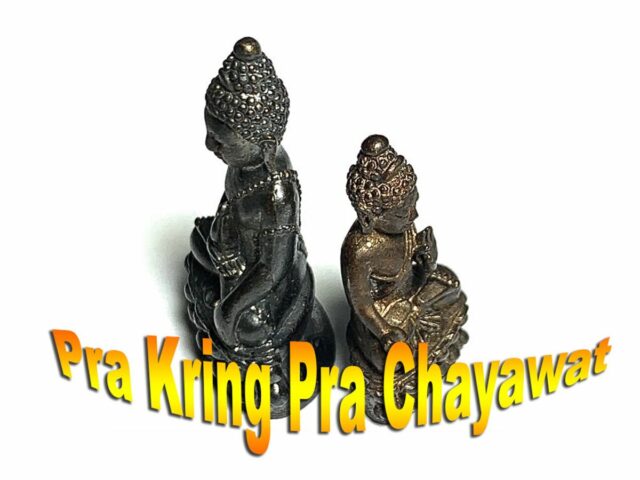
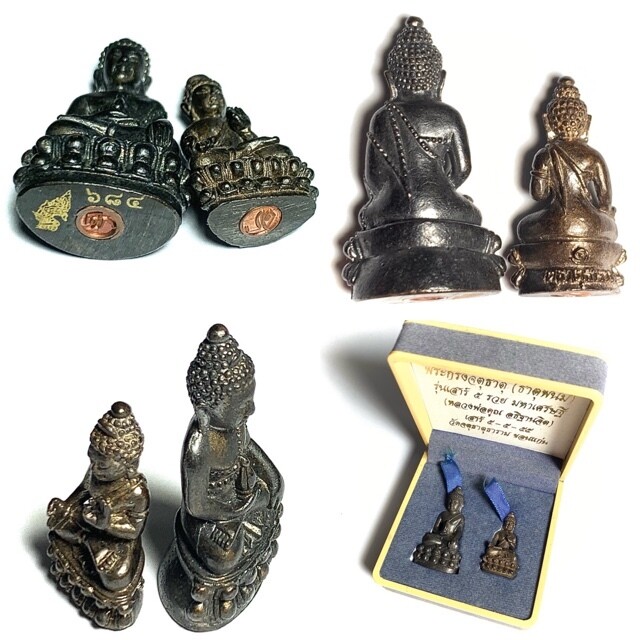

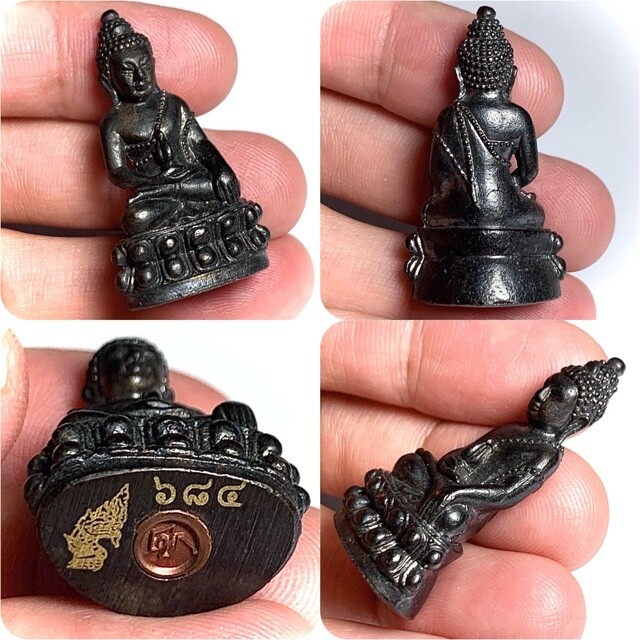
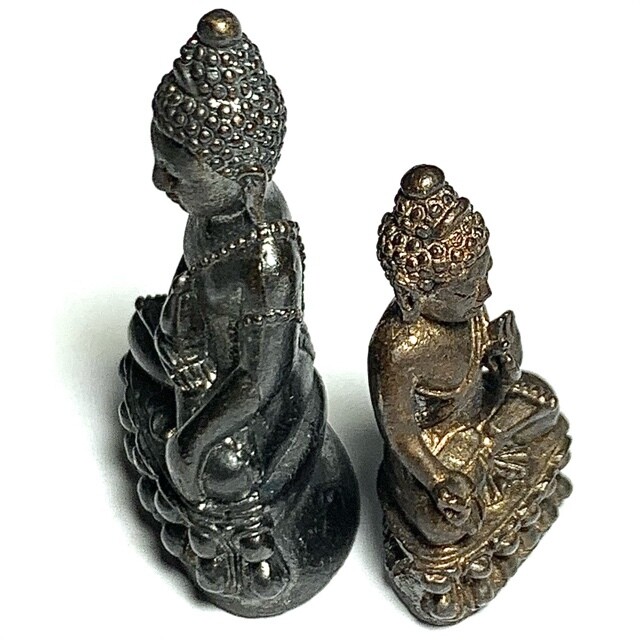
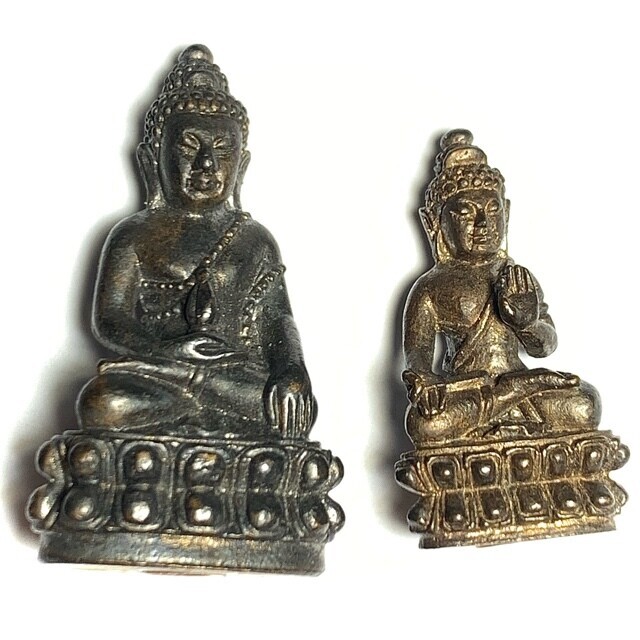
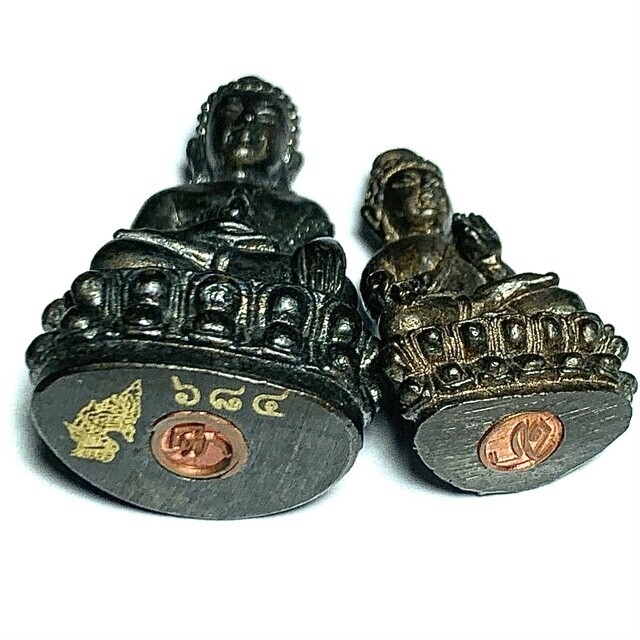
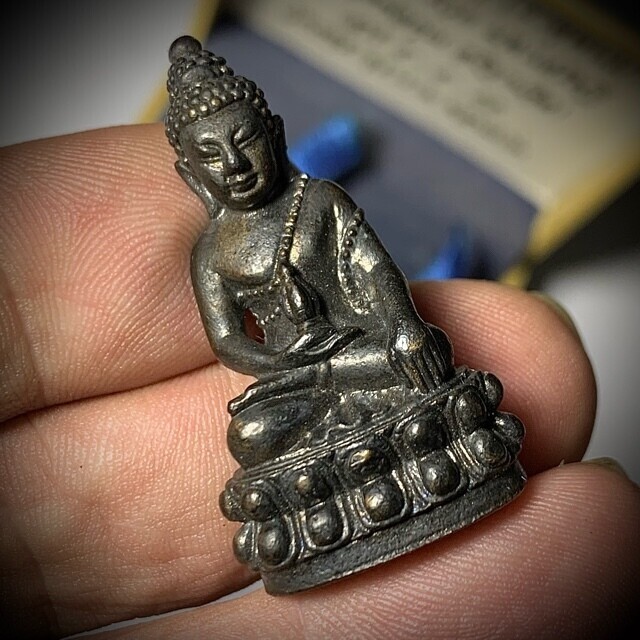


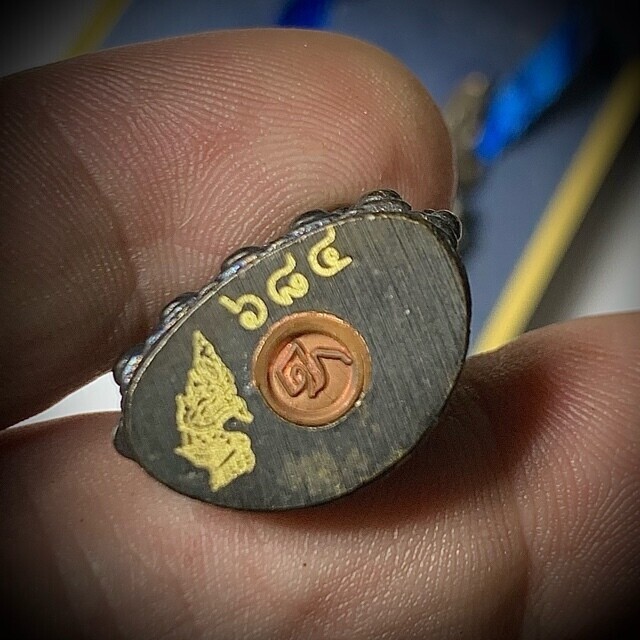

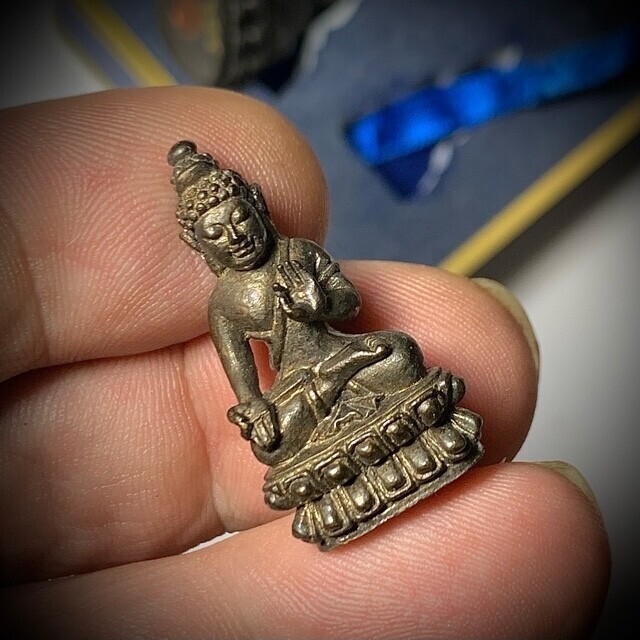


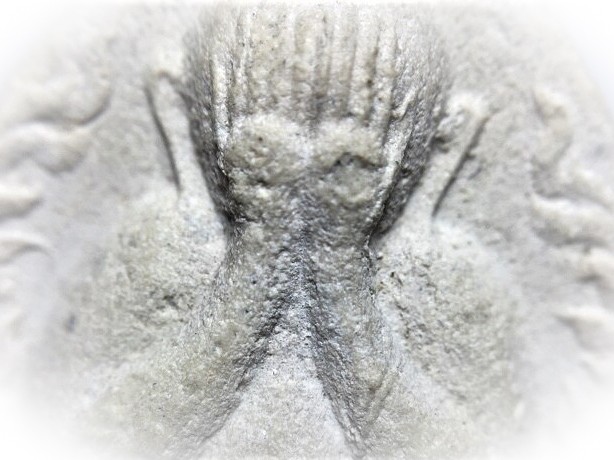
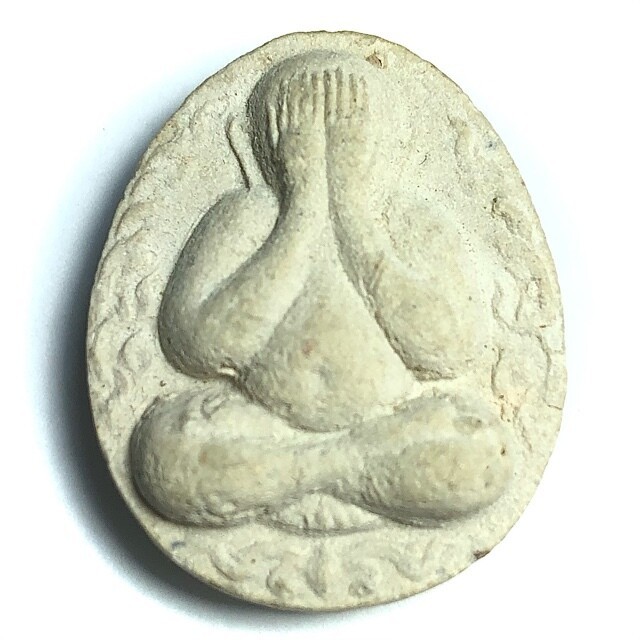
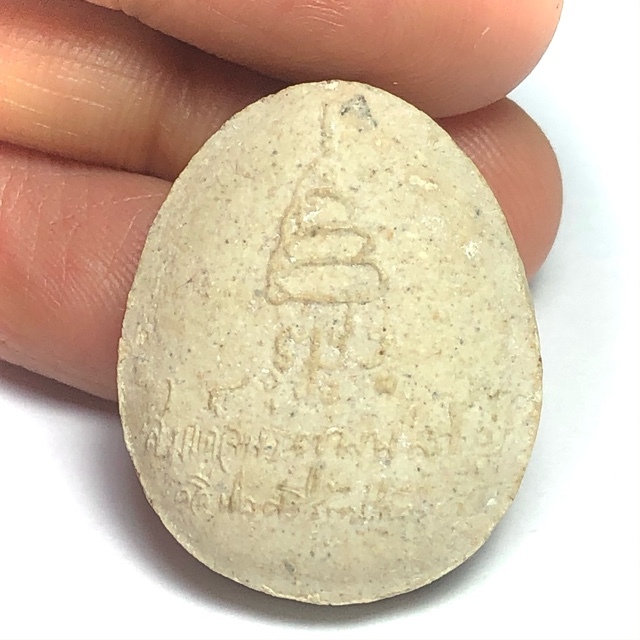

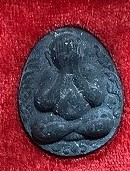
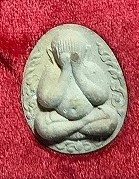
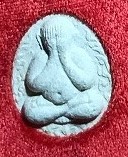

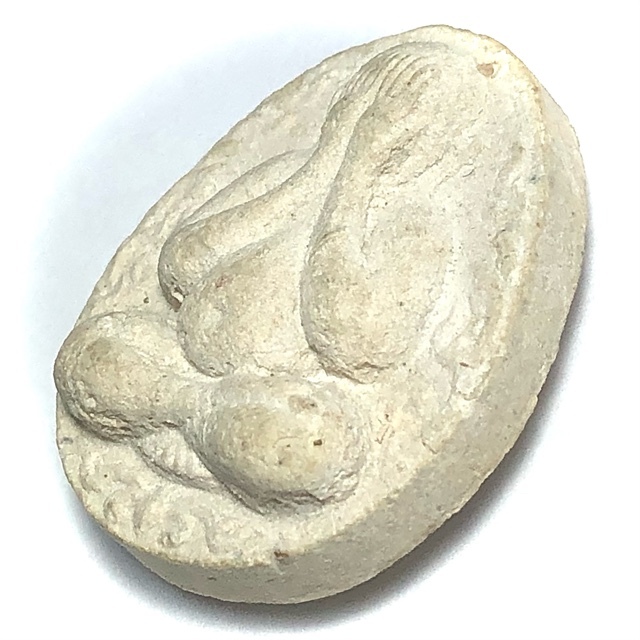
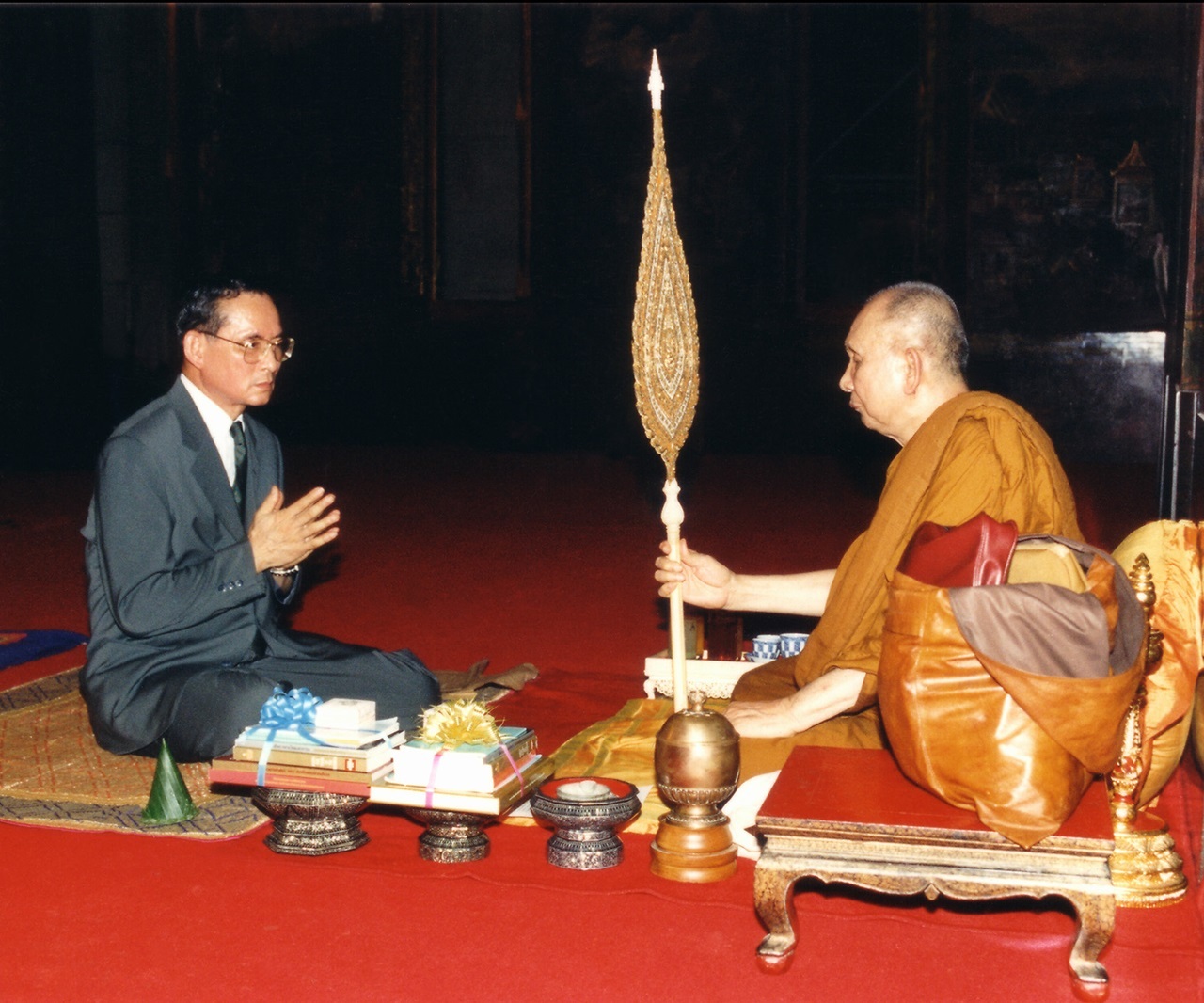
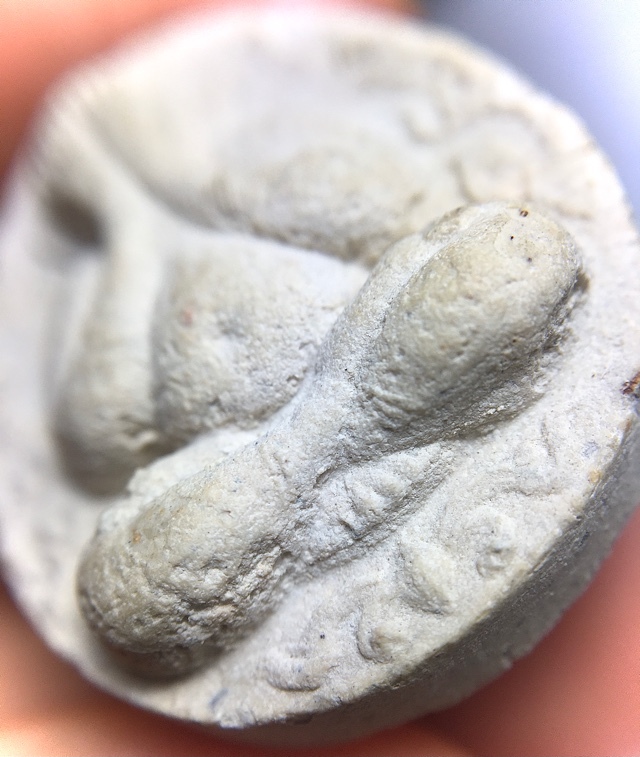
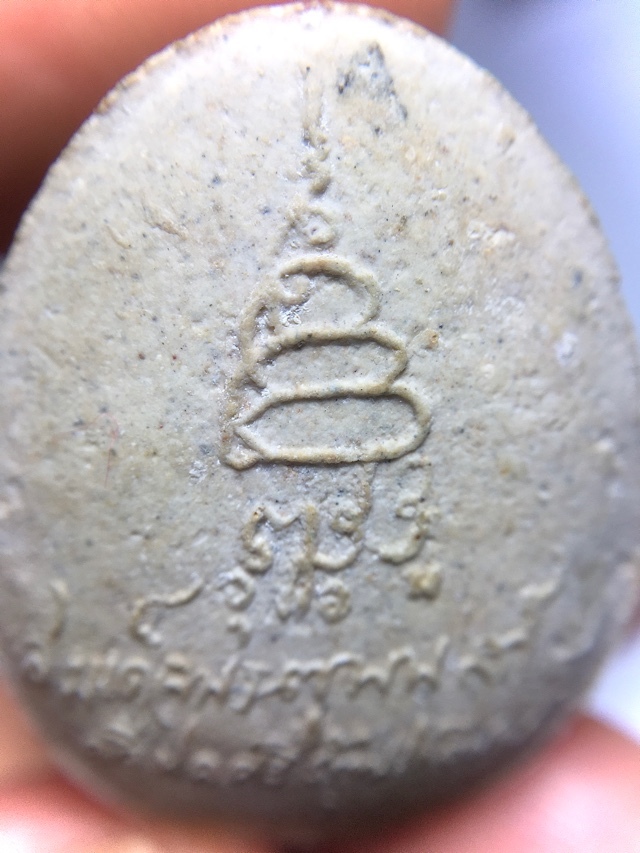
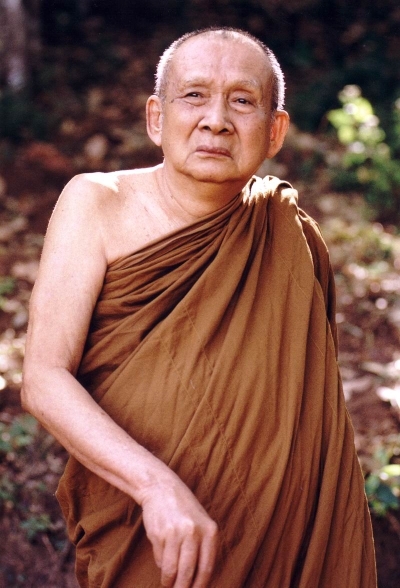
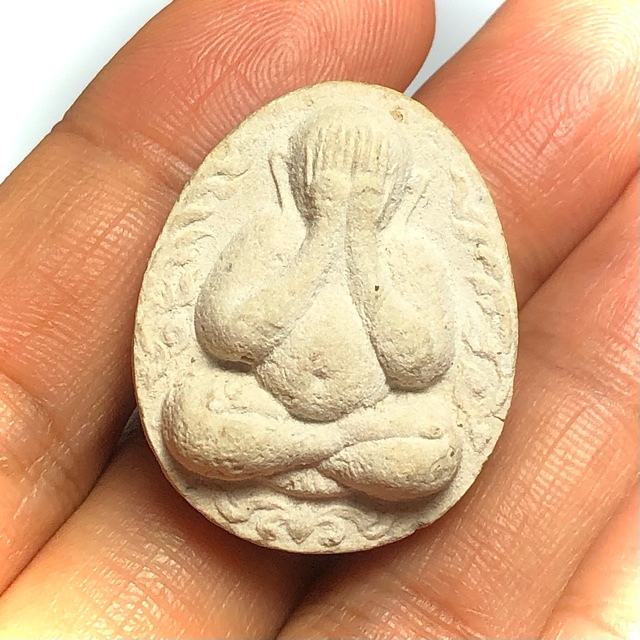
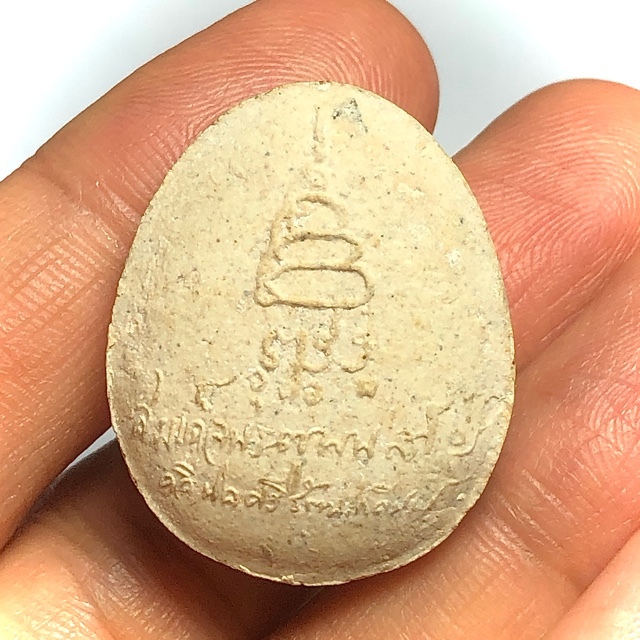
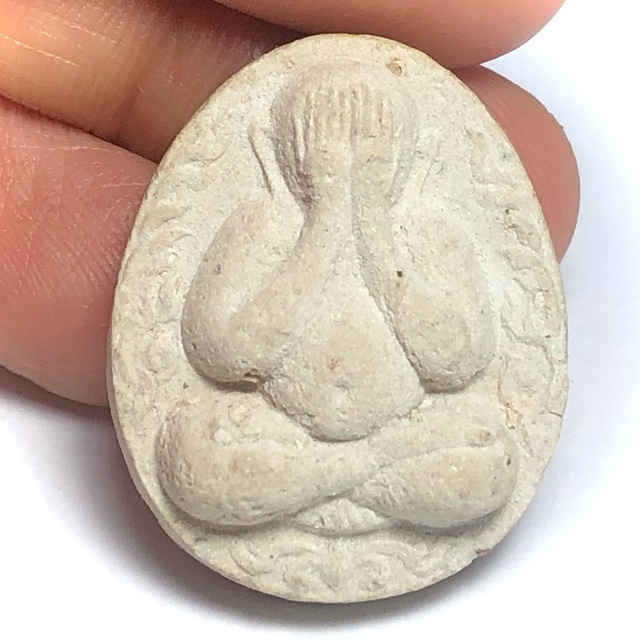
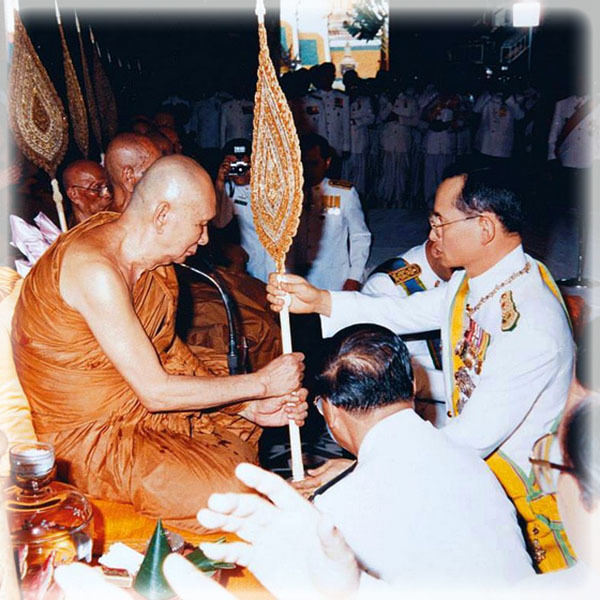
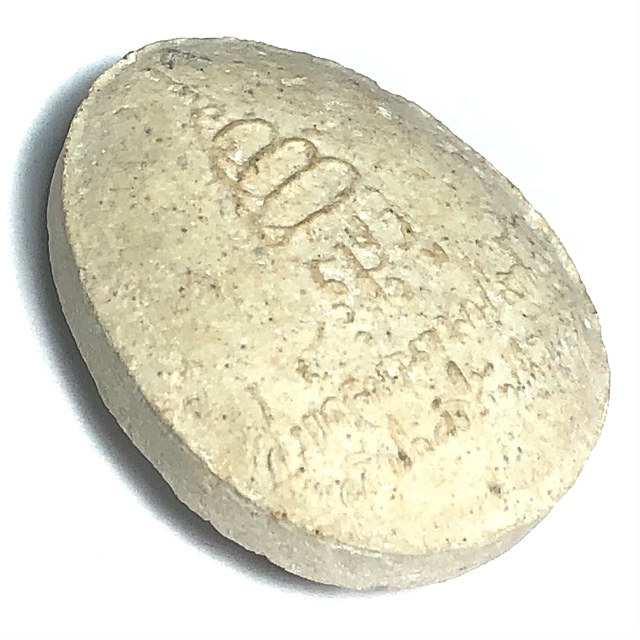
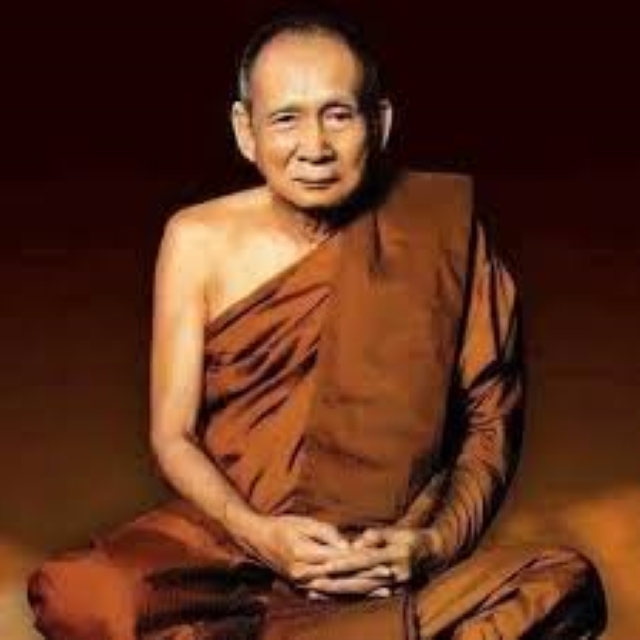
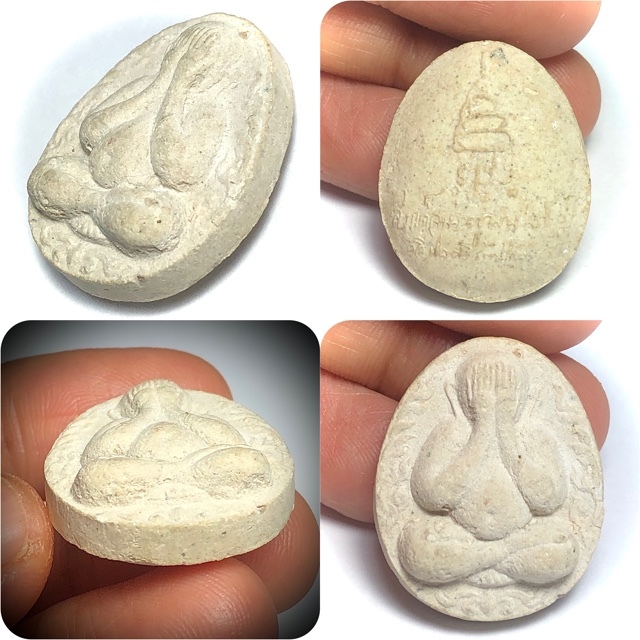
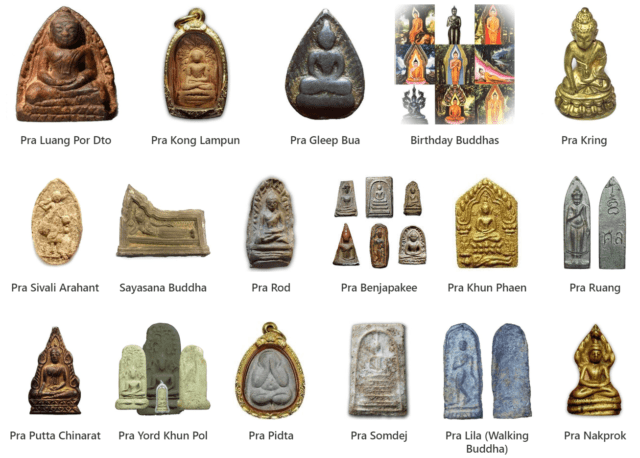
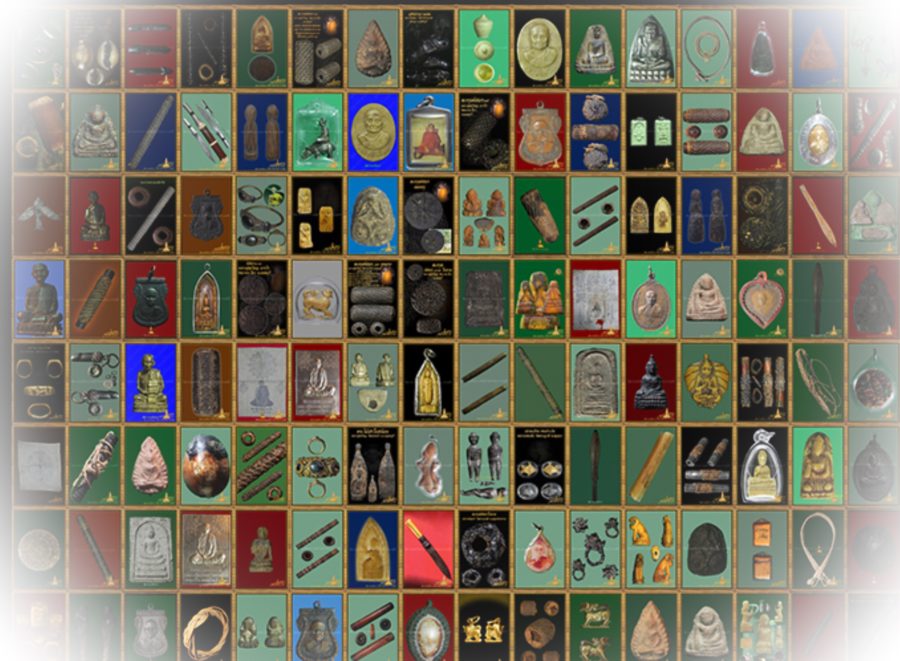
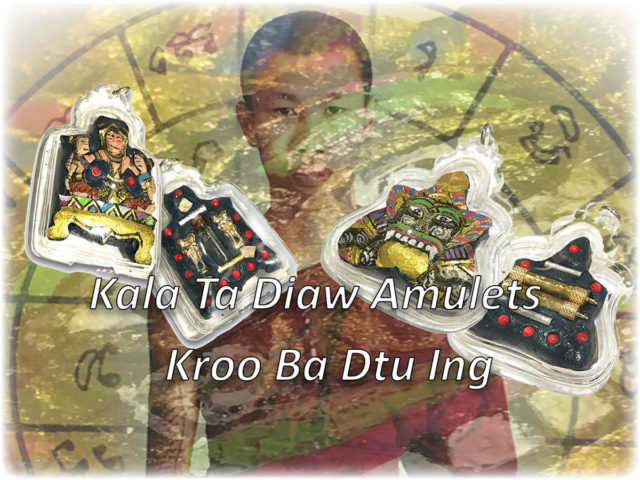
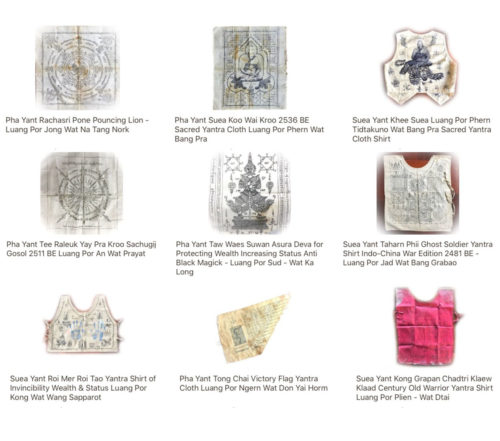
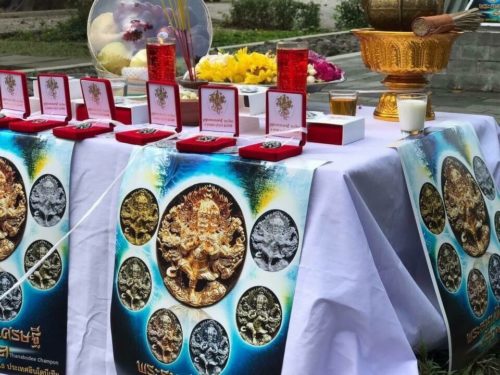
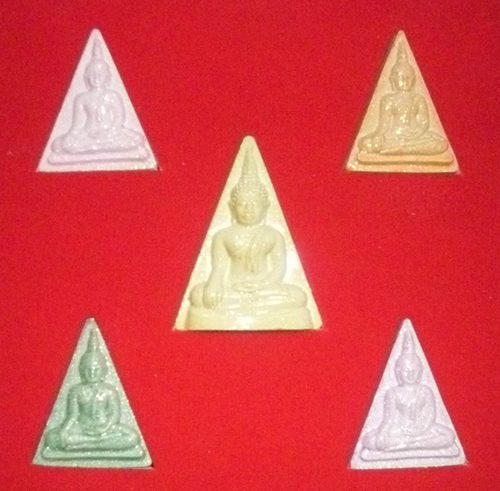
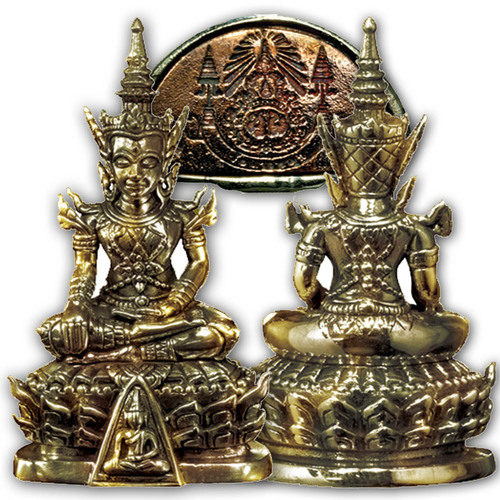
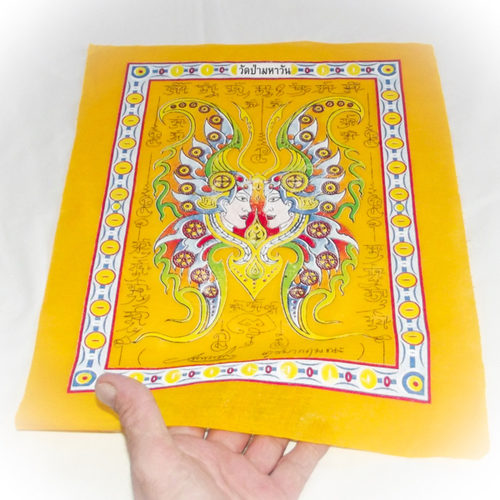
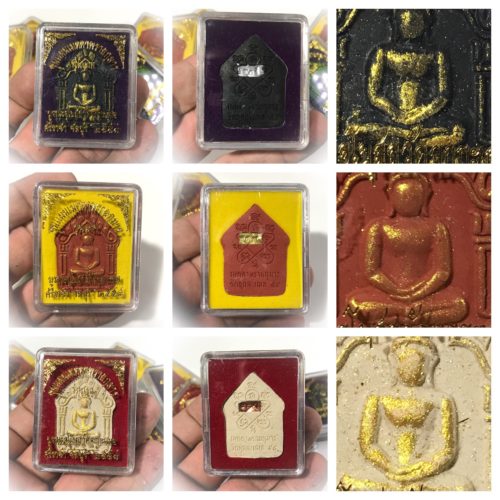
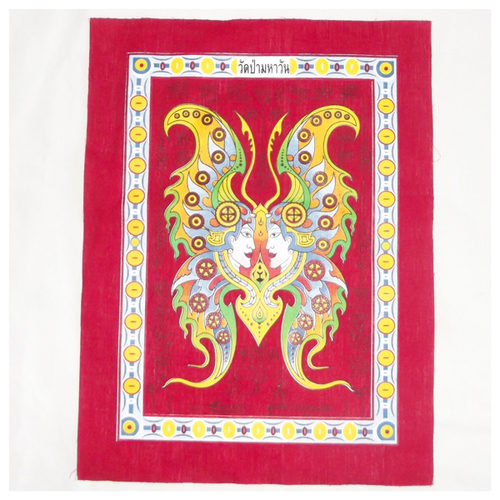
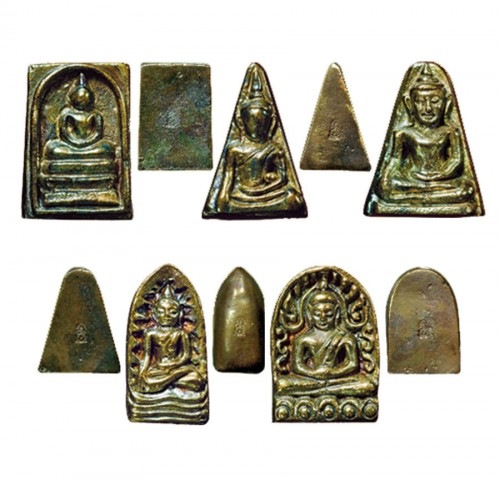
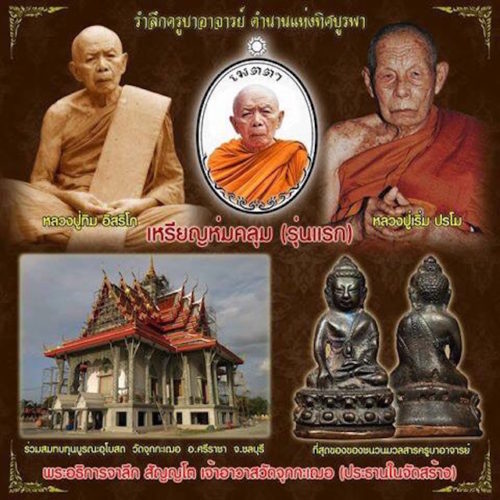
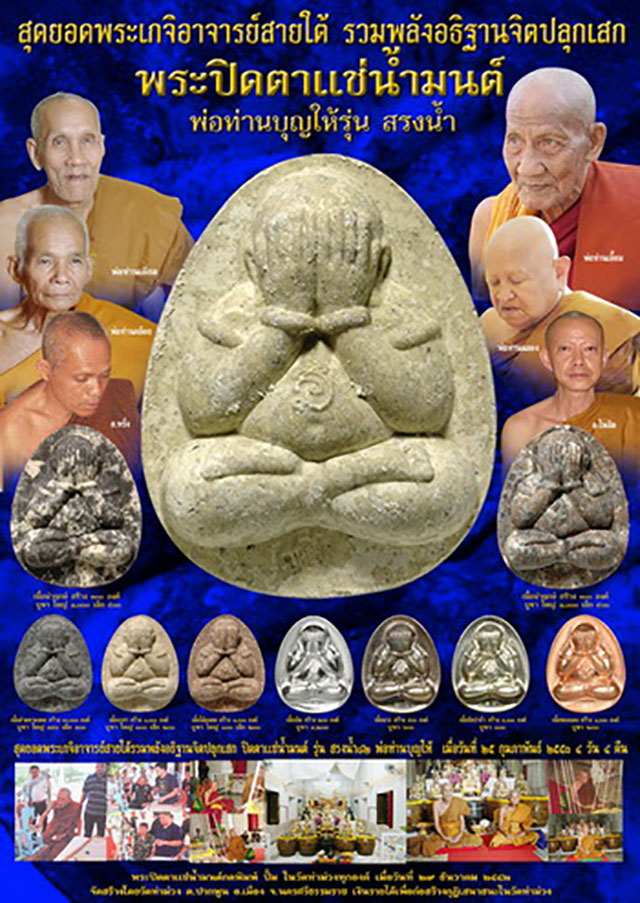
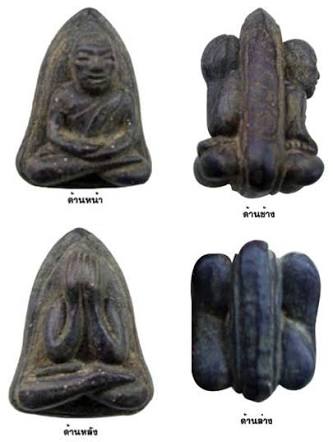
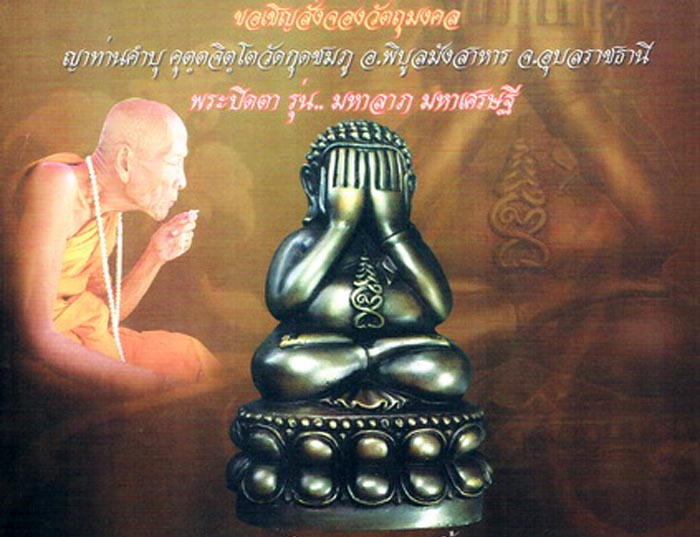
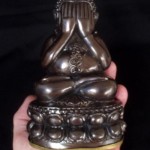
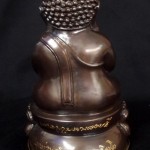
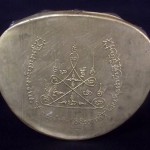




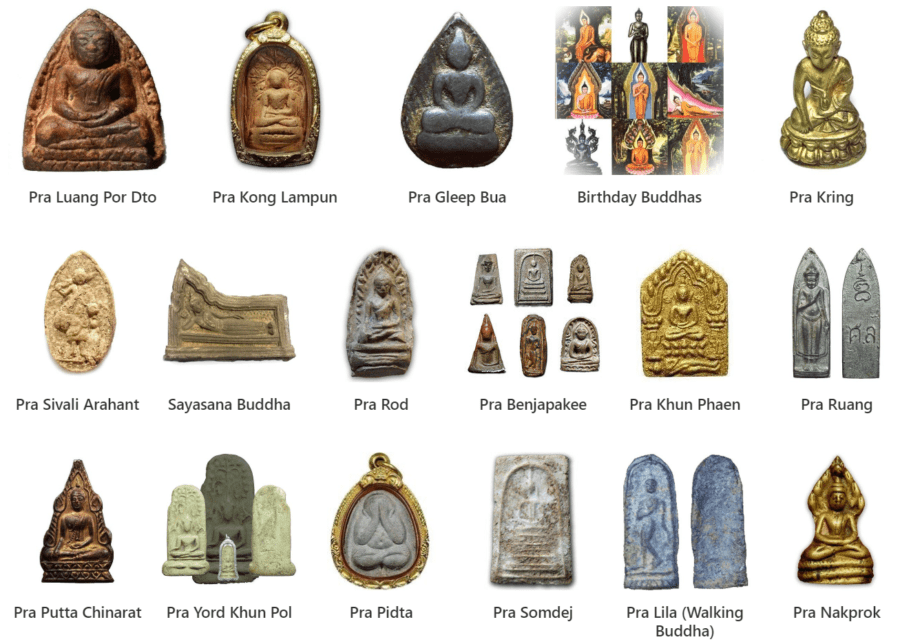


 Subscribe for Latest Updates
Subscribe for Latest Updates

